

How Many Cruise Ships Have Sunk?
The thought of a cruise ship sinking conjures images of historic maritime tragedies, sparking curiosity and concern among modern travelers.
Despite the advancements in safety and technology, the question lingers in the minds of many: How many cruise ships have actually sunk? In this article, we dive deep into the annals of maritime history and safety records to uncover the truth.
By examining the rare instances of cruise ship sinkings, we’ll provide perspective on the safety of cruising today.
Whether you’re a maritime history enthusiast or planning your next vacation at sea, understanding these incidents sheds light on the impressive safety standards that protect millions of passengers each year.
The Titanic Tragedy (April 1912)
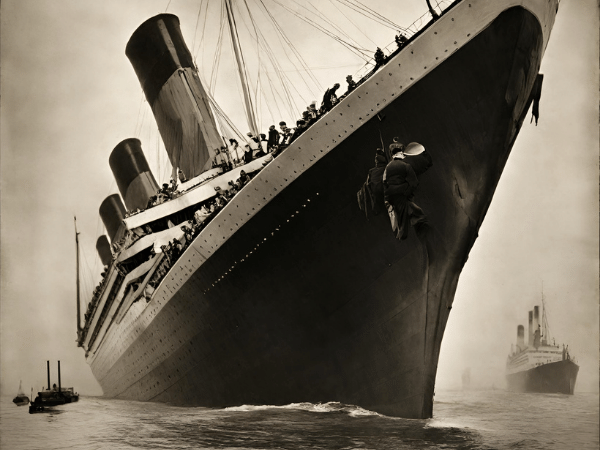
The Titanic’s sinking is one of the most well-known maritime disasters. On its first trip across the Atlantic Ocean, the ship hit an iceberg on the night of April 14, 1912. In just over two and a half hours, the Titanic was completely underwater. Sadly, most passengers couldn’t evacuate safely because there weren’t enough lifeboats for everyone.
The disaster led to more than 1,500 deaths, making it one of the deadliest incidents at sea. The freezing waters made survival even harder for those who couldn’t get on a lifeboat. The Titanic’s sinking is remembered as a tragic event in maritime history.
The Empress of Ireland Tragedy (May 1914)
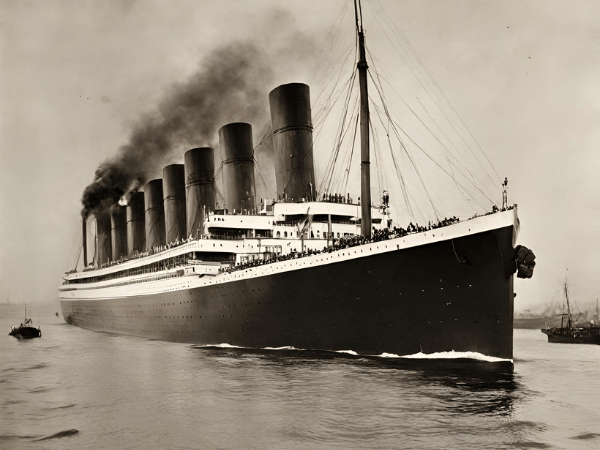
Just two years after the Titanic sank, the Empress of Ireland had its own tragic accident. In May 1914, this ship with nearly 1,500 passengers hit the Norwegian ship Storstad. They could see each other earlier, but then fog made it hard to see.
The crash caused 1,012 passengers and crew to lose their lives. The Empress of Ireland was close to making 1,000 trips without any problems, but this was not one of them. This accident is another sad event in the history of ships at sea.
The Sinking of the Lusitania (May 1915)
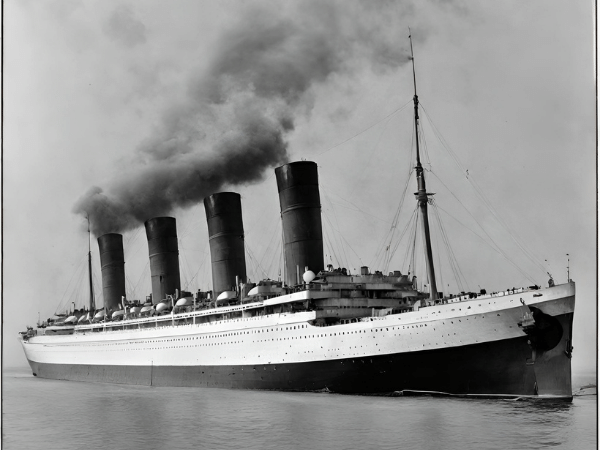
Cunard Line has been operating ships since 1940 and is still active today. One of its famous ships is the Queen Mary 2, the last ocean liner still in service.
The RMS Lusitania, built for Cunard Line, was the world’s largest passenger ship for three months. On May 7, 1915, while sailing off the coast of Ireland to Liverpool, England, a German U-Boat torpedoed the Lusitania. The ship started to sink faster than expected, and only six lifeboats could be launched.
Nearly 1,200 people died in the sinking of the Lusitania. This event is remembered as one of the major maritime tragedies of the early 20th century.
The Britannic’s Fate (November 1916)
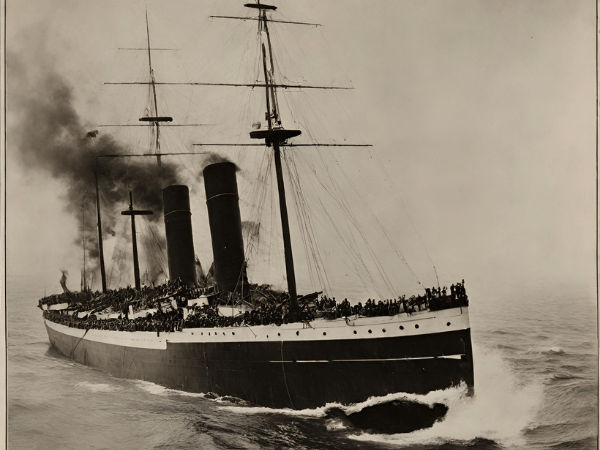
The Britannic was the younger sister of the Olympic (1911) and Titanic (1912). Although intended to be a passenger ship, the outbreak of World War I changed her purpose. She became a hospital ship in December 1915.
In November 1916, less than a year into her service, the Britannic hit a German naval mine in the Kea Channel between the Greek islands of Kea and Makronisos. She sank 55 minutes later.
Fortunately, the casualties were minimal. Most people on board managed to escape on the 35 lifeboats that were launched. However, around 30 people still lost their lives in the sinking of the Britannic.
The Sinking of the Principessa Mafalda (October 1927)
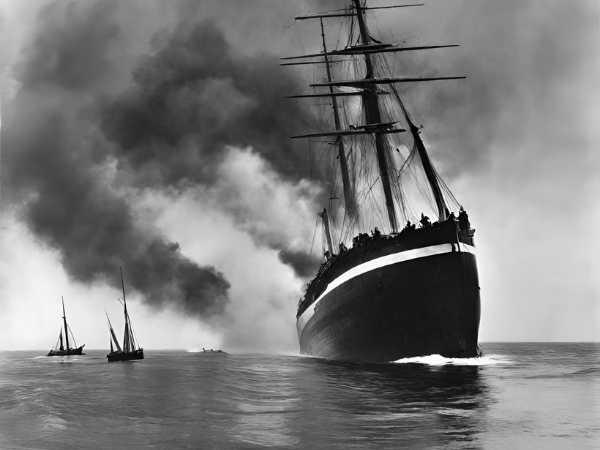
The Principessa Mafalda was an Italian ship named after a princess. It started sailing in 1909 between Genoa, Italy, and Buenos Aires, Argentina.
In October 1927, the ship had a big problem when its propeller shaft broke, damaging the bottom of the ship. It sank off the coast of Brazil, and sadly, more than 300 people died.
The Saint-Philibert Tragedy (June 1931)
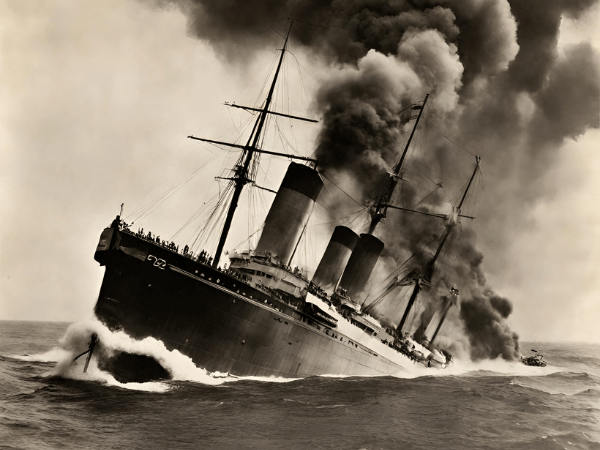
The Saint-Philibert, a small cruise ship, capsized and sank on June 14, 1931, off the coast of France. This tragic event led to the loss of nearly 500 lives, with only 8 passengers surviving.
Before this disaster, the Saint-Philibert was known for offering summer voyages along the French coast.
Check out: What Cruise Can You Go on Alone at 18?
The Sinking of the Georges Philippar (May 1932)
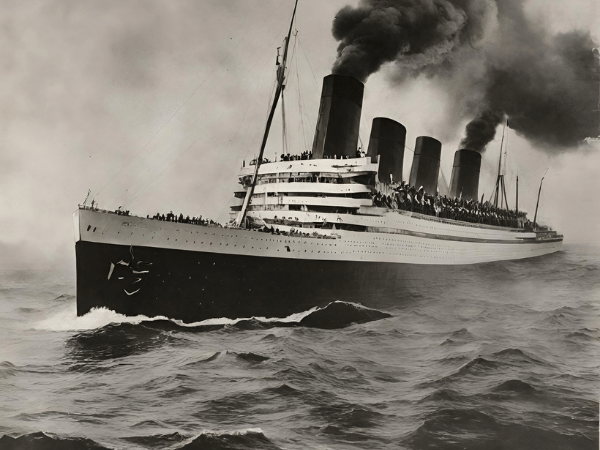
The French ocean liner Georges Philippar sank on the second leg of her maiden voyage near present-day Yemen, resulting in the loss of 54 lives.
The sinking was caused by an electrical fault. A fire started in one of the luxury cabins due to a faulty light switch that sparked and set the wood paneling on fire.
Before setting sail, there were worries about the ship’s safety. The ship’s launch was almost delayed to fix defects. However, these concerns were ignored to avoid penalties for delays.
The Tragedy of the SS Morro Castle (September 1934)
The SS Morro Castle, an American ocean liner operated by Ward Line, was traveling from Havana, Cuba, to New York City when it caught fire and ran aground on September 8, 1934.
The night before the disaster, Captain Robert Rennison Willmott, the ship’s captain, suddenly died after complaining about a stomach ache. Command of the ship was then passed to Chief Officer William Warms.
There were 137 casualties in total. Much of the blame was placed on the crew for not handling the emergency properly. Although the lifeboats could hold up to 408 people, they were launched with only 85.
The Sinking of the Empress of Britain (October 1940)
The Empress of Britain, an ocean liner of over 42,000 gross registered tons, holds the sad record of being the largest ocean liner sunk during World War II, and also the largest ship sunk by a U-Boat during the conflict.
On October 26, she was first bombed from above, then sunk by a torpedo launched by German U-Boats on October 28.
Most of the 416 crew members, 2 gunners, and 205 passengers managed to abandon the ship, leaving few people on board. In total, 45 people lost their lives in this tragic event.
The Collision of Andrea Doria and MS Stockholm (July 1956)
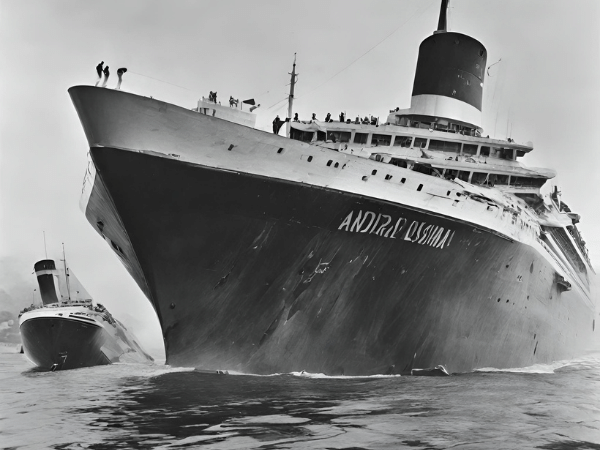
On July 25, 1956, the Andrea Doria and the MS Stockholm collided while on their way to New York City. The accident resulted in 51 deaths. However, this event is also known for one of the largest rescues in maritime history.
Thanks to improved communication systems, the crew of the Andrea Doria was able to quickly start rescue efforts and get help from other ships. Only five people died on board the Stockholm.
The damage to the Andrea Doria was so severe that the ship could not be saved. Those who lost their lives did so because of the initial collision.
The Story of the Bianca C (October 1961)
The Bianca C first sank during World War II when the Germans scuttled her before she was completed. Later, her hull was raised and refitted to become a cruise ship. She was first owned by Panama’s Arosa Line as their flagship but was eventually sold to Costa Line, where she got the name Bianca C after the owner’s daughter.
On October 22, 1961, while docked off the coast of Grenada, an explosion in the ship’s engine room led to fires breaking out. Thankfully, except for one person killed in the initial explosion, everyone was able to evacuate the ship before it sank.
The Journey and End of the Angelina Lauro (September 1979)
The Angelina Lauro didn’t always serve as a cruise ship. She started her journey in 1939 as the MS Oranje. Initially meant to be a passenger ferry, she was kept in Indonesia and turned into a hospital ship. After World War II, she sailed as a passenger liner for around 11 years, making trips around the world from Amsterdam to Australia through the Panama Canal and back via Singapore and the Suez Canal.
In 1964, she was sold to Lauro Lines and refitted as a cruise ship. She embarked on her maiden voyage as the Angelina Lauro on March 6, 1966. In the late 70s, Costa Lines chartered her.
While docked in Saint Thomas, the Angelina Lauro caught fire. The blaze lasted for several days. Before she could be towed to a scrapyard, her weakened hull began to take on water. She finally sank on September 24, 1979.
The Sinking of the MS Mikhail Lermontov (February 1986)
The MS Mikhail Lermontov was an ocean liner operated by the Soviet Union’s Baltic Shipping Company, entering service in 1972. A decade later, it was upgraded to serve as a cruise ship.
On February 6, 1986, the ship left Sydney for a two-week cruise around New Zealand. Ten days into the journey, while sailing past Cape Jackson, it hit rocks. Out of the 743 crew and passengers on board, the majority managed to escape on lifeboats. Tragically, there was one casualty: crew engineer Pavel Zagladimov.
The Tragic Collision of the SS Admiral Nakhimov (August 1986)
The SS Admiral Nakhimov started its journey in 1925 as the SS Berlin, a passenger liner of the German Weimar Republic. It later served as a hospital ship before becoming a Soviet Union passenger ship.
In August 1986, the ship met a tragic end when it collided with another ship in Tsemes Bay. The ship sank quickly, and sadly, 423 people lost their lives in the incident. This marked the third and final time that the ship sank.
The Sinking of MV Jupiter (October 1988)
The MV Jupiter, a Greek cruise ship, started sailing in 1961 as the Moledet. On October 21, 1988, it sank after leaving Piraeus, Greece. An Italian freight ship hit it.
The ship had nearly 400 British students, 84 adults, and 110 crew members on a study cruise. Sadly, one student, one teacher, and two crew members died. About 70 others were injured.
The Sinking of MTS Oceanos (August 1991)
The MTS Oceanos, another Greek ship, sank three years after the MV Jupiter. It was traveling from South Africa to Durban when rough seas hit. A storm made things worse.
The ship’s waste system wasn’t fixed right. A key pipe wasn’t replaced. It’s thought that huge waves broke the pipe, letting seawater flood in.
No one died, but the captain and crew were found guilty of leaving without helping passengers. The ship’s entertainers led all rescue efforts.
The Sinking of MS Estonia (September 1994)
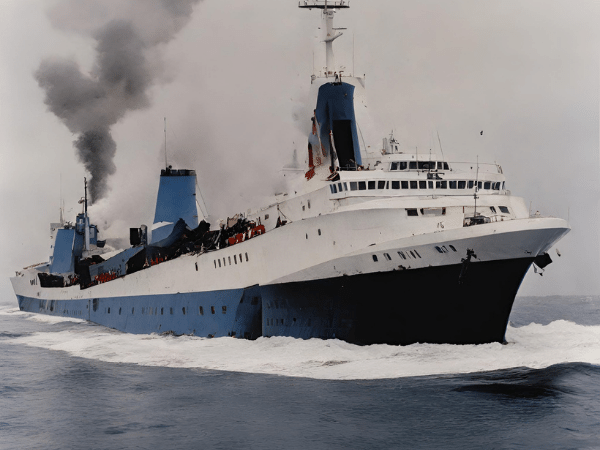
The sinking of the MS Estonia in 1994 was one of the worst maritime disasters of the 20th century. It was the deadliest peacetime sinking of a European ship after the Titanic and the Empress of Ireland. Over 850 lives were lost.
While sailing through rough waters in the Baltic Sea, a metallic bang was heard. Soon after, passengers and crew reported similar sounds. Around 1:15 am, the visor separated, opening the loading ramp and causing the ship to list as water flooded in.
It was difficult for those in cabins to reach the boat deck. Water was entering the ship through the car deck and the windows of public areas and cabins on Deck 6.
The Achille Lauro Incident (December 1994)
The Achille Lauro, originally the ocean liner Willem Ruys, was converted into a cruise ship by Italian businessman Achille Lauro in 1965. It had a series of unfortunate events, including collisions and onboard fires.
In 1985, the ship was hijacked by members of the Palestine Liberation Front. On November 30, 1994, the Achille Lauro caught fire while sailing to South Africa. There were 979 passengers and crew onboard. The majority evacuated the next morning when the ship listed, but two people were killed before it sank on December 2.
The Final Voyage of the Sun Vista (May 1999)
The Sun Vista started its journey in 1963 as the SS Galileo Galilei for the Lloyd Triestino line. Over the years, it sailed for five different cruise lines, including as the first-ever cruise ship for Celebrity Cruises, the Meridian. In 1997, it was transferred to Sun Cruises and renamed the Sun Vista.
On May 20, 1999, a fire broke out in the ship’s engine room. The Sun Vista sank in the early morning hours of May 21 in the Strait of Malacca. Fortunately, all passengers and crew were able to escape safely.
The Sinking of the Britanis (October 2000)

The Britanis began its life as the luxury ocean liner SS Monterey in 1932. It later sailed for Chandris under their “Fantasy Cruises” division starting in February 1971. When Chandris shifted focus to the Celebrity Cruises brand, all Fantasy Cruises operations ceased. In 1998, the ship was sold to AG Belofin and renamed Belofin-1.
Instead of being refurbished, the Britanis was sold to scrappers. While being towed to a scrapyard from Brazil, it developed a leak at the back of the ship. With no one on board, the ship was cut free and capsized off the coast of Cape Town, South Africa.
The Sinking of SeaBreeze (December 2000)
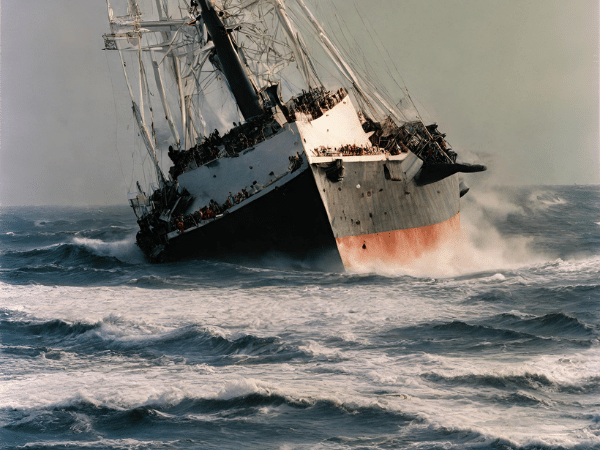
The SeaBreeze, originally named Federico C., was launched in 1958 and sailed for Costa Cruises. In 1983, it was transferred to Premier Cruises and renamed three times.
Premier Cruises went out of business in September 2000, leading to the ship being laid up. While being moved from Halifax, Nova Scotia, to Charleston, South Carolina, by its new owner, Cruise Ventures III, the SeaBreeze sank about 225 nautical miles off the coast of Virginia. All 34 crew members on board were rescued safely.
The ship sank due to the boiler breaking off, causing significant damage to the vessel.
The Sinking of MV Explorer (November 2007)

The MV Explorer, originally the MS Lindblad Explorer, began her career in 1969 as the first ship of her kind to sail through the Antarctic Ocean.
On November 11, 2007, she set sail from Ushuaia, Argentina, for a 19-day cruise. After visiting the Falkland Islands, she hit an iceberg in the Bransfield Strait on November 23, causing a gash in the hull that let water in.
All 91 passengers, 53 crew, and 9 guides were able to escape on lifeboats. They stayed there for five hours until the MS Nordnorge rescued them.
The Sinking of MS Sea Diamond (April 2007)
The MS Sea Diamond, originally known as Birka Princess, operated for Birka Line for most of her time at sea. In 2006, she was sold to Louis Cruises Line and renamed. A year later, she ran aground on a reef near Santorini, with 77 students from Paisley Magnet School in North Carolina on board.
Initially, it was believed that all passengers and crew were safe. However, two French citizens, Jean Christophe Allain, 45, and his daughter Maud, 16, were reported missing and never found.
Greek authorities later announced plans to charge the captain and five other officers with negligence.
The Capsizing of Costa Concordia (January 2012)
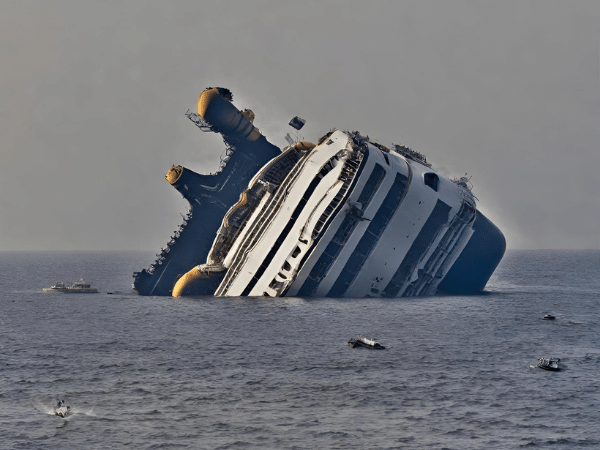
The Costa Concordia was the first ship of Costa Cruises’ Concordia Class, entering service in 2006. On January 13, 2012, she set sail on a 7-night Mediterranean cruise with 3,206 passengers and 1,023 crew members.
Captain Francesco Schettino veered off course, sailing too close to the island of Giglio. The ship struck a large rock, causing a 174-foot gash in the hull, leading to flooding and loss of power. The ship’s rudder position made it unsteerable, and it began tilting toward the starboard side.
The evacuation took over six hours and resulted in 32 deaths. An investigation focused on the crew’s actions, particularly Captain Schettino’s, as he left the ship while passengers were still on board.
Leave a Comment Cancel reply
Save my name, email, and website in this browser for the next time I comment.
'We all suffer from PTSD': 10 years after the Costa Concordia cruise disaster, memories remain
GIGLIO, Italy — Ten years have passed since the Costa Concordia cruise ship slammed into a reef and capsized off the Tuscan island of Giglio. But for the passengers on board and the residents who welcomed them ashore, the memories of that harrowing, freezing night remain vividly etched into their minds.
The dinner plates that flew off the tables when the rocks first gashed the hull. The blackout after the ship's engine room flooded and its generators failed. The final mad scramble to evacuate the listing liner and then the extraordinary generosity of Giglio islanders who offered shoes, sweatshirts and shelter until the sun rose and passengers were ferried to the mainland.
Italy on Thursday is marking the 10th anniversary of the Concordia disaster with a daylong commemoration that will end with a candlelit vigil near the moment the ship hit the reef: 9:45 p.m. on Jan. 13, 2012. The events will honor the 32 people who died that night, the 4,200 survivors, but also the residents of Giglio, who took in passengers and crew and then lived with the Concordia's wrecked carcass off their shore for another two years until it was righted and hauled away for scrap.
► CDC travel guidance: CDC warns 'avoid cruise travel' after more than 5,000 COVID cases in two weeks amid omicron
“For us islanders, when we remember some event, we always refer to whether it was before or after the Concordia,” said Matteo Coppa, who was 23 and fishing on the jetty when the darkened Concordia listed toward shore and then collapsed onto its side in the water.
“I imagine it like a nail stuck to the wall that marks that date, as a before and after,” he said, recounting how he joined the rescue effort that night, helping pull ashore the dazed, injured and freezing passengers from lifeboats.
The sad anniversary comes as the cruise industry, shut down in much of the world for months because of the coronavirus pandemic, is once again in the spotlight because of COVID-19 outbreaks that threaten passenger safety. The U.S. Centers for Disease Control last month warned people across-the-board not to go on cruises, regardless of their vaccination status, because of the risks of infection.
► 'We found out while we were flying': Last-minute cruise cancellations leave travelers scrambling
► 'The Disney magic is gone' ... or is it?: Longtime fans weigh in on changes at Disney World
'We all suffer from PTSD'
For Concordia survivor Georgia Ananias, the COVID-19 infections are just the latest evidence that passenger safety still isn’t a top priority for the cruise ship industry. Passengers aboard the Concordia were largely left on their own to find life jackets and a functioning lifeboat after the captain steered the ship close too shore in a stunt. He then delayed an evacuation order until it was too late, with lifeboats unable to lower because the ship was listing too heavily.
“I always said this will not define me, but you have no choice," Ananias said in an interview from her home in Los Angeles, Calif. “We all suffer from PTSD. We had a lot of guilt that we survived and 32 other people died.”
Prosecutors blamed the delayed evacuation order and conflicting instructions given by crew for the chaos that ensued as passengers scrambled to get off the ship. The captain, Francesco Schettino, is serving a 16-year prison sentence for manslaughter, causing a shipwreck and abandoning a ship before all the passengers and crew had evacuated.
Ananias and her family declined Costa’s initial $14,500 compensation offered to each passenger and sued Costa, a unit of U.S.-based Carnival Corp., to try to cover the cost of their medical bills and therapy for the post-traumatic stress they have suffered. But after eight years in the U.S. and then Italian court system, they lost their case.
“I think people need to be aware that when you go on a cruise, that if there is a problem, you will not have the justice that you may be used to in the country in which you are living,” said Ananias, who went onto become a top official in the International Cruise Victims association, an advocacy group that lobbies to improve safety aboard ships and increase transparency and accountability in the industry.
Costa didn’t respond to emails seeking comment on the anniversary.
► Royal Caribbean cancels sailings: Pushes back restart on several ships over COVID
'We did something incredible'
Cruise Lines International Association, the world’s largest cruise industry trade association, stressed in a statement to The Associated Press that passenger and crew safety was the industry's top priority, and that cruising remains one of the safest vacation experiences available.
“Our thoughts continue to be with the victims of the Concordia tragedy and their families on this sad anniversary," CLIA said. It said it has worked over the past 10 years with the International Maritime Organization and the maritime industry to “drive a safety culture that is based on continuous improvement."
For Giglio Mayor Sergio Ortelli, the memories of that night run the gamut: the horror of seeing the capsized ship, the scramble to coordinate rescue services on shore, the recovery of the first bodies and then the pride that islanders rose to the occasion to tend to the survivors.
► Cruising during COVID-19: Cancellation, refund policies vary by cruise line
Ortelli was later on hand when, in September 2013, the 115,000-ton, 1,000-foot long cruise ship was righted vertical off its seabed graveyard in an extraordinary feat of engineering. But the night of the disaster, a Friday the 13th, remains seared in his memory.
“It was a night that, in addition to being a tragedy, had a beautiful side because the response of the people was a spontaneous gesture that was appreciated around the world,” Ortelli said.
It seemed the natural thing to do at the time. “But then we realized that on that night, in just a few hours, we did something incredible.”
- History Classics
- Your Profile
- Find History on Facebook (Opens in a new window)
- Find History on Twitter (Opens in a new window)
- Find History on YouTube (Opens in a new window)
- Find History on Instagram (Opens in a new window)
- Find History on TikTok (Opens in a new window)
- This Day In History
- History Podcasts
- History Vault
The Costa Concordia Disaster: How Human Error Made It Worse
By: Becky Little
Updated: August 10, 2023 | Original: June 23, 2021

Many famous naval disasters happen far out at sea, but on January 13, 2012, the Costa Concordia wrecked just off the coast of an Italian island in relatively shallow water. The avoidable disaster killed 32 people and seriously injured many others, and left investigators wondering: Why was the luxury cruise ship sailing so close to the shore in the first place?
During the ensuing trial, prosecutors came up with a tabloid-ready explanation : The married ship captain had sailed it so close to the island to impress a much younger Moldovan dancer with whom he was having an affair.
Whether or not Captain Francesco Schettino was trying to impress his girlfriend is debatable. (Schettino insisted the ship sailed close to shore to salute other mariners and give passengers a good view.) But whatever the reason for getting too close, the Italian courts found the captain, four crew members and one official from the ship’s company, Costa Crociere (part of Carnival Corporation), to be at fault for causing the disaster and preventing a safe evacuation. The wreck was not the fault of unexpected weather or ship malfunction—it was a disaster caused entirely by a series of human errors.
“At any time when you have an incident similar to Concordia, there is never…a single causal factor,” says Brad Schoenwald, a senior marine inspector at the United States Coast Guard. “It is generally a sequence of events, things that line up in a bad way that ultimately create that incident.”
Wrecking Near the Shore
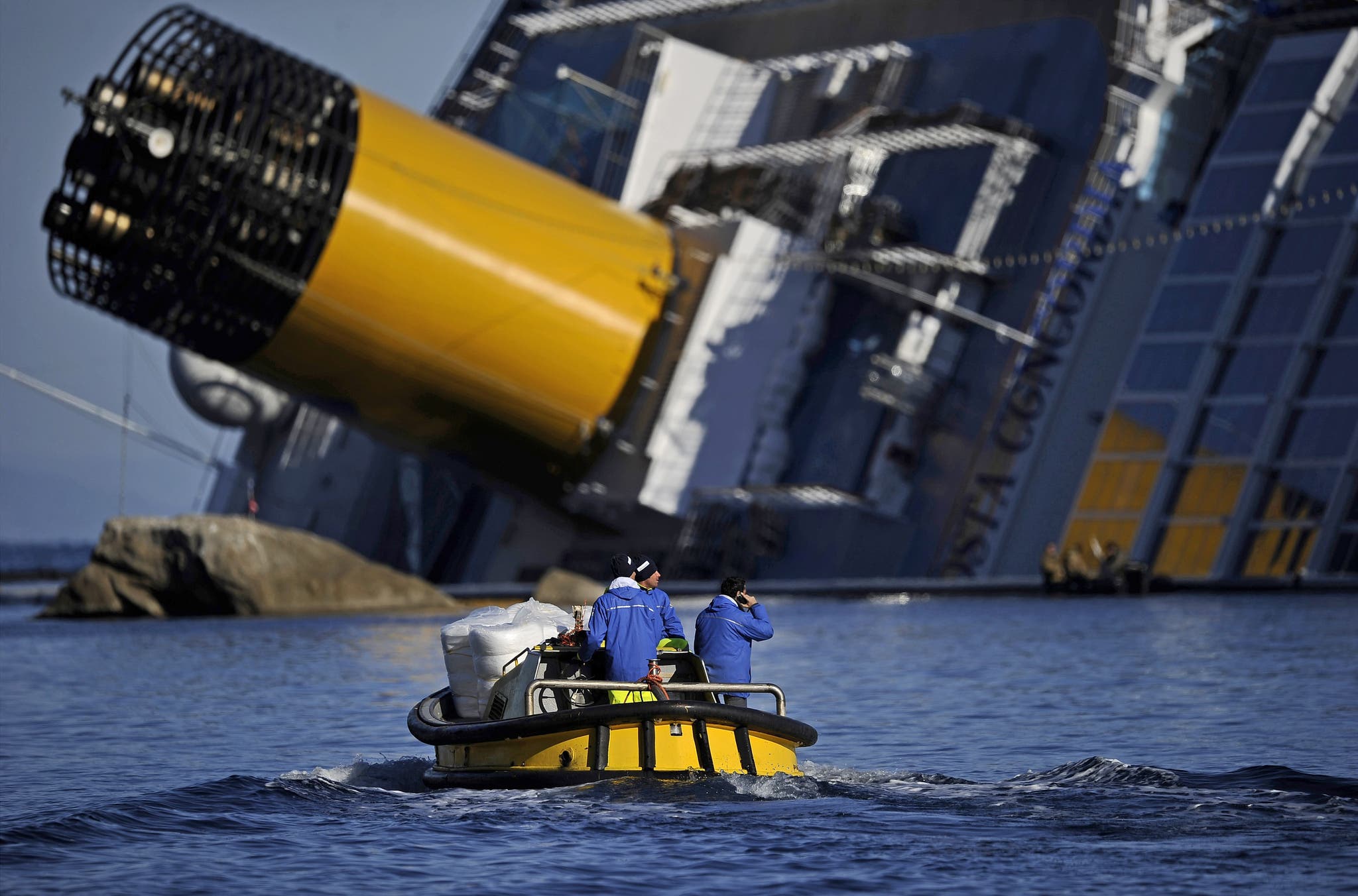
The Concordia was supposed to take passengers on a seven-day Italian cruise from Civitavecchia to Savona. But when it deviated from its planned path to sail closer to the island of Giglio, the ship struck a reef known as the Scole Rocks. The impact damaged the ship, allowing water to seep in and putting the 4,229 people on board in danger.
Sailing close to shore to give passengers a nice view or salute other sailors is known as a “sail-by,” and it’s unclear how often cruise ships perform these maneuvers. Some consider them to be dangerous deviations from planned routes. In its investigative report on the 2012 disaster, Italy’s Ministry of Infrastructures and Transports found that the Concordia “was sailing too close to the coastline, in a poorly lit shore area…at an unsafe distance at night time and at high speed (15.5 kts).”
In his trial, Captain Schettino blamed the shipwreck on Helmsman Jacob Rusli Bin, who he claimed reacted incorrectly to his order; and argued that if the helmsman had reacted correctly and quickly, the ship wouldn’t have wrecked. However, an Italian naval admiral testified in court that even though the helmsman was late in executing the captain’s orders, “the crash would’ve happened anyway.” (The helmsman was one of the four crew members convicted in court for contributing to the disaster.)
A Questionable Evacuation
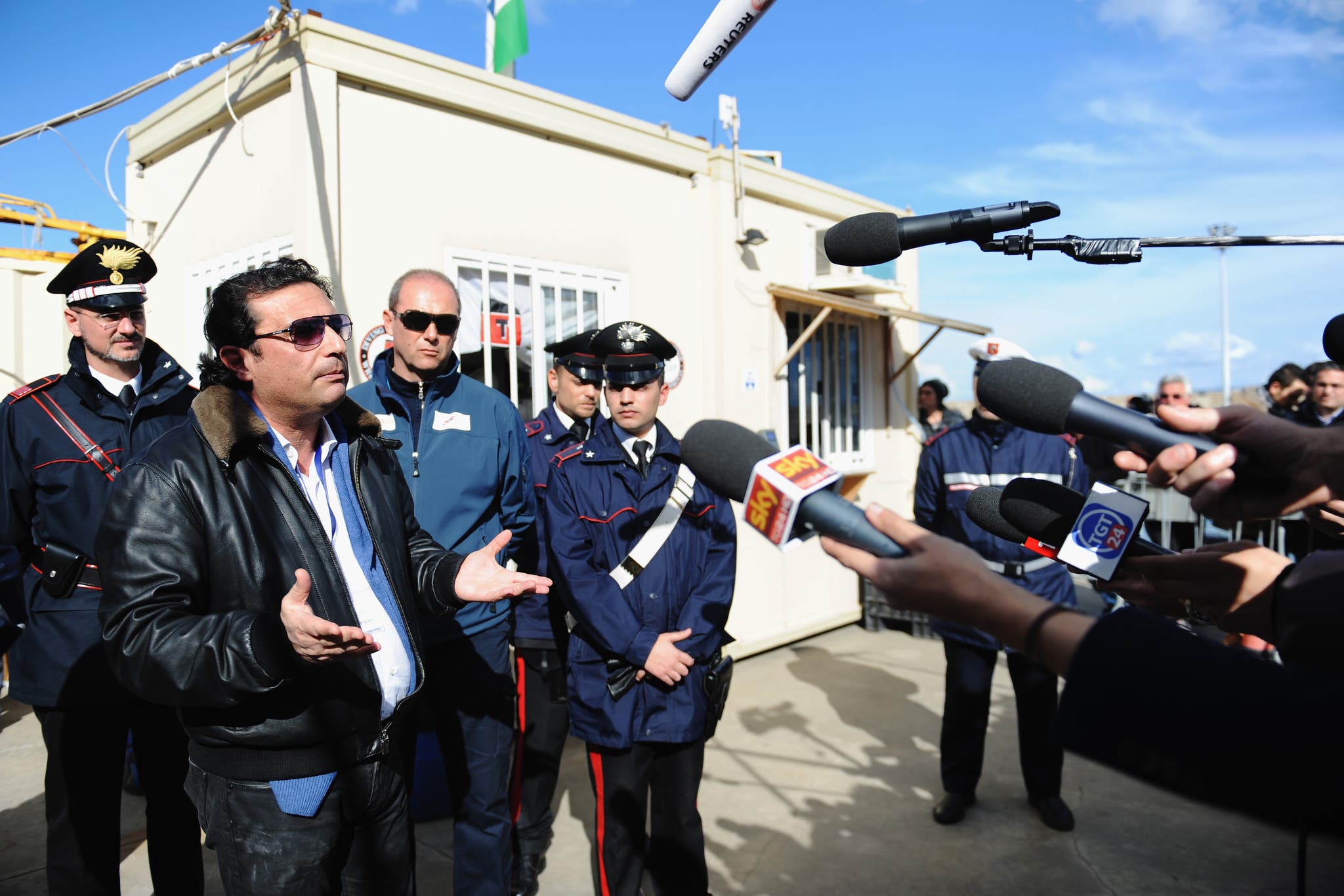
Evidence introduced in Schettino’s trial suggests that the safety of his passengers and crew wasn’t his number one priority as he assessed the damage to the Concordia. The impact and water leakage caused an electrical blackout on the ship, and a recorded phone call with Costa Crociere’s crisis coordinator, Roberto Ferrarini, shows he tried to downplay and cover up his actions by saying the blackout was what actually caused the accident.
“I have made a mess and practically the whole ship is flooding,” Schettino told Ferrarini while the ship was sinking. “What should I say to the media?… To the port authorities I have said that we had…a blackout.” (Ferrarini was later convicted for contributing to the disaster by delaying rescue operations.)
Schettino also didn’t immediately alert the Italian Search and Rescue Authority about the accident. The impact on the Scole Rocks occurred at about 9:45 p.m. local time, and the first person to contact rescue officials about the ship was someone on the shore, according to the investigative report. Search and Rescue contacted the ship a few minutes after 10:00 p.m., but Schettino didn’t tell them what had happened for about 20 more minutes.
A little more than an hour after impact, the crew began to evacuate the ship. But the report noted that some passengers testified that they didn’t hear the alarm to proceed to the lifeboats. Evacuation was made even more chaotic by the ship listing so far to starboard, making walking inside very difficult and lowering the lifeboats on one side, near to impossible. Making things worse, the crew had dropped the anchor incorrectly, causing the ship to flop over even more dramatically.
Through the confusion, the captain somehow made it into a lifeboat before everyone else had made it off. A coast guard member angrily told him on the phone to “Get back on board, damn it!” —a recorded sound bite that turned into a T-shirt slogan in Italy.
Schettino argued that he fell into a lifeboat because of how the ship was listing to one side, but this argument proved unconvincing. In 2015, a court found Schettino guilty of manslaughter, causing a shipwreck, abandoning ship before passengers and crew were evacuated and lying to authorities about the disaster. He was sentenced to 16 years in prison. In addition to Schettino, Ferrarini and Rusli Bin, the other people who received convictions for their role in the disaster were Cabin Service Director Manrico Giampedroni, First Officer Ciro Ambrosio and Third Officer Silvia Coronica.

Sign up for Inside History
Get HISTORY’s most fascinating stories delivered to your inbox three times a week.
By submitting your information, you agree to receive emails from HISTORY and A+E Networks. You can opt out at any time. You must be 16 years or older and a resident of the United States.
More details : Privacy Notice | Terms of Use | Contact Us
See what Shop TODAY editors are loving! 23 Amazon finds to shop — from $6
- TODAY Plaza
- Share this —

- Watch Full Episodes
- Read With Jenna
- Inspirational
- Relationships
- TODAY Table
- Newsletters
- Start TODAY
- Shop TODAY Awards
- Citi Concert Series
- Listen All Day
Follow today
More Brands
- On The Show
10 years later, Costa Concordia survivors share their stories from doomed cruise ship
Ten years after the deadly Costa Concordia cruise line disaster in Italy, survivors still vividly remember scenes of chaos they say were like something straight out of the movie "Titanic."
NBC News correspondent Kelly Cobiella caught up with a group of survivors on TODAY Wednesday, a decade after they escaped a maritime disaster that claimed the lives of 32 people. The Italian cruise ship ran aground off the tiny Italian island of Giglio after striking an underground rock and capsizing.
"I think it’s the panic, the feeling of panic, is what’s carried through over 10 years," Ian Donoff, who was on the cruise with his wife Janice for their honeymoon, told Cobiella. "And it’s just as strong now."
More than 4,000 passengers and crew were on board when the ship crashed into rocks in the dark in the Mediterranean Sea, sending seawater rushing into the vessel as people scrambled for their lives.
The ship's captain, Francesco Schettino, had been performing a sail-past salute of Giglio when he steered the ship too close to the island and hit the jagged reef, opening a 230-foot gash in the side of the cruise liner.
Passengers struggled to escape in the darkness, clambering to get to the life boats. Alaska resident Nate Lukes was with his wife, Cary, and their four daughters aboard the ship and remembers the chaos that ensued as the ship started to sink.
"There was really a melee there is the best way to describe it," he told Cobiella. "It's very similar to the movie 'Titanic.' People were jumping onto the top of the lifeboats and pushing down women and children to try to get to them."
The lifeboats wouldn't drop down because the ship was tilted on its side, leaving hundreds of passengers stranded on the side of the ship for hours in the cold. People were left to clamber down a rope ladder over a distance equivalent to 11 stories.
"Everybody was rushing for the lifeboats," Nate Lukes said. "I felt like (my daughters) were going to get trampled, and putting my arms around them and just holding them together and letting the sea of people go by us."
Schettino was convicted of multiple manslaughter as well as abandoning ship after leaving before all the passengers had reached safety. He is now serving a 16-year prison sentence .
It took nearly two years for the damaged ship to be raised from its side before it was towed away to be scrapped.
The calamity caused changes in the cruise industry like carrying more lifejackets and holding emergency drills before leaving port.
A decade after that harrowing night, the survivors are grateful to have made it out alive. None of the survivors who spoke with Cobiella have been on a cruise since that day.
"I said that if we survive this, then our marriage will have to survive forever," Ian Donoff said.
Scott Stump is a trending reporter and the writer of the daily newsletter This is TODAY (which you should subscribe to here! ) that brings the day's news, health tips, parenting stories, recipes and a daily delight right to your inbox. He has been a regular contributor for TODAY.com since 2011, producing features and news for pop culture, parents, politics, health, style, food and pretty much everything else.
- Share full article
Advertisement
Supported by
How the Wreck of a Cruise Liner Changed an Italian Island
Ten years ago the Costa Concordia ran aground off the Tuscan island of Giglio, killing 32 people and entwining the lives of others forever.

By Gaia Pianigiani
GIGLIO PORTO, Italy — The curvy granite rocks of the Tuscan island of Giglio lay bare in the winter sun, no longer hidden by the ominous, stricken cruise liner that ran aground in the turquoise waters of this marine sanctuary ten years ago.
Few of the 500-odd residents of the fishermen’s village will ever forget the freezing night of Jan. 13, 2012, when the Costa Concordia shipwrecked, killing 32 people and upending life on the island for years.
“Every one of us here has a tragic memory from then,” said Mario Pellegrini, 59, who was deputy mayor in 2012 and was the first civilian to climb onto the cruise ship after it struck the rocks near the lighthouses at the port entrance.
The hospitality of the tight-knit community of islanders kicked in, at first to give basic assistance to the 4,229 passengers and crew members who had to be evacuated from a listing vessel as high as a skyscraper. In no time, Giglio residents hosted thousands of journalists, law enforcement officers and rescue experts who descended on the port. In the months to come, salvage teams set up camp in the picturesque harbor to work on safely removing the ship, an operation that took more than two years to complete.

The people of Giglio felt like a family for those who spent long days at its port, waiting to receive word of their loved ones whose bodies remained trapped on the ship. On Thursday, 10 years to the day of the tragedy, the victims’ families, some passengers and Italian authorities attended a remembrance Mass and threw a crown of flowers onto the waters where the Costa Concordia had rested. At 9:45 p.m., the time when the ship ran aground, a candlelit procession illuminated the port’s quay while church bells rang and ship sirens blared.
What stands out now for many is how the wreck forever changed the lives of some of those whose paths crossed as a result. Friendships were made, business relations took shape and new families were even formed.
“It feels as if, since that tragic night, the lives of all the people involved were forever connected by an invisible thread,” Luana Gervasi, the niece of one of the shipwreck victims, said at the Mass on Thursday, her voice breaking.
Francesco Dietrich, 48, from the eastern city of Ancona, arrived on the island in February 2013 to work with the wreck divers, “a dream job,” he said, adding: “It was like offering someone who plays soccer for the parish team to join the Champions League with all the top teams in the business.”
For his work, Mr. Dietrich had to buy a lot of boat-repair supplies from the only hardware store in town. It was owned by a local family, and Mr. Dietrich now has a 6-year-old son, Pietro, with the family’s daughter.
“It was such a shock for us,” said Bruna Danei, 42, who until 2018 worked as a secretary for the consortium that salvaged the wreck. “The work on the Costa Concordia was a life-changing experience for me in many ways.”
A rendering of the Costa Concordia used by salvage teams to plan its recovery hung on the wall of the living room where her 22-month-old daughter, Arianna, played.
“She wouldn’t be here if Davide hadn’t come to work on the site,” Ms. Danei said, referring to Davide Cedioli, 52, an experienced diver from Turin who came to the island in May 2012 to help right the Costa Concordia — and who is also Arianna’s father.
From a barge, Mr. Cedioli monitored the unprecedented salvage operation that, in less than a day, was able to rotate the 951-foot vessel, partly smashed against the rocks, from the sea bottom to an upright position without further endangering the underwater ecosystem that it damaged when it ran aground.
“We jumped up and down in happiness when the parbuckling was completed,” Mr. Cedioli remembered. “We felt we were bringing some justice to this story. And I loved this small community and living on the island.”
The local council voted to make Jan. 13 a day of remembrance on Giglio, but after this year it will stop the public commemorations and “make it a more intimate moment, without the media,” Mr. Ortelli said during the mass.
“Being here ten years later brings back a lot of emotions,” said Kevin Rebello, 47, whose older brother, Russell, was a waiter on the Costa Concordia.
Russell Rebello’s remains were finally retrieved three years after the shipwreck, from under the furniture in a cabin, once the vessel was upright and being taken apart in Genoa.
“First, I feel close to my brother here,” Kevin Rebello said. “But it is also some sort of family reunion for me — I couldn’t wait to see the Giglio people.”
Mr. Rebello hugged and greeted residents on the streets of the port area, and recalled how the people there had shown affection for him at the time, buying him coffee and simply showing respect for his grief.
“Other victims’ families feel differently, but I am a Catholic and I have forgiven,” Mr. Rebello explained.
The Costa Concordia accident caused national shame when it became clear that the liner’s commander, Francesco Schettino, failed to immediately sound the general alarm and coordinate the evacuation, and instead abandoned the sinking vessel.
“Get back on board!” a Coast Guard officer shouted at Mr. Schettino when he understood that the captain was in a lifeboat watching people scramble to escape, audio recordings of their exchange later revealed. “Go up on the bow of the ship on a rope ladder, and tell me what you can do, how many people are there and what they need. Now!”
The officer has since pursued a successful career in politics, while Mr. Schettino is serving a 16-year sentence in a Roman prison for homicide and for abandoning the ship before the evacuation was completed. Other officials and crew members plea-bargained for lesser sentences.
During the trial, Mr. Schettino admitted that he had committed an “imprudence” when he decided to sail near the island of Giglio at high speed to greet the family of the ship’s headwaiter. The impact with the half-submerged rock near the island produced a gash in the hull more than 70 meters long, or about 76 yards, leading to blackouts on board and water pouring into the lower decks.
Mr. Schettino tried to steer the cruise ship toward the port to make evacuation easier, but the vessel was out of control and began to tip as it neared the harbor, making many lifeboats useless.
“I can’t forget the eyes of children, scared to death, and of their parents,” said Mr. Pellegrini, who had boarded the ship to speak with officials and organize the evacuation. “The metallic sound of the enormous ship tipping over and the gurgling of the sea up the endless corridors of the cruiser.”
Sergio Ortelli, who is still the mayor of Giglio ten years later, was similarly moved. “Nobody can go back and cancel those senseless deaths of innocent people, or the grief of their families,” he said. “The tragedy will always stay with us as a community. It was an apocalypse for us.”
Yet Mr. Ortelli said that the accident also told a different story, that of the skilled rescuers who managed to save thousands of lives, and of the engineers who righted the liner, refloated it and took it to the scrapyard.
While the global attention shifted away from Giglio, residents have stayed in touch with the outside world through the people who temporarily lived there.
For months, the Rev. Lorenzo Pasquotti, who was then a pastor in Giglio, kept receiving packages: dry-cleaned slippers, sweaters and tablecloths that were given to the cold, stranded passengers in his church that night, returned via courier.
One summer, Father Pasquotti ate German cookies with a German couple who were passengers on the ship. They still remembered the hot tea and leftovers from Christmas delicacies that they were given that night.
“So many nationalities — the world was at our door all of a sudden,” he said, remembering that night. “And we naturally opened it.”
Gaia Pianigiani is a reporter based in Italy for The New York Times. More about Gaia Pianigiani
Come Sail Away
Love them or hate them, cruises can provide a unique perspective on travel..
Cruise Ship Surprises: Here are five unexpected features on ships , some of which you hopefully won’t discover on your own.
Icon of the Seas: Our reporter joined thousands of passengers on the inaugural sailing of Royal Caribbean’s Icon of the Seas . The most surprising thing she found? Some actual peace and quiet .
Th ree-Year Cruise, Unraveled: The Life at Sea cruise was supposed to be the ultimate bucket-list experience : 382 port calls over 1,095 days. Here’s why those who signed up are seeking fraud charges instead.
TikTok’s Favorite New ‘Reality Show’: People on social media have turned the unwitting passengers of a nine-month world cruise into “cast members” overnight.
Dipping Their Toes: Younger generations of travelers are venturing onto ships for the first time . Many are saving money.
Cult Cruisers: These devoted cruise fanatics, most of them retirees, have one main goal: to almost never touch dry land .
Ten years on, Costa Concordia shipwreck still haunts survivors, islanders
- Medium Text

Sign up here.
Philip Pullella reported from Rome; Additional reporting by Yara Nardi, writing by Philip Pullella; Editing by Emelia Sithole-Matarise
Our Standards: The Thomson Reuters Trust Principles. New Tab , opens new tab

World Chevron
- Hamas senior official says group wants real hostages for prisoners deal, but Netanyahu wants war to continue Middle East category · ago

10 years later, Costa Concordia disaster is still vivid for survivors
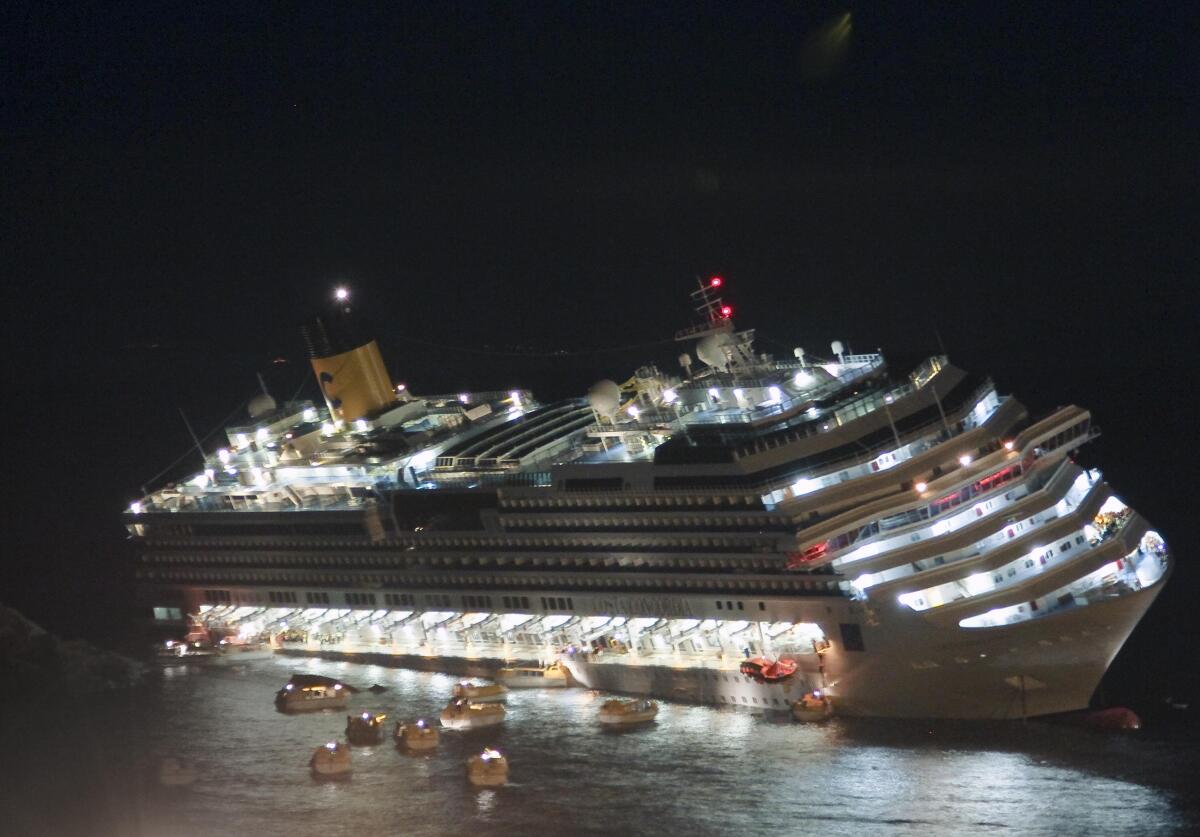
- Show more sharing options
- Copy Link URL Copied!
Ten years have passed since the Costa Concordia cruise ship slammed into a reef and capsized off the Tuscan island of Giglio . But for the passengers on board and the residents who welcomed them ashore, the memories of that harrowing, freezing night remain vividly etched into their minds.
The dinner plates that flew off the tables when the rocks first gashed the hull. The blackout after the ship’s engine room flooded and its generators failed. The final mad scramble to evacuate the listing liner and then the extraordinary generosity of Giglio islanders who offered shoes, sweatshirts and shelter until the sun rose and passengers were ferried to the mainland.
Italy on Thursday is marking the 10th anniversary of the Concordia disaster with a daylong commemoration that will end with a candlelit vigil near the moment the ship hit the reef: 9:45 p.m. on Jan. 13, 2012. The events will honor the 32 people who died that night, the 4,200 survivors, but also the residents of Giglio, who took in passengers and crew and then lived with the Concordia’s wrecked carcass off their shore for another two years until it was righted and hauled away for scrap.
“For us islanders, when we remember some event, we always refer to whether it was before or after the Concordia,” said Matteo Coppa, who was 23 and fishing on the jetty when the darkened Concordia listed toward shore and then collapsed onto its side in the water.
“I imagine it like a nail stuck to the wall that marks that date, as a before and after,” he said, recounting how he joined the rescue effort that night, helping pull ashore the dazed, injured and freezing passengers from lifeboats.
The sad anniversary comes as the cruise industry, shut down in much of the world for months because of the coronavirus pandemic, is once again in the spotlight because of COVID-19 outbreaks that threaten passenger safety. The U.S. Centers for Disease Control last month warned people across-the-board not to go on cruises , regardless of their vaccination status, because of the risks of infection.

A dozen passengers on cruise ship test positive for coronavirus
The passengers, whose infections were found through random testing, were asymptomatic or had mild symptoms, according to the Port of San Francisco.
Jan. 7, 2022
For Concordia survivor Georgia Ananias, the COVID-19 infections are just the latest evidence that passenger safety still isn’t a top priority for the cruise ship industry. Passengers aboard the Concordia were largely left on their own to find life jackets and a functioning lifeboat after the captain steered the ship close too shore in a stunt. He then delayed an evacuation order until it was too late, with lifeboats unable to lower because the ship was listing too heavily.
“I always said this will not define me, but you have no choice,” Ananias said in an interview from her home in Los Angeles. “We all suffer from PTSD. We had a lot of guilt that we survived and 32 other people died.”
Prosecutors blamed the delayed evacuation order and conflicting instructions given by crew for the chaos that ensued as passengers scrambled to get off the ship. The captain, Francesco Schettino, is serving a 16-year prison sentence for manslaughter, causing a shipwreck and abandoning a ship before all the passengers and crew had evacuated.
Ananias and her family declined Costa’s initial $14,500 compensation offered to each passenger and sued Costa, a unit of U.S.-based Carnival Corp., to try to cover the cost of their medical bills and therapy for the post-traumatic stress they have suffered. But after eight years in the U.S. and then Italian court system, they lost their case.
“I think people need to be aware that when you go on a cruise, that if there is a problem, you will not have the justice that you may be used to in the country in which you are living,” said Ananias, who went onto become a top official in the International Cruise Victims association, an advocacy group that lobbies to improve safety aboard ships and increase transparency and accountability in the industry.
Costa didn’t respond to emails seeking comment on the anniversary.
Cruise Lines International Assn., the world’s largest cruise industry trade association, stressed in a statement to the Associated Press that passenger and crew safety were the industry’s top priority, and that cruising remains one of the safest vacation experiences available.
“Our thoughts continue to be with the victims of the Concordia tragedy and their families on this sad anniversary,” CLIA said. It said it has worked over the past 10 years with the International Maritime Organization and the maritime industry to “drive a safety culture that is based on continuous improvement.”
For Giglio Mayor Sergio Ortelli, the memories of that night run the gamut: the horror of seeing the capsized ship, the scramble to coordinate rescue services on shore, the recovery of the first bodies and then the pride that islanders rose to the occasion to tend to the survivors.
Ortelli was later on hand when, in September 2013, the 115,000-ton, 1,000-foot long cruise ship was righted vertical off its seabed graveyard in an extraordinary feat of engineering. But the night of the disaster, a Friday the 13th, remains seared in his memory.
“It was a night that, in addition to being a tragedy, had a beautiful side because the response of the people was a spontaneous gesture that was appreciated around the world,” Ortelli said.
It seemed the natural thing to do at the time. “But then we realized that on that night, in just a few hours, we did something incredible.”
More to Read

Captain gets four-year sentence for Conception boat disaster
May 2, 2024
More than 60 people drown after a migrant vessel capsizes off Libya, U.N. says
Dec. 17, 2023
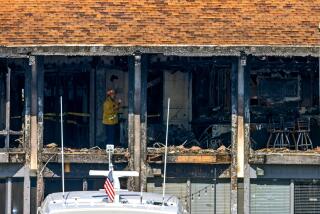
‘Nothing left’: After California Yacht Club fire, residents mourn loss of a beloved spot
Dec. 15, 2023
Start your day right
Sign up for Essential California for news, features and recommendations from the L.A. Times and beyond in your inbox six days a week.
You may occasionally receive promotional content from the Los Angeles Times.
More From the Los Angeles Times
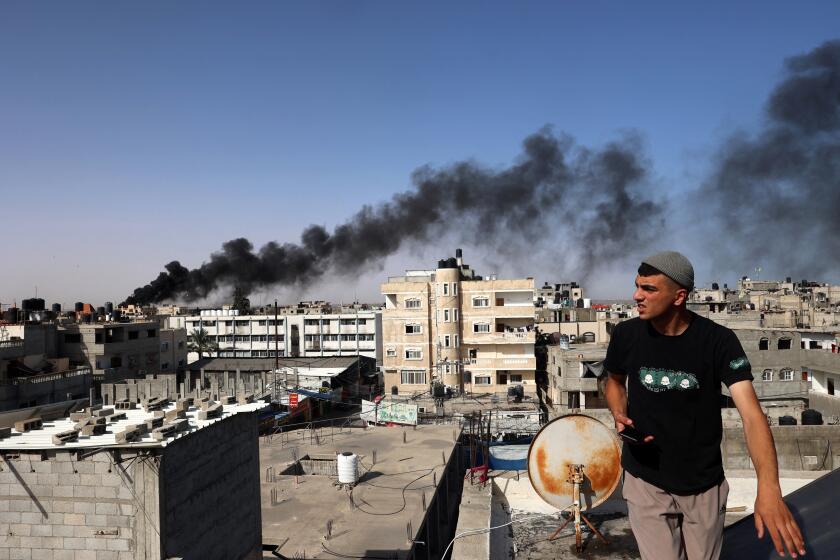
Granderson: Biden is right to nudge Israel toward protecting civilians in Rafah

World & Nation
U.N. assembly approves resolution granting Palestinians new rights and reviving U.N. membership bid

Facing a ‘national emergency,’ South Korea president urges citizens to have more babies

Third week of testimony in Trump’s trial draws to a close, with Michael Cohen yet to come
- Election 2024
- Entertainment
- Newsletters
- Photography
- Personal Finance
- AP Investigations
- AP Buyline Personal Finance
- AP Buyline Shopping
- Press Releases
- Israel-Hamas War
- Russia-Ukraine War
- Global elections
- Asia Pacific
- Latin America
- Middle East
- Election Results
- Delegate Tracker
- AP & Elections
- Auto Racing
- 2024 Paris Olympic Games
- Movie reviews
- Book reviews
- Personal finance
- Financial Markets
- Business Highlights
- Financial wellness
- Artificial Intelligence
- Social Media
10 years later, Costa Concordia disaster vivid for survivors

FILE — The luxury cruise ship Costa Concordia lays on its starboard side after it ran aground off the coast of the Isola del Giglio island, Italy on Jan. 13, 2012. Italy is marking the 10th anniversary of the Concordia disaster with a daylong commemoration, honoring the 32 people who died but also the extraordinary response by the residents of Giglio who took in the 4,200 passengers and crew from the ship on that rainy Friday night and then lived with the Concordia carcass for another two years before it was hauled away for scrap. (AP Photo/Giuseppe Modesti)
FILE— The grounded cruise ship Costa Concordia is seen through a window on the Isola del Giglio island, Italy, Friday, Feb. 3, 2012. Italy on Thursday, Jan. 13, 2022, is marking the 10th anniversary of the Concordia disaster with a daylong commemoration, honoring the 32 people who died but also the extraordinary response by the residents of Giglio who took in the 4,200 passengers and crew from the ship on that rainy Friday night and then lived with the Concordia carcass for another two years before it was hauled away for scrap. (AP Photo/Pier Paolo Cito)
FILE— Oil removal ships near the cruise ship Costa Concordia leaning on its side Monday, Jan. 16, 2012, after running aground near the tiny Tuscan island of Giglio, Italy, last Friday night. Italy on Thursday, Jan. 13, 2022, is marking the 10th anniversary of the Concordia disaster with a daylong commemoration, honoring the 32 people who died but also the extraordinary response by the residents of Giglio who took in the 4,200 passengers and crew from the ship on that rainy Friday night and then lived with the Concordia carcass for another two years before it was hauled away for scrap. (AP Photo/Gregorio Borgia)
FILE— The Costa Concordia ship lies on its side on the Tuscan island of Isola del Giglio, Italy, Monday, Sept. 16, 2013. Italy on Thursday, Jan. 13, 2022, is marking the 10th anniversary of the Concordia disaster with a daylong commemoration, honoring the 32 people who died but also the extraordinary response by the residents of Giglio who took in the 4,200 passengers and crew from the ship on that rainy Friday night and then lived with the Concordia carcass for another two years before it was hauled away for scrap. (AP Photo/Andrew Medichini)
FILE— A sunbather gets her tan on a rock during the operations to refloat the luxury cruise ship Costa Concordia on the tiny Tuscan island of Isola del Giglio, Italy, Saturday, July 19, 2014. Once the ship has refloated it will be towed to Genoa’s port, about 200 nautical miles (320 kilometers), where it will be dismantled. 30 months ago it struck a reef and capsized, killing 32 people. (AP Photo/Gregorio Borgia)
FILE— The wrecked hulk of the Costa Concordia cruise ship is towed along the Tyrrhenian Sea, 30 miles off the coast of Viareggio, Italy, Friday, July 25, 2014. Italy on Thursday, Jan. 13, 2022, is marking the 10th anniversary of the Concordia disaster with a daylong commemoration, honoring the 32 people who died but also the extraordinary response by the residents of Giglio who took in the 4,200 passengers and crew from the ship on that rainy Friday night and then lived with the Concordia carcass for another two years before it was hauled away for scrap. (AP Photo/Fabio Muzzi)
FILE— A view of the previously submerged side of the Costa Concordia cruise ship, off the coast of the Tuscan Island of Giglio, Italy, Monday, Jan. 13, 2014. Italy on Thursday, Jan. 13, 2022, is marking the 10th anniversary of the Concordia disaster with a daylong commemoration, honoring the 32 people who died but also the extraordinary response by the residents of Giglio who took in the 4,200 passengers and crew from the ship on that rainy Friday night and then lived with the Concordia carcass for another two years before it was hauled away for scrap. (AP Photo/Gregorio Borgia)
FILE— A passenger from South Korea, center, walks with Italian Firefighters, Sunday, Jan. 15, 2012, after being rescued from the luxury cruise ship Costa Concordia which ran aground on the tiny Italian island of Isola del Giglio. Italy on Thursday, Jan. 13, 2022, is marking the 10th anniversary of the Concordia disaster with a daylong commemoration, honoring the 32 people who died but also the extraordinary response by the residents of Giglio who took in the 4,200 passengers and crew from the ship on that rainy Friday night and then lived with the Concordia carcass for another two years before it was hauled away for scrap. (AP Photo/Gregorio Borgia)
FILE— A woman hangs her laundry as the grounded cruise ship Costa Concordia is seen in the background, off the Tuscan island of Isola del Giglio, Italy, Saturday, Jan. 21, 2012. Italy on Thursday, Jan. 13, 2022, is marking the 10th anniversary of the Concordia disaster with a daylong commemoration, honoring the 32 people who died but also the extraordinary response by the residents of Giglio who took in the 4,200 passengers and crew from the ship on that rainy Friday night and then lived with the Concordia carcass for another two years before it was hauled away for scrap.(AP Photo/Pier Paolo Cito)
FILE— In this photo taken on Saturday, Jan. 14, 2012, Francesco Schettino, right, the captain of the luxury cruise ship Costa Concordia, which ran aground off the tiny Tuscan island of Isola del Giglio, is taken into custody by Carabinieri in Porto Santo Stefano, Italy. Italy on Thursday, Jan. 13, 2022, is marking the 10th anniversary of the Concordia disaster with a daylong commemoration, honoring the 32 people who died but also the extraordinary response by the residents of Giglio who took in the 4,200 passengers and crew from the ship on that rainy Friday night and then lived with the Concordia carcass for another two years before it was hauled away for scrap. (AP Photo/Giacomo Aprili)
Experts aboard a sea platform carry oil recovery equipment, Saturday, Jan. 28, 2012, as they return to the port of the Tuscan island of Giglio, Italy, where the cruise ship Costa Concordia, visible in background, ran aground on Ja. 13, 2012. Italy on Thursday, Jan. 13, 2022, is marking the 10th anniversary of the Concordia disaster with a daylong commemoration, honoring the 32 people who died but also the extraordinary response by the residents of Giglio who took in the 4,200 passengers and crew from the ship on that rainy Friday night and then lived with the Concordia carcass for another two years before it was hauled away for scrap. (AP Photo/Pier Paolo Cito)
FILE— Seagulls fly in front of the grounded cruise ship Costa Concordia off the Tuscan island of Isola del Giglio, Italy, Monday, Jan. 30, 2012. Italy on Thursday, Jan. 13, 2022, is marking the 10th anniversary of the Concordia disaster with a daylong commemoration, honoring the 32 people who died but also the extraordinary response by the residents of Giglio who took in the 4,200 passengers and crew from the ship on that rainy Friday night and then lived with the Concordia carcass for another two years before it was hauled away for scrap. (AP Photo/Pier Paolo Cito)
FILE— Italian firefighters conduct search operations on the luxury cruise ship Costa Concordia that ran aground the tiny Tuscan island of Isola del Giglio, Italy, Sunday, Jan. 15, 2012. Italy on Thursday, Jan. 13, 2022, is marking the 10th anniversary of the Concordia disaster with a daylong commemoration, honoring the 32 people who died but also the extraordinary response by the residents of Giglio who took in the 4,200 passengers and crew from the ship on that rainy Friday night and then lived with the Concordia carcass for another two years before it was hauled away for scrap. (AP Photo/Gregorio Borgia)
- Copy Link copied
GIGLIO, Italy (AP) — Ten years have passed since the Costa Concordia cruise ship slammed into a reef and capsized off the Tuscan island of Giglio. But for the passengers on board and the residents who welcomed them ashore, the memories of that harrowing, freezing night remain vividly etched into their minds.
The dinner plates that flew off the tables when the rocks first gashed the hull. The blackout after the ship’s engine room flooded and its generators failed. The final mad scramble to evacuate the listing liner and then the extraordinary generosity of Giglio islanders who offered shoes, sweatshirts and shelter until the sun rose and passengers were ferried to the mainland.
Italy on Thursday is marking the 10th anniversary of the Concordia disaster with a daylong commemoration that will end with a candlelit vigil near the moment the ship hit the reef: 9:45 p.m. on Jan. 13, 2012. The events will honor the 32 people who died that night, the 4,200 survivors, but also the residents of Giglio, who took in passengers and crew and then lived with the Concordia’s wrecked carcass off their shore for another two years until it was righted and hauled away for scrap.
“For us islanders, when we remember some event, we always refer to whether it was before or after the Concordia,” said Matteo Coppa, who was 23 and fishing on the jetty when the darkened Concordia listed toward shore and then collapsed onto its side in the water.
“I imagine it like a nail stuck to the wall that marks that date, as a before and after,” he said, recounting how he joined the rescue effort that night, helping pull ashore the dazed, injured and freezing passengers from lifeboats.
The sad anniversary comes as the cruise industry, shut down in much of the world for months because of the coronavirus pandemic, is once again in the spotlight because of COVID-19 outbreaks that threaten passenger safety. The U.S. Centers for Disease Control last month warned people across-the-board not to go on cruises , regardless of their vaccination status, because of the risks of infection.
For Concordia survivor Georgia Ananias, the COVID-19 infections are just the latest evidence that passenger safety still isn’t a top priority for the cruise ship industry. Passengers aboard the Concordia were largely left on their own to find life jackets and a functioning lifeboat after the captain steered the ship close too shore in a stunt. He then delayed an evacuation order until it was too late, with lifeboats unable to lower because the ship was listing too heavily.
“I always said this will not define me, but you have no choice,” Ananias said in an interview from her home in Los Angeles, Calif. “We all suffer from PTSD. We had a lot of guilt that we survived and 32 other people died.”
Prosecutors blamed the delayed evacuation order and conflicting instructions given by crew for the chaos that ensued as passengers scrambled to get off the ship. The captain, Francesco Schettino, is serving a 16-year prison sentence for manslaughter, causing a shipwreck and abandoning a ship before all the passengers and crew had evacuated.
Ananias and her family declined Costa’s initial $14,500 compensation offered to each passenger and sued Costa, a unit of U.S.-based Carnival Corp., to try to cover the cost of their medical bills and therapy for the post-traumatic stress they have suffered. But after eight years in the U.S. and then Italian court system, they lost their case.
“I think people need to be aware that when you go on a cruise, that if there is a problem, you will not have the justice that you may be used to in the country in which you are living,” said Ananias, who went onto become a top official in the International Cruise Victims association, an advocacy group that lobbies to improve safety aboard ships and increase transparency and accountability in the industry.
Costa didn’t respond to emails seeking comment on the anniversary.
Cruise Lines International Association, the world’s largest cruise industry trade association, stressed in a statement to The Associated Press that passenger and crew safety was the industry’s top priority, and that cruising remains one of the safest vacation experiences available.
“Our thoughts continue to be with the victims of the Concordia tragedy and their families on this sad anniversary,” CLIA said. It said it has worked over the past 10 years with the International Maritime Organization and the maritime industry to “drive a safety culture that is based on continuous improvement.”
For Giglio Mayor Sergio Ortelli, the memories of that night run the gamut: the horror of seeing the capsized ship, the scramble to coordinate rescue services on shore, the recovery of the first bodies and then the pride that islanders rose to the occasion to tend to the survivors.
Ortelli was later on hand when, in September 2013, the 115,000-ton, 300-meter (1,000-foot) long cruise ship was righted vertical off its seabed graveyard in an extraordinary feat of engineering. But the night of the disaster, a Friday the 13th, remains seared in his memory.
“It was a night that, in addition to being a tragedy, had a beautiful side because the response of the people was a spontaneous gesture that was appreciated around the world,” Ortelli said.
It seemed the natural thing to do at the time. “But then we realized that on that night, in just a few hours, we did something incredible.”
Winfield reported from Rome.

10 Major Cruise Ships And Passenger Vessels That Sank
The Titanic might seem the worst passenger ship accident. However, many historic cruise ships met the same fate, though they were not as famous as the RMS Titanic. The earliest cruise ships were constructed in the 1850s but gained prominence after the World Wars ended when vacationing on the seas seemed attractive.
Cruise ships were also constructed before that and targeted the affluent section of society. Also, cruise voyages in the 19th and 20th centuries were fraught with many dangers compared to present-day journeys, which have become relatively safer, thanks to advancements in maritime technologies.
However, one commonality remains. Cruise voyages are as thrilling and exciting as they were in their bygone days. This article will enlighten you about the 12 major cruise ships that sank.
1. The Unfateful RMS Titanic
The most infamous cruise ship accident has to be the RMS Titanic. The Olympic-Class Ocean liner was owned by White Star Line and built in Northern Ireland. It was the largest passenger ship of its time, designed by Thomas Andrews, capable of carrying over 3000 people.
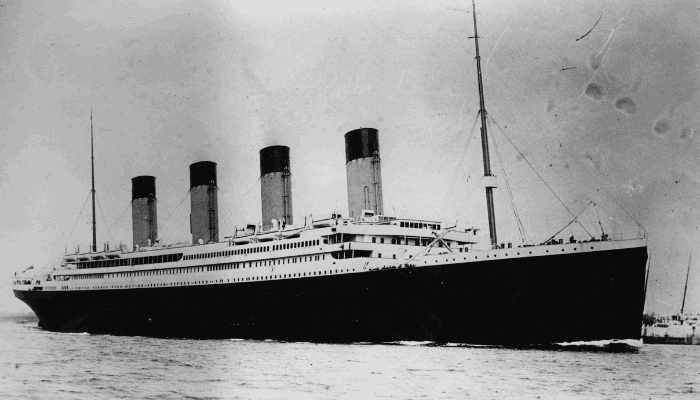
It was called unsinkable due to its 16 watertight compartments that could be closed in case of a collision. Sadly, the ship sank from Southampton to New York on its first voyage. It hit a massive iceberg in April 1912, near Newfoundland, Canada, and drowned three hours later, consuming 1500 of the 2208 people onboard. The chilly waters of the North Atlantic killed everyone from hypothermia before help could arrive.
Directed by James Cameron, the movie released in 1997 immortalized the ship disaster. The Titanic was almost 270 m long and 28.042 m broad. It had nine decks and a gross tonnage of 46,328 tonnes. It was equipped with only 20 lifeboats, enough for 1,178 passengers. Had there been more life crafts, precious lives could have been saved.
2. The Mighty, Costa Concordia
Costa Concordia sank due to a small mistake of the captain and one of the officers. It was a magnanimous passenger ship containing 17 decks, a three-storeyed theatre, swimming pools, gymnasiums, restaurants, and much more. The ship could accommodate over 4000 people.
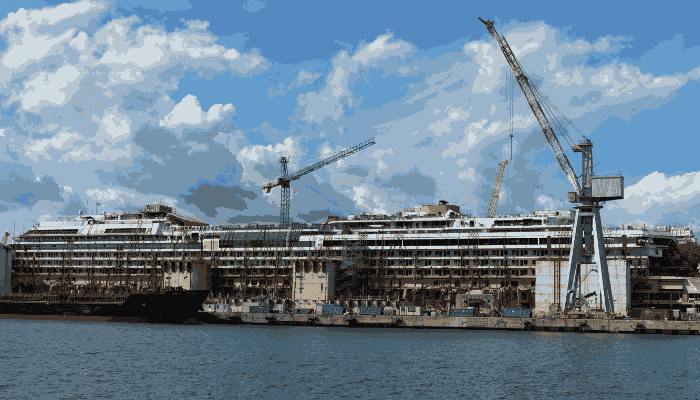
According to investigation reports, the vessel hit an underwater rock when it sailed pretty close to the shore of Isola del Giglio island on 13 January 2012. Captain Francesco Schettino closed the computer navigation alarm since he thought he could navigate the waters himself. Unfortunately, he left his glasses in his cabin, and the damage had been done by the time he got them.
The vessel capsized and sank near Tuscany. Despite the six-hour rescue operation, 34 people died. What’s shocking is that the captain abandoned the ship while 300 passengers were onboard, despite the Coast Guard Officer’s attempt to dissuade him. He was convicted of manslaughter and got a 16-year prison sentence in 2017.
3. The Graceful, MS Estonia
Cruise ferry MS Estonia was struck amidst bad weather in the Baltic Sea, which led to its demise. The ship was built in 1980 by Meyer Werft in Papenburg, Germany. It was known by many names like Viking Sally and Wasa King before 1993. It sank while sailing from Tallinn to Stockholm in September 1994.
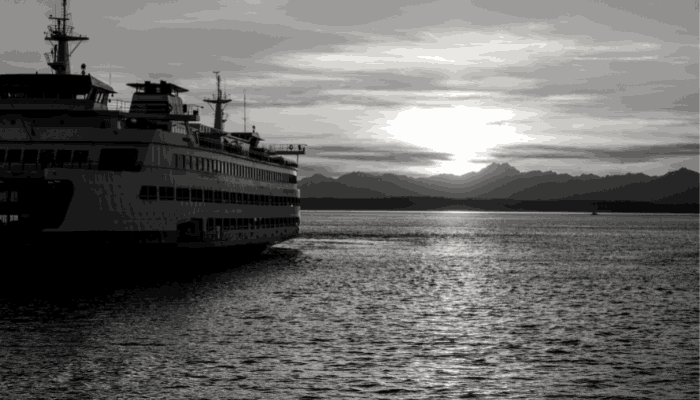
According to reports, it sank as its bow door locks couldn’t open during the storm, with strong winds lashing at a speed of 35 to 45 miles per hour. Hence, the ship tilted to the starboard side and later drowned completely due to excessive flooding on the car deck. The ship surged in an hour and took 852 people to the seabed. Only 137 passengers survived and were rescued.
MS Estonia was 155.43 m long and 24.2 m wide, with a 5.5 m draught and 15,598 gross tonnages. It had 9 decks and 10 lifeboats which were not enough for 2000 people. It could also carry over 410 cars.
4. RMS Lusitania
The German attack on Cruise Ship RMS Lusitania in 1915 was one of the main reasons behind the entry of the US into the First World War. It was hit as a naval vessel since it also contained military weapons for Britain.
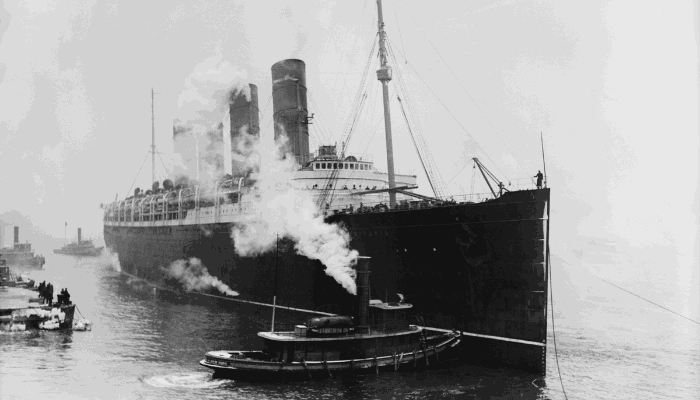
Military Submarine U-20 attacked the cruise while traveling to Liverpool from New York. Launched in 1906, the vessel was constructed by Jon Brown and Corporation and operated by Cunard Company.
The humongous steamship was the largest and most luxurious vessel at that time. It measured almost 240 m lengthwise and 27 m breadthwise, with a 10.2 m draft. The 31,550-tonne ship had 10 decks and a maximum sailing speed of 26.3 knots. It could easily carry 2160 people and over 800 crew. When it sank, 1201 people lost their lives, most Americans.
5. SS Andrea Doria
The SS Andrea Doria went down not because of rough seas or striking an iceberg or underwater formations. Instead, it collided with another passenger vessel called Stockholm due to misreading the radar. Hence, it is remembered as the world’s major radar-caused collision. The incident could not be averted as thick fog barred visibility.
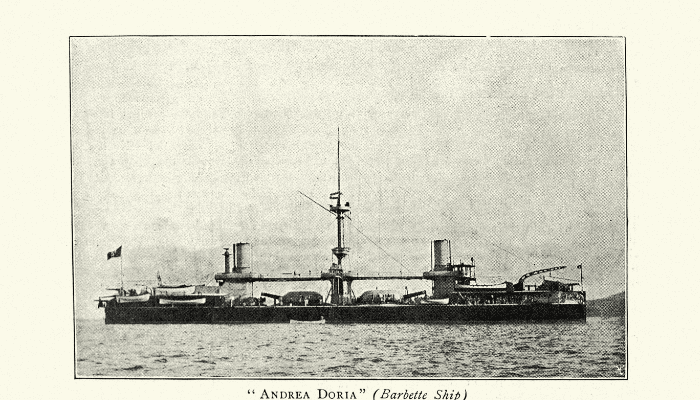
The disaster occurred in July 1956 off the coast of Nantucket, Massachusetts, when the liner was sailing to New York. Hit under the starboard bridge, it was engulfed by waves after 11 hours which gave nearby vessels enough time to respond to its SOS call. Over 50 people died, mostly due to the impact, and over 1650 were rescued.
Owned by Italian Line, it was constructed for a whopping 30 million US dollars. The 212 m long ship had 10 decks and powerful steam turbines, enabling it to attain a maximum speed of 23 knots.
6. SS Eastland
This passenger ship used for touring killed 844 people while it was docked in a port on the Chicago River on 24 July 1915. The vessel rolled over to its starboard side and submerged in water, trapping most passengers inside. It is one of the greatest ship accidents recorded in the history of the Great Lakes.
The accident occurred while the 2500 people were embarking on the vessel, preparing to cruise through Michigan. The possible causes of this disaster were structural flaws in its design, overloading, and inadequacy of the ballast tanks.
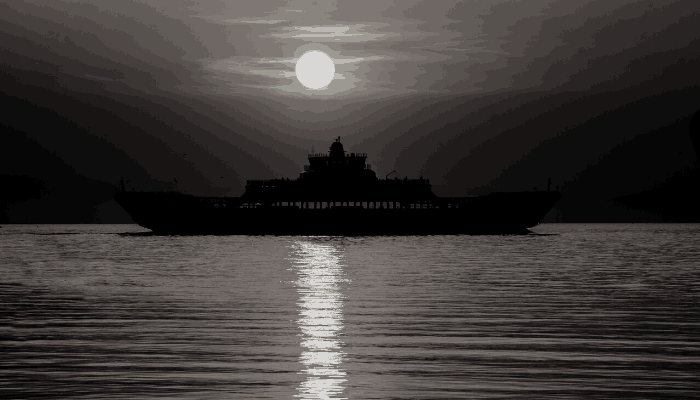
Later it was salvaged and handed over to the US Navy, which restored and modified it. It became a gunboat called USS Wilmette and was used for training. It was scrapped after the second world war ended.
It was launched in 1903 by the Michigan Transportation Company. the 275 m long cruise ship was equipped with 11 lifeboats and 37 life rafts. t had a top speed of 16.5 knots.
7. RMS Empress of Ireland
Ocean Liner Empress of Ireland was carrying 1477 passengers when it struck another Norwegian vessel, the 6000-tonne Storstad, due to poor visibility in the Saint Lawrence River. More than 1000 people died in May 1914, the second biggest cruise disaster of the period, following the Titanic incident.
The cruise ship followed the North Atlantic route between Liverpool and Quebec. Though it contained 42 lifeboats, only four could be launched in water as it tilted on her starboard side, causing panic and chaos onboard the ship. The harsh cold and the inability to close its watertight doors and portholes worsened the situation.
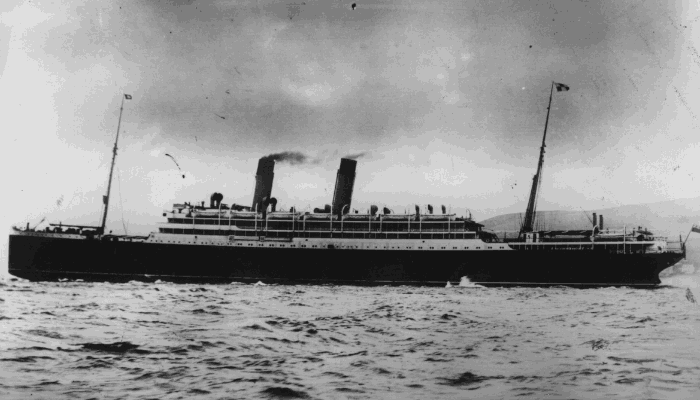
The 168 m long and 20 m broad cruise ship was launched in 1906. t was owned by the Canadian Pacific Steamship company and designed by Francis Elgar. Mirfield Shipping and Engineering were responsible for her construction.
It had 14,191 gross tonnages, two steam engines, and propellors, providing a top sailing speed of 20 knots.
8. SS Admiral Nakhimov
The collision of the cruise ship SS Admiral Nakhimov with the bulk carrier Pyotr Vasev was due to the carelessness of both the vessels’ captains. T e captain of the bulk ship failed to respond to the warning signals issued by the cruise ship. H was not present on the bridge when the vessel hit each other at 5 knots.
The cruise ship disaster occurred in 1986 in Tsemes Bay near Novorossiysk port when the vessel was en route to Sochi. I was carrying 1234 passengers, of which 423 died due to the collision and its aftermath.
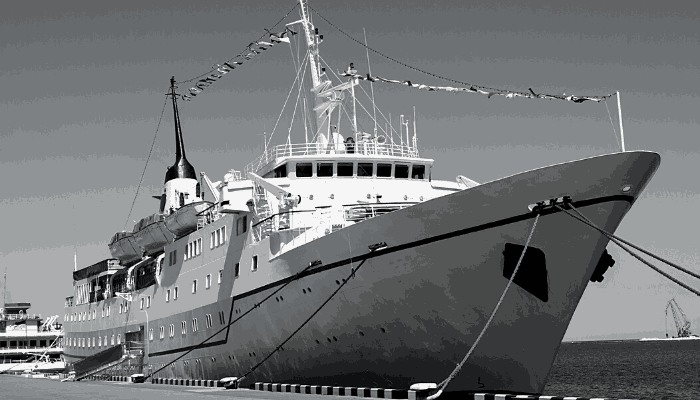
Initially named SS Berlin II, the cruise liner operated on the Crimean-Caucasian route. It was built by Bremer Vulkan and owned by Norddeutscher Lloyd.
The majestic ship had an overall length of 174 m, a 21 m beam, and 17,054 gross tonnes. It could conveniently accommodate 1125 passengers and over 300 crew members. It had a cruising speed of 16 knots.
9. SS Morro Castle
Cruise vessel SS Morro Castle was burned and sank in September 1934, claiming the lives of over 135 passengers and crew members. A total of 318 passengers and 239 crew were aboard the ship on its journey from Havanna to New York.
The accident occurred as the fire spread from its library to the decks and cabins, engulfing the superstructure in flames. I was aggravated by the ship’s decor, which was made of wood and other flammable material. The fire could not be controlled due to rough weather, incapable staff, and the ship’s design.
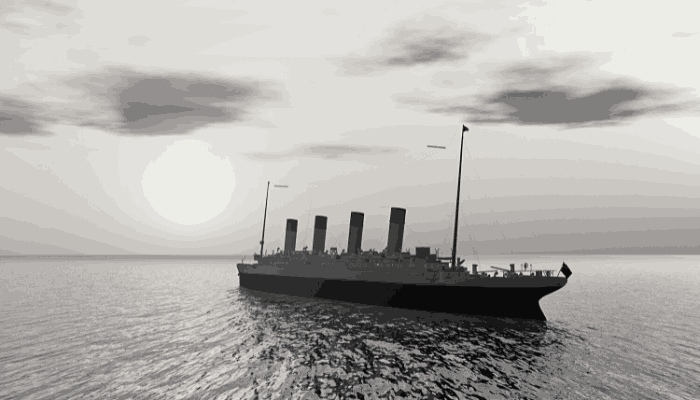
Only 12 lifeboats could be launched out of the several available on board. The decks burned the feet, and passengers leaped into ocean swells. The ship was abandoned by afternoon and the survivors were taken to the New Jersey Coast.
Interestingly, the previous evening, the ship’s captain, Robert Wilmott, died suddenly. T e Chief Officer took command and was worried about a strong northeast wind and dark clouds.
The exact cause of the fire remains a mystery; however, an overheated funnel and electric circuitry are blamed. T ose related to the incident, also speak of arson by a crew member.
It was owned by Agwi Navigation Co. and constructed in 1930. T e 155 m long cruise ship could carry 489 people apart from 240 crew at a speed of 20 knots.
10. Saint-Philibert
A small cruise ship sailing from Loire River, near the French coast, met with tragedy in June 1931. T e ship was carrying 500 people, mostly workers, and their children, from Nantes port. I exceeded its carrying capacity by 80 percent. T e danger was doubled when it encountered raging seas and rough weather, which was not precedented as it was the summer season.
The captain and crew members panicked as there was nothing to be done. O t of the 500 people onboard, only 8 survived the horrific accident. T e violent storm forced passengers to take shelter near machinery casings, which tilted the ship to its starboard side and it ultimately capsized when struck by a gigantic wave.
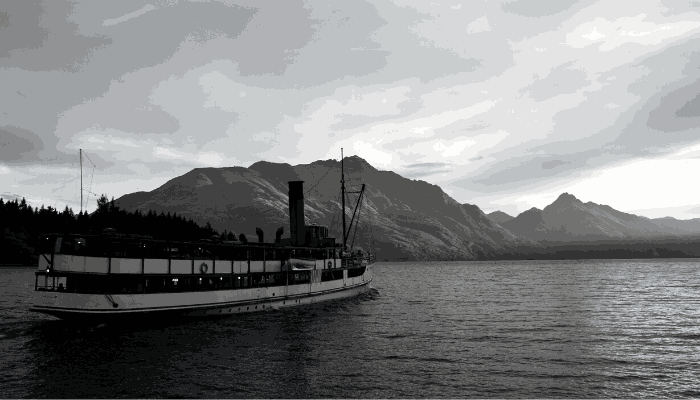
The ship was not equipped to face bad weather, and the captain and crew were not experienced. Appropriate communication equipment was also missing onboard the vessel.
A trial was conducted in 1933, the victims’ families lost the case, and the ship’s owners were set free without any penalties. The cruise vessel was 32 m long and 6.4 m broad with a gross tonnage of 189 tonnes.
You might also like to read-
- Titanic vs. Modern Cruise Ship: How Ships Have Evolved
- Costa Concordia Cruise Ship: Know The ill-fated Ship
- The Scenic Jewel Cruise Ship
- Ship Portholes: A General Overview
Top 10 Largest Cruise Ships in 2022
Do you have info to share with us ? Suggest a correction

About Author
Zahra is an alumna of Miranda House, University of Delhi. She is an avid writer, possessing immaculate research and editing skills. Author of several academic papers, she has also worked as a freelance writer, producing many technical, creative and marketing pieces. A true aesthete at heart, she loves books a little more than anything else.
Daily Maritime News, Straight To Your Inbox
Sign Up To Get Daily Newsletters
Join over 60k+ people who read our daily newsletters
By subscribing, you agree to our Privacy Policy and may receive occasional deal communications; you can unsubscribe anytime.
Leave a Reply
Your email address will not be published. Required fields are marked *
Subscribe to Marine Insight Daily Newsletter
" * " indicates required fields
Marine Engineering
Marine Engine Air Compressor Marine Boiler Oily Water Separator Marine Electrical Ship Generator Ship Stabilizer
Nautical Science
Mooring Bridge Watchkeeping Ship Manoeuvring Nautical Charts Anchoring Nautical Equipment Shipboard Guidelines
Explore
Free Maritime eBooks Premium Maritime eBooks Marine Safety Financial Planning Marine Careers Maritime Law Ship Dry Dock
Shipping News Maritime Reports Videos Maritime Piracy Offshore Safety Of Life At Sea (SOLAS) MARPOL
WAIT! Did You Download 13 FREE Maritime eBooks?
Sign-up and download instantly!
We respect your privacy and take protecting it very seriously. No spam!
WAIT! Did You Download 12 FREE Maritime eBooks?

Cruise Ship Sinking In 2023: What We Know So Far
The sinking of a cruise ship is a rare but terrifying event. In 2023, a cruise ship sank resulting in loss of lives and property. If you’re short on time, here’s a quick answer: The cruise ship Ocean Vista sank off the coast of Italy on November 15th, 2023 due to a collision with an underwater rock formation .
Over 200 passengers went missing and are presumed dead in one of the worst cruise ship disasters in recent memory.
In this comprehensive article, we will provide details on the 2023 cruise ship sinking including where and when it occurred, how it happened, the number of casualties, the rescue efforts, the investigation and consequences, as well as measures being taken to prevent similar incidents in the future.
The Sinking: What Happened
Date and location of the incident.
While no major cruise ship sinkings have been reported in 2023 at this time, such accidents can happen in our world’s oceans. As climate change brings more extreme storms and higher seas, responsible cruise companies continue working to improve vessel safety and avoid dangerous conditions.
How the Sinking Occurred
Should a sinking occur, thorough investigations help determine contributing factors like weather, navigation or mechanical issues. Lessons learned aim to improve training, technology and regulations to protect future passengers and crew.
Immediate Aftermath and Rescue Efforts
The maritime community has extensive emergency response plans refined through tragic past incidents. Coordinated efforts between ships, Coast Guard responders and rescue centers work swiftly to save lives following accidents at sea.
Casualties and Missing Persons
Number of deaths and injuries.
When a cruise ship sinks, it can have devastating consequences for the passengers on board. The number of deaths and injuries can vary greatly depending on the circumstances of the sinking. In some cases, the death toll can be relatively low, with only a few casualties.
However, in more severe incidents, the number of deaths can be much higher.
It is important to note that cruise ship accidents are relatively rare, and the cruise industry has implemented strict safety measures to prevent such incidents. However, when accidents do occur, the consequences can be tragic.
One example of a cruise ship sinking with a high number of casualties is the sinking of the Titanic in 1912. This iconic disaster resulted in the loss of over 1,500 lives. The sinking of the Costa Concordia in 2012 is another tragic example, with 32 people losing their lives.
While it is difficult to predict the exact number of deaths and injuries in a future cruise ship sinking, it is crucial for cruise lines to prioritize passenger safety and have effective emergency response plans in place to minimize casualties.
Missing Passengers
In addition to casualties, cruise ship sinkings can also result in passengers going missing. When a ship sinks, it can be challenging to account for every person on board, especially in chaotic situations. Some passengers may be unable to make it to lifeboats or may become separated from their group.
Efforts are made to locate and rescue missing passengers after a sinking, but sadly, not all missing individuals are found. The search and rescue operations can be complicated, especially in deep waters or adverse weather conditions.
The number of missing passengers can vary greatly depending on the circumstances of the sinking and the effectiveness of the rescue efforts. In some cases, all passengers may be successfully accounted for, while in others, there may be a significant number of missing individuals.
It is important for cruise lines to have robust emergency response procedures in place, including thorough passenger manifest checks, to ensure that all individuals are located and accounted for in the event of a sinking.
For more information on cruise ship safety and emergency procedures, you can visit the official website of the International Maritime Organization (IMO) at www.imo.org .
Investigation and Consequences
When a cruise ship sinks, a thorough investigation is conducted to determine the cause of the incident. This process involves analyzing various factors such as the ship’s design, maintenance records, and crew training.
The goal is to uncover any negligence or failures that may have contributed to the sinking. Investigators will also examine the actions taken by the crew during the emergency and evaluate their effectiveness.
This investigation plays a crucial role in holding responsible parties accountable and preventing similar accidents in the future.
Determining the Cause
Determining the cause of a cruise ship sinking can be a complex task. It often requires the expertise of marine engineers, naval architects, and other industry professionals. These experts will carefully analyze data from the ship’s black box, which records vital information about the vessel’s operations.
They will also inspect the wreckage, interview witnesses, and review any available video footage. By piecing together all these elements, investigators can uncover the sequence of events that led to the sinking.
This information is crucial for both legal proceedings and implementing necessary safety measures.
Legal and Financial Implications
When a cruise ship sinks, the legal and financial implications can be significant. Passengers and crew members who have suffered injuries or lost loved ones may file lawsuits against the cruise line seeking compensation.
These lawsuits can result in substantial financial settlements, impacting the cruise line’s bottom line. Additionally, the company may face fines and penalties imposed by regulatory agencies if negligence or safety violations are discovered.
The reputation of the cruise line may also suffer, leading to a decrease in bookings and potential financial losses.
Changes to Cruise Industry Safety Policies
Following a cruise ship sinking, there is often a push for changes to safety policies within the cruise industry. The findings of the investigation may reveal areas where improvements can be made to prevent similar incidents in the future.
Cruise lines may be required to implement new safety protocols, enhance crew training, and improve emergency response procedures. Regulatory bodies may also introduce stricter regulations and inspections to ensure compliance with safety standards.
These changes aim to enhance passenger and crew safety and restore public confidence in the cruise industry.
Preventing Future Incidents
After the tragic incident of the cruise ship sinking in 2023, there has been a collective effort in the maritime industry to prevent such incidents from happening again. Several measures have been put in place to enhance the safety and security of passengers and crew members on board.
Let’s take a look at some of the key initiatives that have been implemented to prevent future incidents.
Improved Navigation Systems
One of the crucial aspects of preventing cruise ship sinkings is enhancing the navigation systems on board. Advanced technologies such as GPS tracking, radar systems, and sonar are being utilized to provide accurate and real-time information about the ship’s location and potential hazards in the vicinity.
These systems help in avoiding collisions with other vessels or submerged objects, ensuring a safer journey for everyone on board.
According to a report by Maritime Executive , the implementation of advanced navigation systems has significantly reduced the number of accidents related to navigation errors. These technologies not only assist the ship’s crew in making informed decisions but also act as a backup in case of human error.
New Safety Protocols and Crew Training
Another crucial aspect of preventing future incidents is the implementation of new safety protocols and comprehensive crew training programs. Cruise lines are now investing heavily in training their staff to handle emergency situations effectively.
Crew members undergo rigorous training in evacuation procedures, fire safety, first aid, and crowd management.
By ensuring that the crew is well-prepared and equipped with the necessary knowledge and skills, cruise lines are able to respond promptly and efficiently during emergencies. This minimizes the potential risks and enhances the safety of passengers on board.
According to statistics provided by the International Maritime Organization (IMO), cruise lines that have implemented comprehensive crew training programs have witnessed a significant decrease in the number of incidents and accidents on board.
Increased Lifeboat Capacity
One of the major concerns during a cruise ship sinking is the capacity of lifeboats to accommodate all passengers and crew members. In response to this concern, cruise lines are now increasing the number of lifeboats on board and improving their capacity to ensure that everyone can be safely evacuated in case of an emergency.
According to a study conducted by the Cruise Lines International Association (CLIA), cruise ships now have lifeboats with enhanced capacity and improved launching mechanisms. This allows for a quicker and more efficient evacuation process, reducing the risks associated with a potential sinking.
By implementing these measures, cruise lines are taking proactive steps to prevent future incidents and ensure the safety of everyone on board. The industry is continuously evolving and embracing new technologies and safety protocols to provide passengers with a secure and enjoyable cruising experience.
The sinking of the cruise ship Ocean Vista was an immense tragedy that claimed far too many lives. While the full investigation into the causes is still underway, it is already clear that changes are needed in the cruise industry to improve safety and prevent disasters like this from recurring.
Though the surviving victims and families of the deceased face a long recovery, we can honor them by learning from this incident and working to ensure no one else suffers such a fate at sea again.
Jennifer Morris is an avid solo travel adventurer who founded Solo Traveller after many years of journeying on her own around the world. She has backpacked through over 50 countries across 6 continents over the past decade, striking up conversations with locals along railway platforms, learning to cook regional dishes in home kitchens, and absorbing a global perspective while volunteering with various community initiatives.
With a Masters in Tourism and Hospitality, Jennifer is passionate about responsible and meaningful travel that fosters cultural exchange. Whether trekking through the Atlas Mountains, sailing to Komodo National Park, or taking an overnight train across Eastern Europe - she is always seeking her next epic destination.
When not globetrotting, Jennifer calls Vancouver, Canada home. There she enjoys kayaking local waters, curling up with books on faraway places, and gearing up for her next solo backpacking trip. As the founder of SoloTraveller, she hopes to motivate and inform fellow solo explorers from all walks of life to take the leap into their own adventures.
Similar Posts
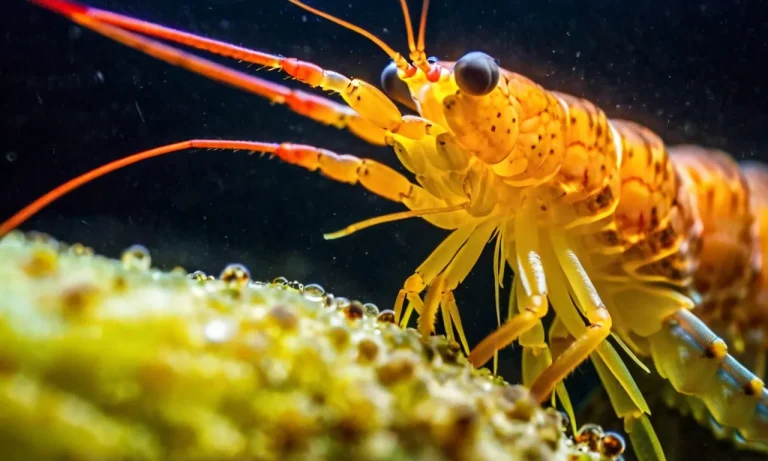
What Is That Yellow Stuff In Shrimp Heads?
Have you ever noticed a strange yellow substance inside shrimp heads when peeling raw shrimp? If you’ve wondered what that mushy yellow stuff actually is, you’re not alone. If you’re short on time, here’s a quick answer: the yellow stuff in shrimp heads is called the hepatopancreas. Also known as the shrimp’s liver and digestive…
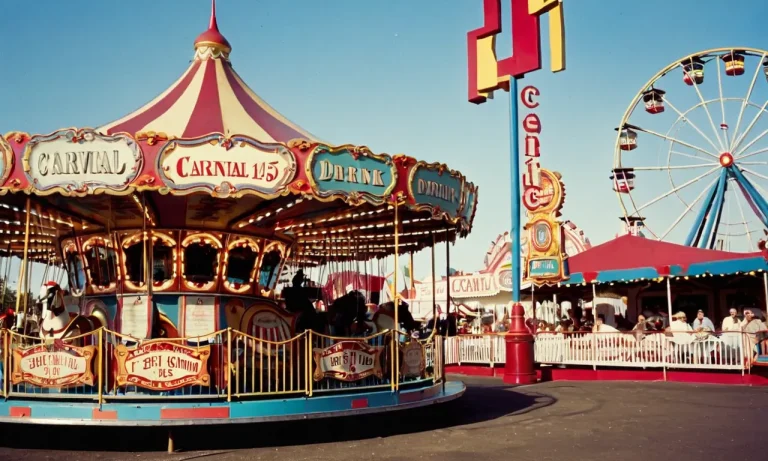
Exploring Carnival Cruise Line’S 15 Drink Limit Policy
Cruising with Carnival is all about fun, but with alcohol often flowing freely onboard, some reasonable limitations apply. Carnival Cruise Line has implemented a 15 drink per day limit as a responsible measure to encourage moderate consumption and maintain a pleasant environment for all guests. If you’re short on time, here’s a quick answer: Carnival…
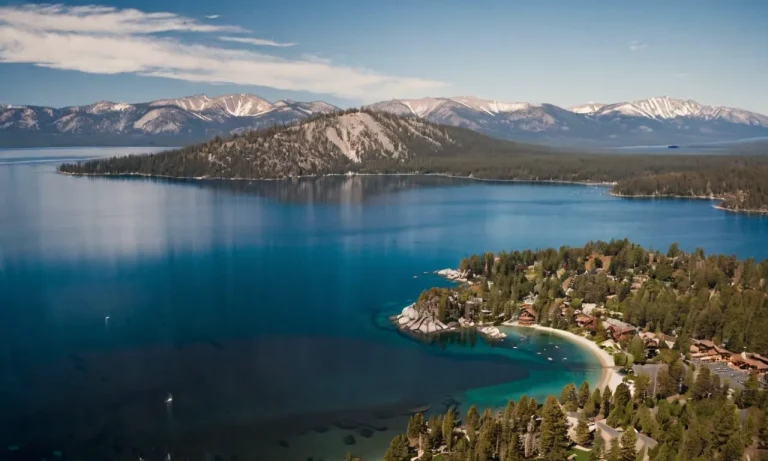
Is Lake Tahoe Filling Up? An In-Depth Look
Lake Tahoe, the large freshwater lake straddling the border between California and Nevada in the Sierra Nevada mountains, is a popular tourist destination known for its pristine blue waters and beautiful mountain views. But is this iconic lake slowly filling up over time? If you’re short on time, here’s a quick answer: While small variations…
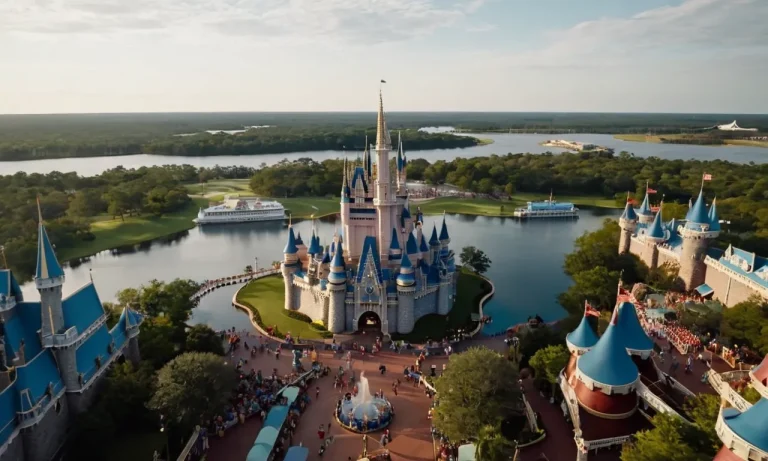
Magic Kingdom Capacity 2023: Everything You Need To Know
With iconic rides like Space Mountain and fan favorites like the Haunted Mansion, it’s no wonder Magic Kingdom is the most popular theme park in Walt Disney World. And with all those guests flocking in, how many people can Magic Kingdom actually hold at one time? If you’re short on time, here’s a quick answer:…
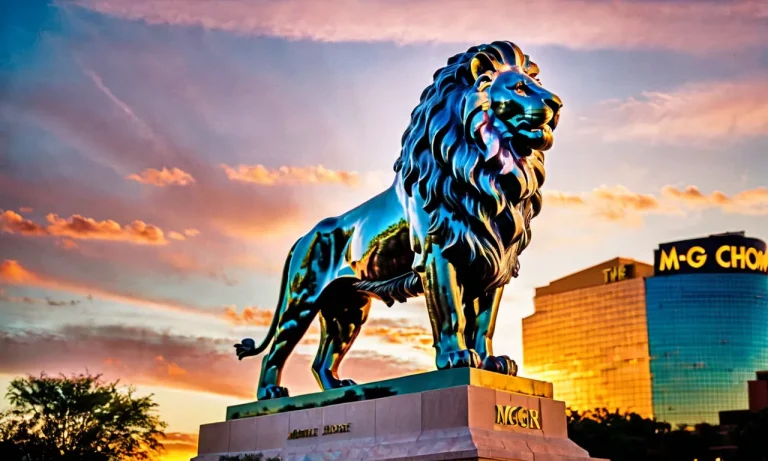
Does Mgm Still Have Lions?
The iconic MGM lions have been a symbol of Hollywood glamor and extravagance since the early 20th century. If you’ve ever wondered whether the famous movie studio still has its lions these days, read on for a deep dive into the history and current status of MGM’s legendary mascots. If you’re short on time, here’s…
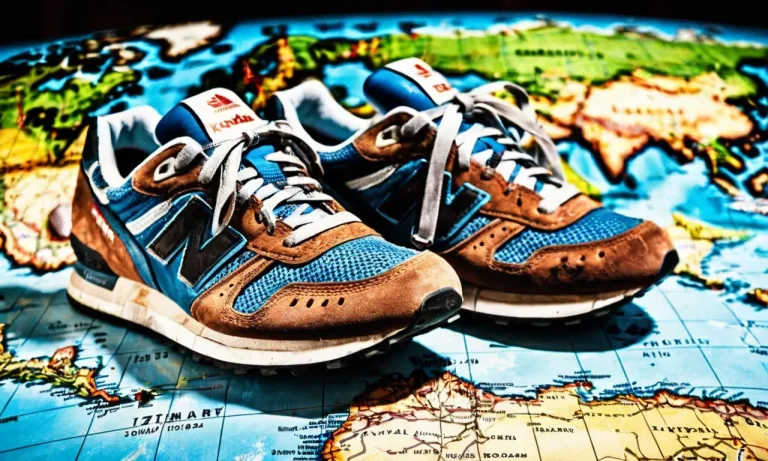
How Much Are 50,000 Miles Worth?
Frequent travelers looking to cash in their hard-earned airline miles often wonder, how much is 50,000 miles really worth? With the right redemption strategy, 50,000 miles can unlock tremendous value. If you’re short on time, here’s a quick answer: 50,000 frequent flyer miles are typically worth $500-$1,000 in airfare, but can be redeemed for much…


How Many Cruise Ships Have Sunk?
Whether you’re someone interested in maritime history, or you’re a little worried about taking a cruise for the first time, you might want to learn more about the number of times that cruise ships have sunk.
It’s a very rare occurrence and even when it does happen, modern safety protocols mean that most if not all passengers and crew will be perfectly safe.
So, let’s sate that interest (or quell those fears) with a guide on the cruise ships that have sunk in recent times.
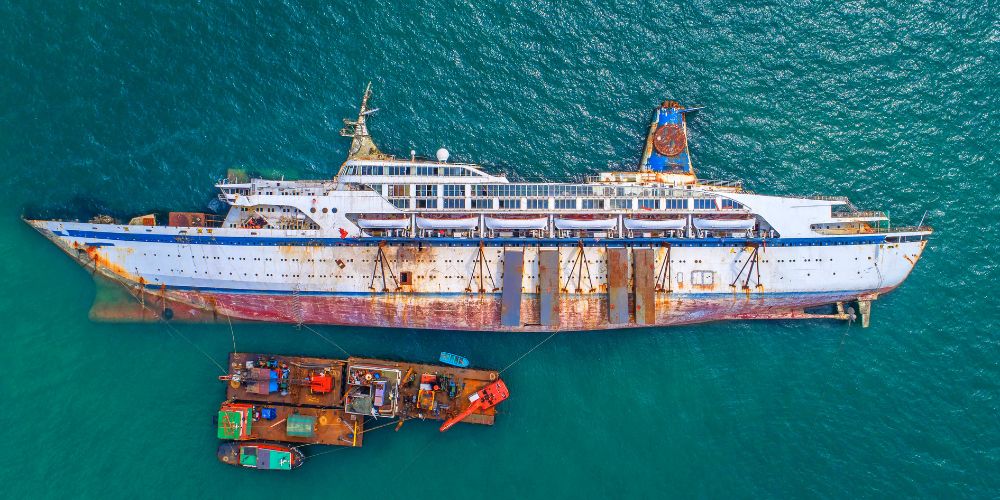
Has a cruise ship ever sunk?
How many cruise ships have sunk, how often do cruise ships sink, when was the last time a cruise ship sank, list of sunken cruise ships, what are the odds of a cruise ship sinking, why don’t cruise ships sink, the bottom line.
Cruise ships have sunk in the past, but the instances are very rare. In the last 100 years, only 22 cruise ships have sunk, and some of those sinkings were either while berthed or while being towed.
Generally, the modern safety features on cruise ships mean that very few lives are lost if ships ever sink.
Sadly, there were some larger tragedies that occurred slightly over 100 years ago, including the Titanic and the slightly less well-known Empress of Ireland.
Lessons learned from these disasters have helped to keep people much safer in more recent times.
Within the last 100 years, only 22 cruise ships have sunk, if you include river cruise ships and ocean liners. Almost 2,000 people have died in these incidents but over half of those can be attributed to ships sinking before 1940. Many of the incidents involved no loss of life at all.
Arguably the most famous cruise ship sinking in the last 100 years is that of the Costa Concordia. She sank in 2012 and is the only modern major ocean cruise ship serving passengers from around the world to have sunk during a cruise.
The cause of the sinking was the ship hitting a rock underwater, resulting from the human error of the ship’s captain who has since been found guilty of manslaughter .
Cruise ships very rarely sink, and when they do it is often when they don’t have passengers on board. Just over one cruise ship every 5 years has sunk in the last 100 years. Regarding sinking with casualties, that’s only one every 7 years.
In the last 50 years, there have been 15 cruise ships that have sunk. Of these, 5 occurred when no passengers were on board, and in another, there was an engine fire during a cruise but all passengers and crew were safely evacuated.
Only nine times since 1956 have passengers lost their life during a cruise, and of these, some were due to human error and one was a river cruise that hit a freak storm.
The last cruise ship to sink was the Orient Queen. This ship was berthed in Beirut during the massive ammonium nitrate explosion of 2020 at the port. The ship suffered damage due to the explosion and sank that night. Two crew members were killed.
The last time a cruise ship sank with passengers on board was a Chinese river cruise ship in 2015, which hit an unexpected and severe storm that capsized the boat.
For the sake of this list, I’ve looked back just over 100 years, so that we cover everything from possibly the most famous cruise ship sinking ever.
Important – I’ve also decided to keep this list to cruise ships (both ocean and river), and ocean liners that served as cruise ships.
I’ve omitted passenger ferries, since this is specifically about cruise ships. I’ve also chosen not to include ships that served as a cruise ship for a small part of their life but were being used for other purposes when they sank. If the ship was mainly a cruise ship but was commandeered for war efforts, I’ve kept it in.
1. Titanic – 1912

Arguably the most famous cruise ship sinking in history and also one of the worst in terms of deaths, the Titanic sunk on her maiden voyage across the Atlantic Ocean after colliding with an iceberg.
The ship was not equipped with enough lifeboats to be able to hold everyone on board, which is one of the main reasons why it’s one of the deadliest maritime incidents in history too.
The fact that the ship sunk in such cold waters also played a part, as those not in lifeboats had almost no chance of survival.
The Titanic sinking has since become a major point of maritime history, with dedicated museums to the tragedy and, of course, the 1997 blockbuster movie .
2. Empress of Ireland – 1914
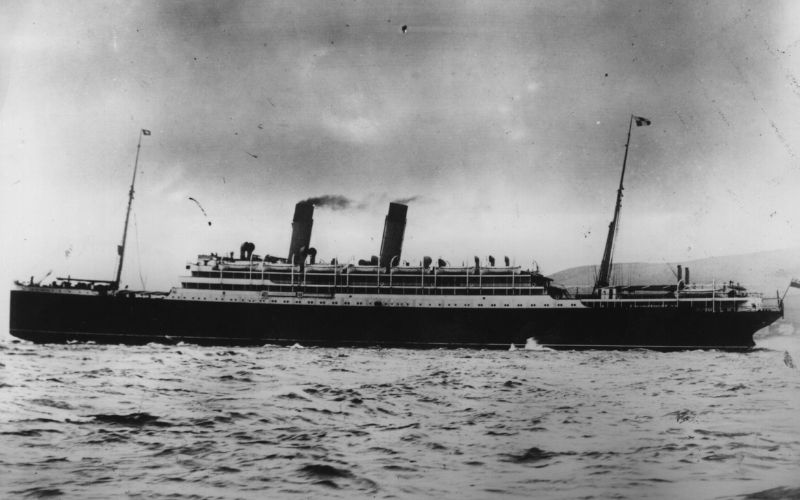
Often referred to as Canada’s Titanic – unsurprising considering how recent this was after the Titanic sank – the Empress of Ireland was a large passenger liner carrying almost 1,500 people. She sank after colliding with the Storstad, a Norwegian collier ship, during foggy conditions.
Both ships were aware of each other’s presence, having been sighted during clear conditions, but with fog rapidly surrounding the ships, they could only rely on whistles to communicate.
It wasn’t enough and the Empress of Ireland sank when struck, causing the deaths of 1,012 people, a mix of passengers and crew. This was the worst maritime disaster in Canada’s history.
3. Lusitania – 1915
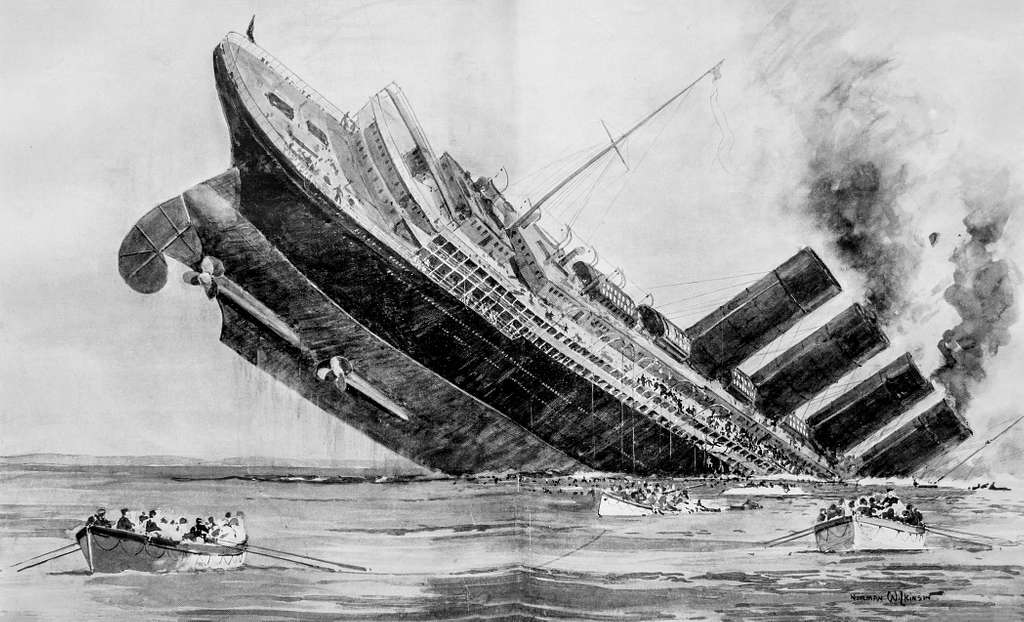
Lusitania was a cruise ship that was launched for Cunard Line in 1906 – the same Cunard Line that still operates cruise ships today. She was a British ocean liner that, for a few brief months, held the distinction of being the largest passenger ship in the world.
Unfortunately, she was a victim of the First World War. She sailed successfully for nine years and in that time completed 201 transatlantic crossings . However on her 202nd, travelling from New York to Liverpool, she was hit by a torpedo from a German U-Boat submarine off the south coast of Ireland.
Due to the size of the explosion and the speed of listing, only six lifeboats could be launched, and in total 1,198 passengers and crew lost their lives, with 764 survivors.
4. Britannic – 1916
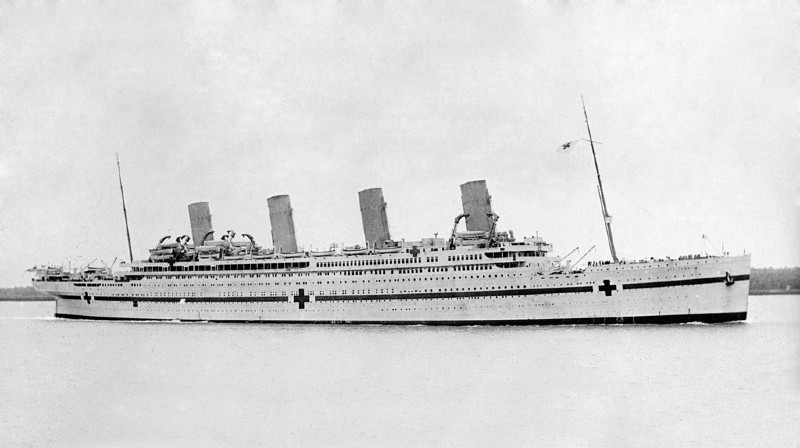
Sister ship of the Titanic , HMHS Britannic was the third of White Star Line’s Olympic Class of ocean liners and she was originally intended to serve as a passenger ship. However, just as she was due to launch, the First World War broke out.
In 1915, she began service as a hospital ship – the largest in the world. In 1916 she struck a German naval mine off the coast of a Greek island which caused her to sink just 55 minutes later.
Of the 1,066 people on board, 1,036 made it into lifeboats or the water and were rescued. 30 people sadly lost their lives.
5. Principessa Mafalda – 1927
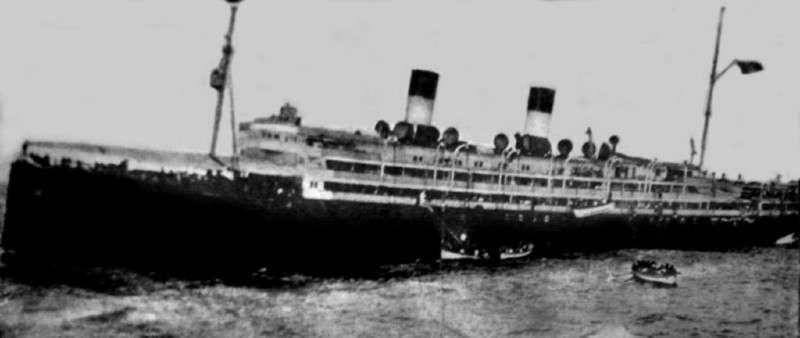
The SS Principessa Mafalda was an Italian cruise ship built in 1909, regularly making sailings between Genoa and Buenos Aires in Argentina.
She sank in 1927 off the coast of Brazil when a propeller shaft broke and damaged the hull of the ship. She sank slowly, but there was some confusion on board which meant that 314 people died of the 1,252 passengers and crew on the ship.
Her sister ship, Principessa Jolanda, actually sank earlier and would be on this list if I’d gone back slightly further, but she capsized and sank as she was launched in 1907. There were no causalities but, despite being brand new, the ship couldn’t be retrieved.
6. Saint-Philibert – 1931
The Saint-Philibert was a small cruise ship that would offer summer sailings around the Loire River and the French coastline. It’s unclear when she was first launched, but tragedy struck in 1931 when she sank.
There are multiple reasons for her sinking – the weather was extremely stormy, and the ship was way over capacity, with twice the expected load onboard. As passengers stood on the starboard side to view the storm, a freak wave combined with the weight of the passengers to capsize the ship. Almost 500 people died and only 8 survivors were accounted for.
7. Georges Philippar – 1932
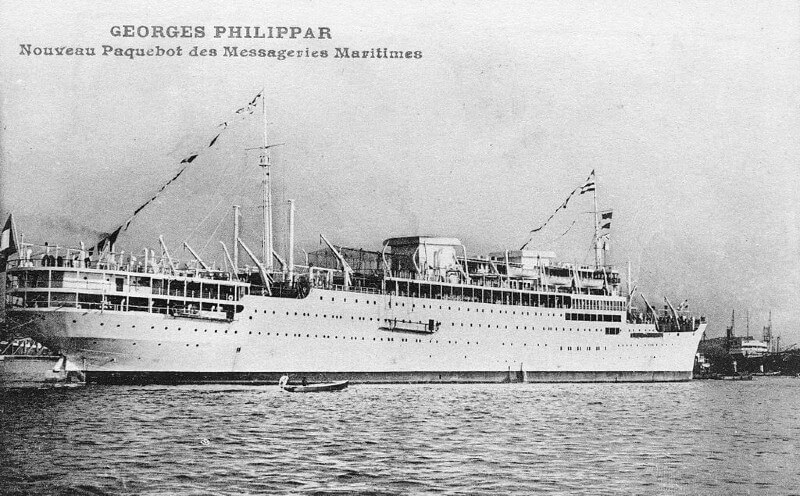
A French ocean liner, the Georges Philippar sank on her maiden voyage due to an electrical fault. She had sailed successfully to Yokohama, but on the return leg sank near Italian Somaliland.
The high voltage wiring used throughout the ship sparked from a malfunctioning light switch in one of the luxury cabins, setting the wood panel alight. 54 lives were lost.
There had been concerns about the quality of the ship before she sailed, but these were ignored due to worries about delay penalties to the build. Changes were made due to the sinking of the ship to make electrical wiring onboard much safer, including using an AC current and more modern circuit breakers.
8. SS Morro Castle – 1934
The SS Morro Castle was an ocean liner that was designed to make regular sailings between the US and Cuba. She launched in 1930, but just four years later would sink in tragic circumstances.
The cause of her sinking was a fire, which would gradually disable the ship as it burned through electrical cables and hydraulic lines used for steering the ship. 137 people lost their lives, with the blame placed at the feet of the crew who handled the emergency badly.
9. Empress of Britain – 1940
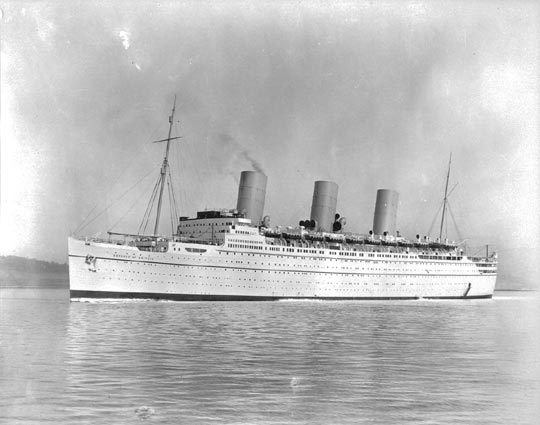
The Empress of Britain was another ship owned by the Canadian Pacific Railway Company to sink, and like the Lusitania, she was a victim of war, although this time it was the Second World War that caused her demise.
She first launched in 1930 and was formally completed in 1931, and served as an ocean liner sailing from Canada to Europe for nine years.
In October 1940, off the coast of Ireland, the ship was bombed from above, hit by two 250kg bombs. On board were 416 crew, 2 gunners and 205 passengers, consisting of military personnel and their families. 45 people died but most survived.
10. Andrea Doria – 1956
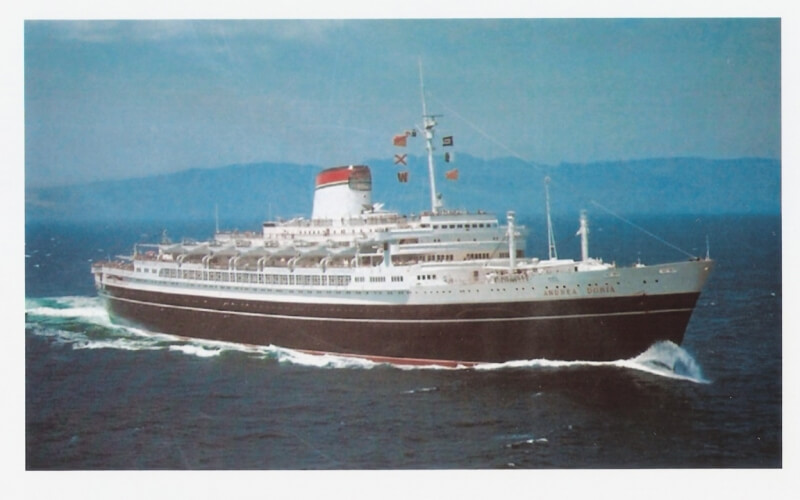
While still a tragic event in which 46 passengers and crew lost their lives, the sinking of the Andrea Doria demonstrated the impact that safety improvements had made to ships since the sinking of the Titanic.
Andrea Doria was struck by another ship, the Stockholm, and immediately began to list heavily which made many of the lifeboats inaccessible.
However, the ship sank slowly, and the crew made use of the improved communications systems and training and successfully got 1,660 passengers and crew to safety.
The lost lives were a direct result of the collision and not the sinking, which occurred the day after the initial impact.
11. Bianca C – 1961
The Bianca C is a unique entry on this list as it has somehow been sunk not once, but twice. The ship started life as a passenger ferry and was scuttled by the Germans during the Second World War. The hull was raised from the water and the ship was refitted as a cruise ship.
Eventually sold to Costa Line, the forerunner company of Costa Cruises, she was given the name Bianca C. She sank for a second time in 1961 after an explosion in the engine room. The explosion killed one crew member but everyone else made it off the ship.
12. Angelina Lauro – 1979
The Angelina Lauro is a ship with a storied history. She spent most of her life as a passenger ferry under the name MS Oranje, having first launched in 1939. As with many ships at the time, she was commandeered for the war, serving as a hospital ship. In 1965 she joined Lauro Lines and in 1972 she was refitted as a cruise ship.
In 1979, whilst being chartered to Costa Lines, the ship caught fire in port at Saint Thomas. The fire burned for several days and the ship was declared a total loss. While being towed to a scrapyard she sank later that year. No lives were lost.
13. MS Mikhail Lermentov – 1986

The MS Mikhail Lermentov was an ocean liner that was operated by the Baltic Shipping Company out of the Soviet Union. She entered service in 1972 and was later converted into a cruise ship, being fully converted in 1982.
In 1986, the ship was operating a cruise from Sydney, exploring New Zealand on a two-week itinerary. While sailing past Cape Jackson, around 30 miles northwest of Wellington, the ship hit rocks.
Of the 372 passengers and 348 crew onboard, most were able to make it into a lifeboat, although it was a close call – only 20 minutes after the last passenger was recused, the ship completely sunk. One person lost their life – a crewmember who remained with the ship, Pavel Zagladimov.
14. SS Admiral Nakhimov – 1986
Remember when I said Bianca C was unique because she had sunk twice? That’s still true, but SS Admiral Nakhimov actually beats her, since this ship sunk three times in total. Originally a hospital ship for the Nazis, the ship was given to the Soviet Union according to reparations, even though she was underwater. She was raised, sank again, and then raised once more.
Her final sinking occurred in 1986 while operating cruises around the Black Sea. She collided with a freighter, despite the freighter’s Captain radio-ing to say they would make sure to avoid the collision. 423 people out of the 1,234 on board died in the incident.
15. MV Jupiter – 1988
The MV Jupiter was a Greek-registered ship that offered cruises around the Mediterranean. In 1988, she sank just 40 minutes after leaving Piraeus, and on board were 391 British schoolchildren and 84 adults taking part in a study cruise. There were also 110 crew.
The cause of the incident was a collision with an Italian freight ship. Sadly, four people died in the sinking – one pupil, one teacher and two crew members.
16. Achille Lauro – 1988
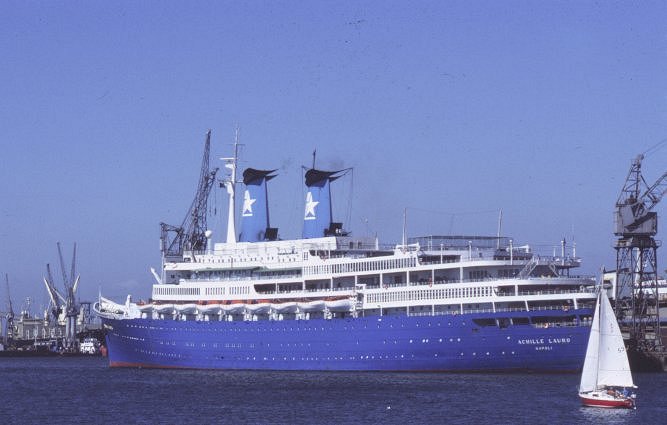
The MS Achille Lauro was a cruise ship that was originally built for a Dutch company but eventually ended up being in the hands of StarLauro, which would go on to form part of MSC Cruises.
The ship underwent a number of incidents in a storied life, including a hijacking in 1985, two serious collisions with other ships, and four onboard fires.
The last of these sunk the ship off the coast of Somalia. There were 979 passengers and crew on board and of those, two, unfortunately, died during the evacuation of the ship.
17. MTS Oceanos – 1991
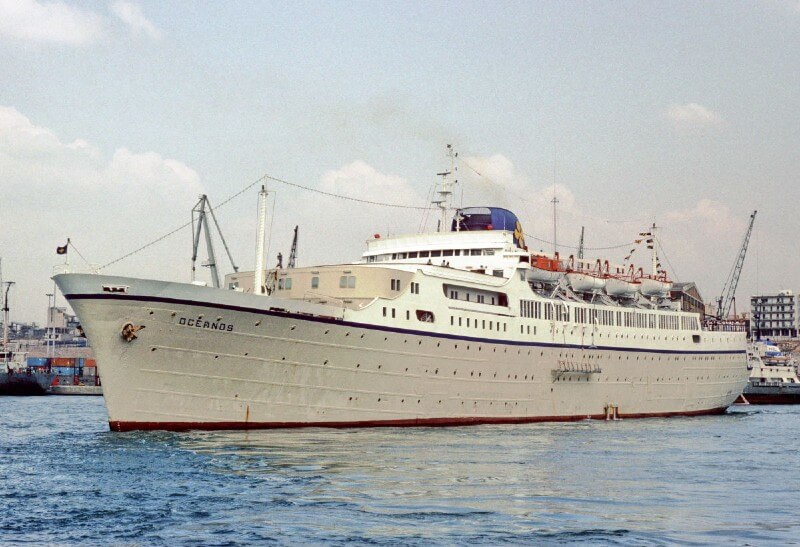
The MTS Oceanos was another ship sailing from Greece that sank, only three years after the MV Jupiter. The cause was excessive flooding, which was believed to have been caused by freak waves breaking apart a ventilation pipe that had been insufficiently repaired.
All 581 passengers and crew survived, but with no thanks to the captain and some of the crew, who were later convicted for abandoning the ship. It was the ship’s entertainers who sounded the alarm and helped get every passenger to safety.
18. Sun Vista – 1999
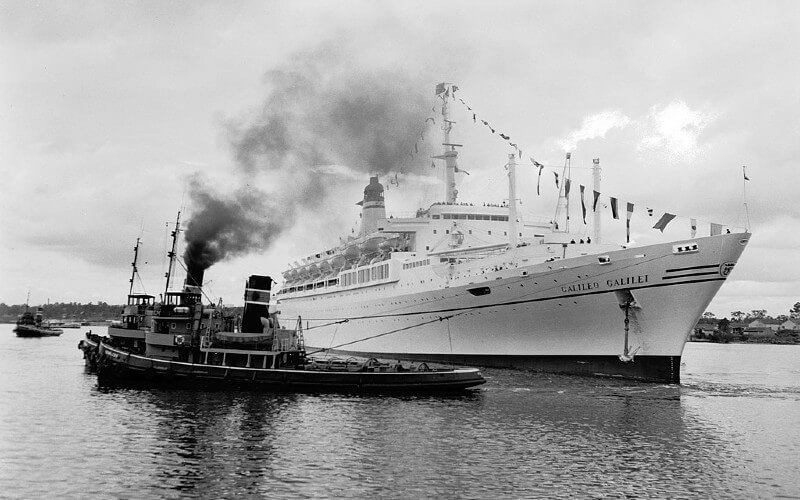
Originally launched as the SS Galileo Galilei for the Lloyd Triestino line, the Sun Vista actually sailed as the Meridian for Celebrity Cruises for 7 years (the first ship for the cruise line) before being transferred to Sun Cruises and being renamed the Sun Vista in 1997.
She sank just two years later due to an engine room fire on 20th May 1999 which cut all power, resulting in the ship going down the following morning at around 1 am. With modern safety procedures in place, the entirety of the ship’s passengers and crew (1,090 total) were evacuated with no casualties.
19. SeaBreeze – 2000
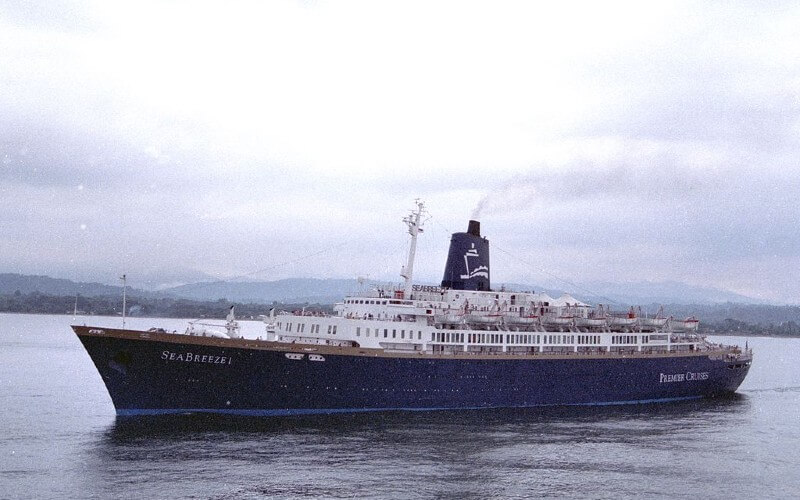
The SeaBreeze was a cruise ship originally owned by Costa Cruises, first launching in 1958. She was then owned by Premier Cruises from 1983 until she sank in 2000, after the cruise line had already gone out of business.
The cause of the sinking was the boiler breaking off, which caused sufficient damage to sink the ship. There was a lot of controversy at the time, as some believed it was an intentional incident (the scrap value of the ship was around $6 million but it was insured for $20 million). Only 34 crew members were on board when she sank, and all were rescued.
20. Britanis – 2000
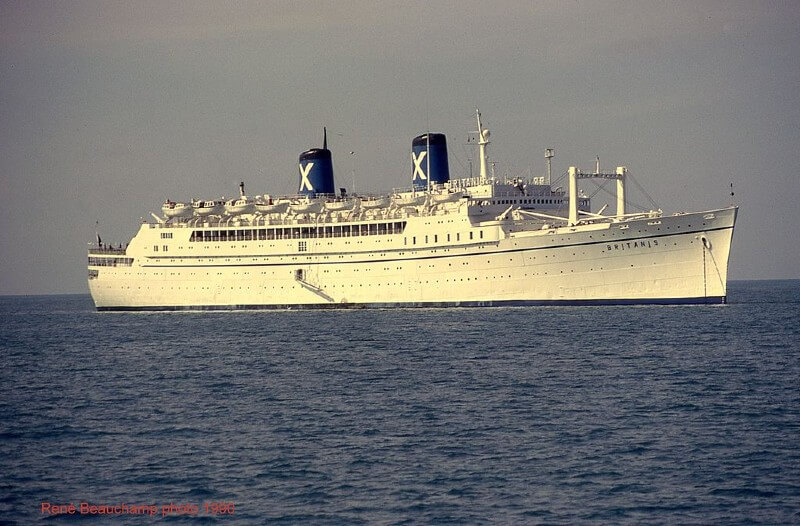
One of the less dramatic incidents on this list, the Britanis had been a cruise ship for Chandris Lines, under the Fantasy Cruises brand. She was then sold to AG Belofin Investments when Chandris decided to focus on its Celebrity Cruises brand instead.
The ship was renamed Belofin-1 but never cruised. Instead, in 2000, she was towed towards shipbreakers in India where she was to be scrapped, but she began to take on water and list.
As there was nobody on board to correct the list, the only option was for the tugboat to cut the ship free and allow it to capsize and sink off the coast of Cape Town.
21. MV Explorer – 2007
The MV Explorer was a small cruise ship that had many owners in her life, launching first in 1969. She has the honour of being the first cruise ship specifically used for cruises to the Antarctic Ocean. Unfortunately she also has the record of being the first ship to sink there too.
She struck an iceberg in 2007, and everyone on the ship took to the lifeboats, including 91 passengers, 54 crew and 9 expert guides. They were rescued by the MS Nordnorge after drifting for five hours.
22. MS Sea Diamond – 2007
The MS Sea Diamond was a small cruise ship that was originally built for Birka Line, sailing as Birka Princess. After 20 years of successful operation, she was transfered to Louis Hellenic Cruise Lines, but just a year later she ran aground in Santorini.
Ultimately the ship’s Captain was blamed and jailed, although it came to light that the sea charts for the area were inaccurate and the reef the ship struck was 131 metres from shore, not 57 metres as marked on the charts. Over 1,000 passengers and crew were rescued but two French passengers went missing and were never found, presumed dead.
23. Costa Concordia – 2012
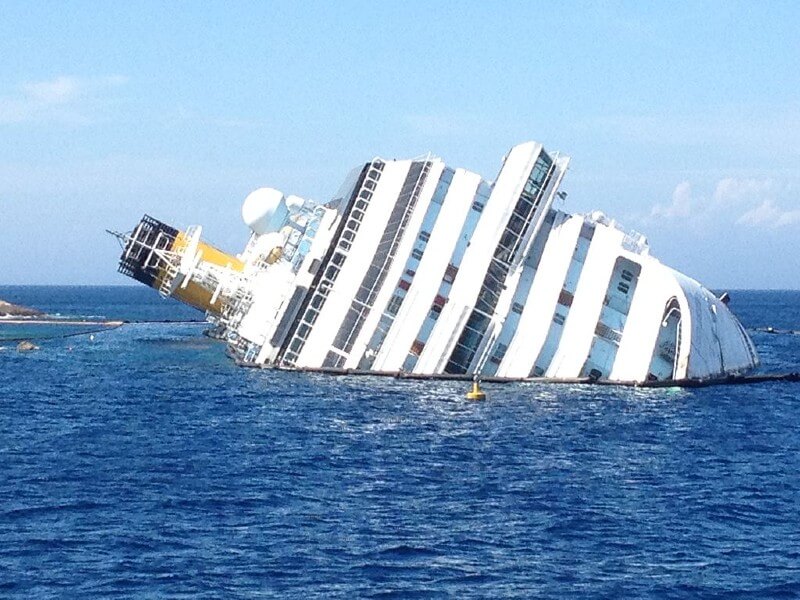
If the Titanic is the most famous cruise ship sinking in history, then Costa Concordia would take that title for modern history. The Costa Cruises ship sank after striking an underwater rock off the coast of Tuscany, sailing closer to the island than it should have done.
There were 4,252 people on board the ship including over 3,200 passengers. Most were rescued but 34 people did lose their lives including 27 passengers, 5 crew and 2 members of the salvage team.
Captain Francesco Schettino was found to be at fault and found to be guilty of manslaughter, and is now serving a 16-year prison sentence.
Suggested read: Where Is The Costa Concordia Now?
24. Eastern Star – 2015
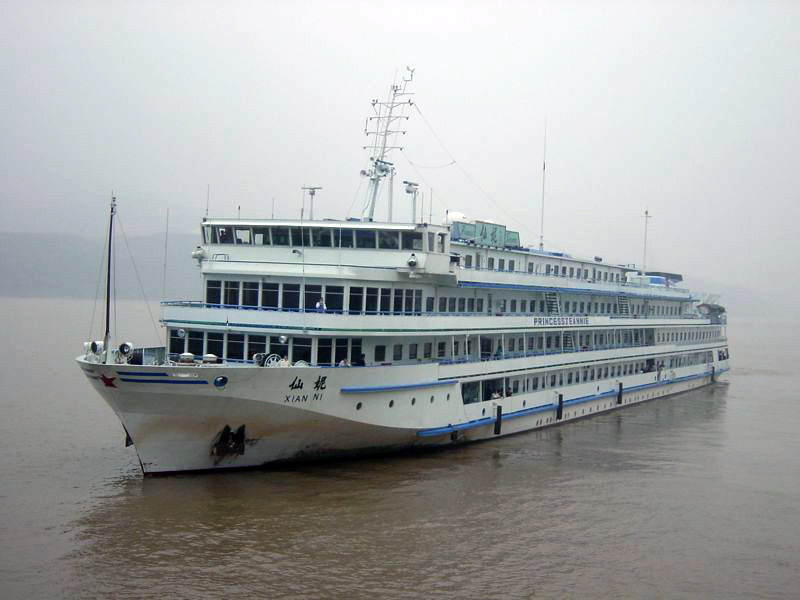
Officially named ‘Dongfang zhi Xing’, this Chinese river cruise ship would make regular sailings along the Yangtze River around the Three Gorges. In 2015, while sailing from Nanjing to Chongqing, she was caught in a storm and sank in waters just 15 metres deep.
There were 456 people on board the ship and tragically only 12 people survived – the remaining 442 bodies were all found. Most of the passengers were in their 60s or 70s and the ship capsized and sank very quickly.
Improvements have since been made to the communication of severe weather reports to river cruise ships, and the Chinese government also concluded that negligence played a part, with 43 people punished due to flaws in the management of the company.
25. Ocean Dream – 2016
Of all the ships on this list, few have had quite the history of the Ocean Dream. Originally ordered by Norwegian Cruise Line, and due to be named Seaward, the shipyard underwent financial troubles and cancelled the order. NCL complained, so the shipyard agreed to continue working, but then NCL sold the ship to P&O where she sailed as Spirit of London.
She later became Sun Princess for Princess Cruises, then for Premier Cruises as Starship Majestic, and was chartered by Disney. She later became New Flamenco for Festival Cruises, then Flamenco 1, then Ocean Dream for three more cruise lines. She sank in Thailand in 2016 after having been abandoned for a year, with no casualties.
26. Orient Queen – 2020
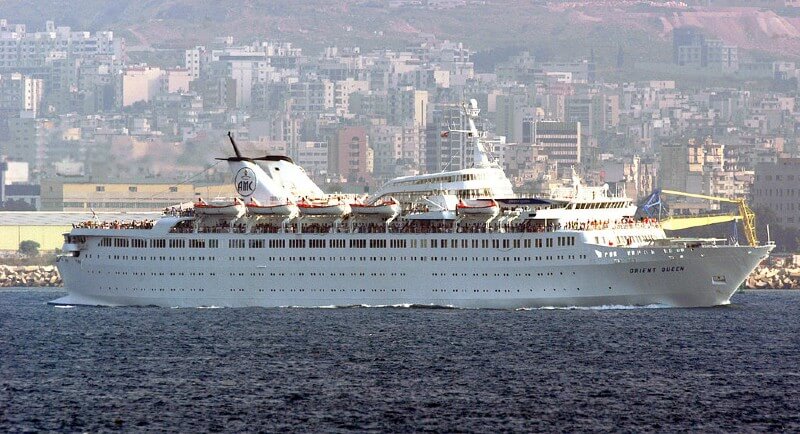
Orient Queen was a cruise ship that was owned by the Abou Merhi Group in Lebanon. Sailing from Beirut it offered cruises to the eastern Med, including ports in Turkey and Greece.
While berthed in port and without any passengers on board, the ship sank in 2020 after a massive ammonium nitrate explosion at the port. There were two crew on the ship that were killed as a result of the ship sinking. There were many other ships also in port at the time that suffered damage, although Orient Queen was the only cruise ship to sink.
The odds of a cruise ship sinking are extremely low. Only 11 ocean cruise ships have sunk while on a cruise in the last 50 years. Assuming an average of 100 sailings per ship per year, and an average of 150 cruise ships in that time, that is odds of 1 in 68,000.
That’s not exact, obviously – more ships have been built more recently and there are over 300 cruise ships currently sailing, so an average of 150 for the last 50 years is probably accurate. And some ships sail longer itineraries and some sail regular 3-4 day cruises. But that’s a rough guide to your odds.
And that’s just of the cruise ship sinking. The chances of dying in a cruise ship sinking incident are even lower since most people are saved – around 1 in 5 million.
To demonstrate how safe cruising is – the odds of dying from a lightning strike are somewhere between 1 in 84,000 and 1 in 130,000 depending on which stat you believe. There’s apparently a 1 in 2 million chance of dying falling off a chair, and a 1 in 2.3 million chance of being killed by a falling ladder – and not when you’re on it.
How verified these stats are is questionable but the point is that cruise ships are an extremely safe way of travelling. Sinkings are rare, and fatalities even rarer.
There are so many reasons why cruise ships don’t sink. Their basic design means that they are engineered to keep them upright, with ballast tanks preventing the ship from tipping over.
Add in state-of-the-art navigation systems and safety mechanisms, the expert crew that are trained in every potential outcome, and of course the threat of insurance companies ensuring that ships are all maintained to the highest standards, and you’ve nothing to fear.
You can read more about this here: Why Cruise Ships Don’t Tip Over .
The only ocean cruise ship to sink with passengers on-board within the last 15 years was human error, and they’ve been found guilty at a criminal trial. Cruise ship captains were already vetted for their safety standards but now even more so – it’s unthinkable that anything like that could happen again.
If you were reading this guide because you were interested in cruise ship history, hopefully, I’ve been able to shed some light.
More importantly, if you’re someone worried about being on a cruise ship then I hope you now feel reassured that you don’t have to be. The stats show that sinkings are exceptionally rare, and even when they do happen there are plenty of safety procedures in place.
So, now nothing’s stopping you from enjoying an amazing cruise holiday.
Related Posts:
- What Happens If A Cruise Ship Is Hit By A Rogue Wave?
- Do Cruise Ships Have Morgues?
- Why Cruise Ships Blow Their Horns
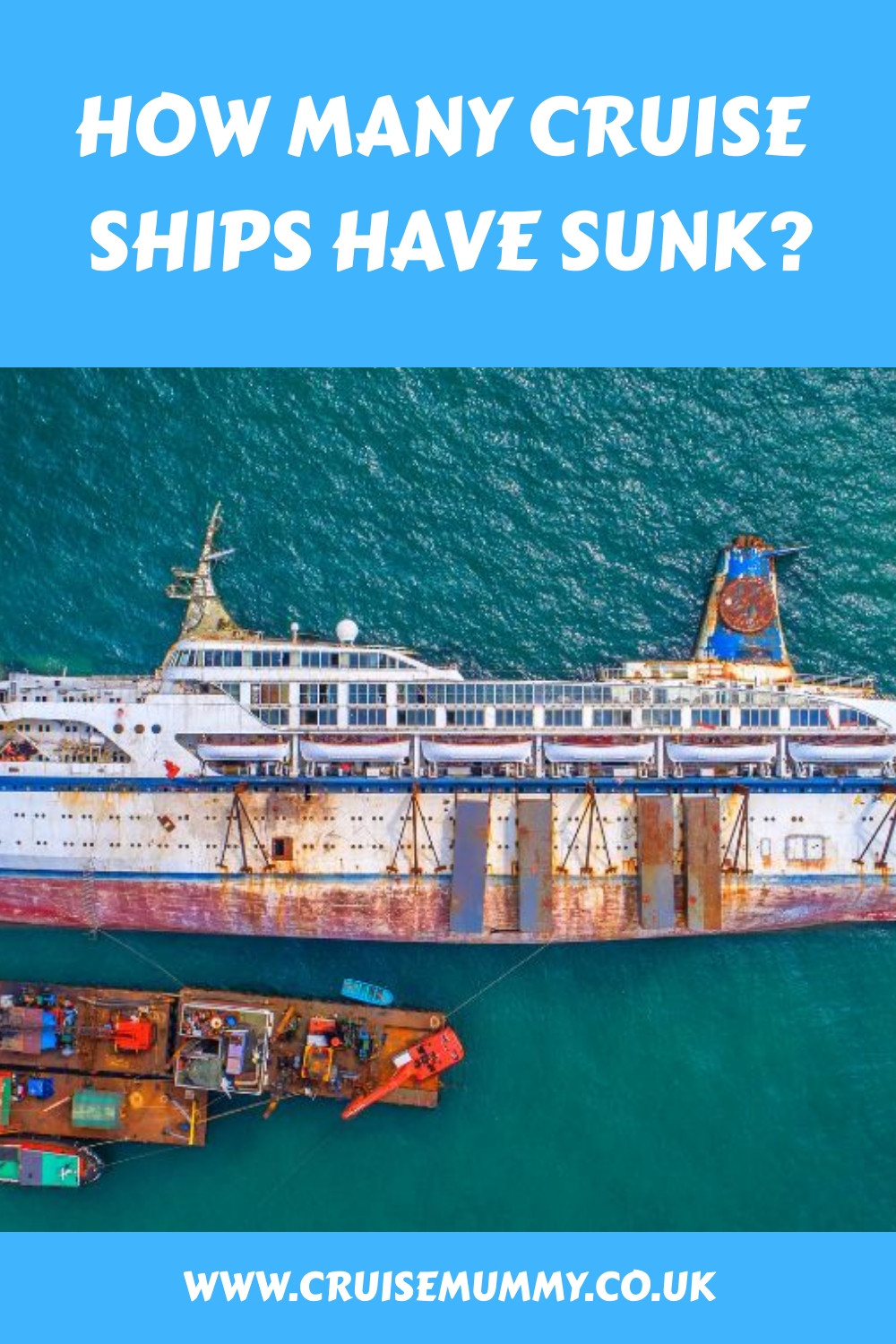
If you found this interesting, please share!
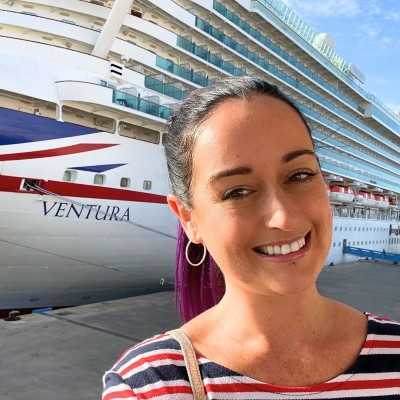
Jenni Fielding is the founder of Cruise Mummy. She has worked in the cruise industry since 2015 and has taken over 30 cruises. Now, she helps over 1 million people per month to plan their perfect cruise holidays.
Read more about me
15 thoughts on “How Many Cruise Ships Have Sunk?”
I will NEVER go on a cruse ship or any ship. Not for me. No thanks!
A couple of omissions Jenni
MV Wilhelm Gustloff 30 January 1945, the 9,400 people died. the biggest maritime disaster in History.
SS Eastland on the Chicago River in Chicago on July 24, 1915. – 844 lives.
Thanks for this. I’m keeping the list to just cruise ships, otherwise it will become very long if I were to include all other types of vessels too. Thanks for your understanding. Jenni
You actually missed quite a few ocean liners/cruise ships that have gone down from what appears to be c.1912-present. The Lusitania, Mikhail Lermontov, Empress of Britain, and the Achille Lauro for example. While it is true that passenger vessels do not routinely sink anymore, you’re downplaying the number of ships that have made their way to the bottom. Oh, and the Doña Paz.
Thank you so much for your help in identifying those that I missed. I have added them in. Jenni
Hi! MY husband and I are taking our first cruise in October 2023. After seeing all the storms at sea videos , I am indeed very much comforted by this info! TY! I was thinking to cancel the cruise. I am not now! ♥
Hi Jenny. I’m so glad to have been able to put your mind at rest. I hope you enjoy your cruise. Jenni
I poster in wrong place. You forgot the Oceanos in 1991. No lives lost but the crew abandoned ship and the passengers while the ship sank.
Ah yes, you’re right I missed one! Thanks for your help, I’ll add that in. Jenni
There’s also the Sea Diamond, sunk during a cruise in 2007, with 2 lives lost.
The Oceanus? Not a comforting thought that the crew abandoned ship and passengers while the ship sank
If I remember correctly the crew or Captain were Greek, and it was the British entertainment team who got the passengers off while the captain and officers scarpered in a lifeboat, whether they were ever held accountable I don’t know
You have missed out the Jupiter cruise ship, 21st October 1988, leaving Piraeus harbour in Greece. There was loss of life, 2 crew members, a teacher and a pupil. I was on it!
Just because we were school children, doesn’t mean we should be forgotten about.
Hi Julia, thank you for bringing that to my attention. I didn’t find information on this when I researched the post in the first place, so I apologise that it wasn’t included originally. I’ve added it now. It certainly wasn’t my intention to make you feel forgotten.
This is great, but I feel like you should have specified that the Titanic and Brittanic were Ocean liners, not cruise ships.
Leave a comment Cancel reply
Save my name, email, and website in this browser for the next time I comment.

- Privacy Policy
A Comprehensive List of Sunk Cruise Ships and Their Maritime Tales

Introduction
Imagine setting sail on a luxurious cruise ship, ready to embark on a once-in-a-lifetime adventure. The salty sea breeze in your hair, the sun glistening on the horizon, and the promise of adventure on the high seas.
For many of us, a cruise vacation represents the epitome of leisure and luxury. However, lurking beneath the surface of this perfect image is a fascinating and, at times, unsettling history of cruise ships that have met an unfortunate fate.
Don’t worry, it’s an extremely unusual incident, and even if it does occur, this era’s safety systems ensure that most, if not all, passengers and crew are entirely safe.
While cruising is considered one of the safest modes of travel, the chronicles of maritime history are sprinkled with stories of shipwrecks, lost treasures, and unsolved enigmas.
Has a cruise ship ever gone down?
You would love to know that thankfully, very few cruise ships have actually sunk in modern history. Today’s cruise ships are designed to endure severe weather.
Furthermore, cruise lines actively monitor the weather in order to avoid storms wherever feasible. Having said that, you’ve probably wondered how many cruise ships have sunk at some point.
If river cruise ships and ocean liners are included, around 20 or more cruise ships have sunk over our recent 100 years of history.
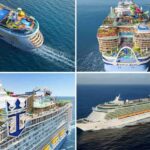
Arranging Royal Caribbean Ships: From Newest to Oldest
Carnival cruise director’s schedule for 2024-2025, carnival cruise ships ranked by size along with visual comparison chart.
We will be looking at some of the incidences and to your surprise, almost over 2,000 people have died in these occurrences, with ships sinking before 1940 accounting for more than half of the deaths. Many of the occurrences resulted in no deaths.
Let’s check out the list of sunken masters of the waters.
1. April 1912, Titanic
The Titanic’s sinking became a headline not for its cinematic adaptation but stands out as one of the deadliest as it accounted for over 1500 deaths.
On her maiden voyage across the Atlantic, she collided with an iceberg that resulted in a tragic incident. The deadliest maritime tragedy was caused by to insufficient number of lifeboats for the passengers.
In addition, there was a limited chance of survival for those without lifeboats in the waters where the ship went down. This haunting story taught a lesson emphasizing the value of safety precautions when sailing.
2. May 1914, Empress of Ireland
Two years after the Titanic’s tragic sinking, a similar incident happened in May 1914. The ship called Empress of Ireland with 1500 passengers, collided with the Norwegian ship Storstad. Despite sighting each other, dense fog made it worse for them.
1,012 passengers and crew members died in this horrific tragedy, and the Empress of Ireland was sadly only four journeys away from making its 1,000 successful voyages.
The story of this ill-fated liner serves as a reminder of the dangers and uncertainties that travelers and sailors can encounter on the high seas.
3. May 1915, Lusitania
The Lusitania, a cruise ship launched by Cunard Line in 1906, once held the prestigious title of the world’s largest passenger ship. However, its fate took a tragic turn during World War I.
For nine successful years, the Lusitania completed 201 transatlantic journeys. Yet, on its 202nd voyage from New York to Liverpool, disaster struck when a German U-boat torpedoed the ship off the southern coast of Ireland.
The ferocity of the explosion and the rapid tilting of the ship allowed for only six lifeboats to be launched. As a result, 1,198 passengers and crew members lost their lives, while 764 fortunate individuals managed to survive.
The sinking of the Lusitania remains a black chapter in maritime history, a poignant reminder of the perils faced during wartime travel on the high seas.
4. November 1916, Britannic
Originally intended to be a passenger ship, the Britannic, one of the Olympic Class ocean liners operated by White Star Line, was converted into a hospital ship during World War I.
A German naval mine in the Kea Channel caused tragedy in November 1916, as the ship sank in under 55 minutes. About thirty people were casualties, although most passengers got out alive.
5. October 1927, Principessa Mafalda
Built in 1909 and named for Princess Mafalda of Savoy, the Italian cruise ship Principessa Mafalda suffered tragedy in 1927.
The ship sustained structural damage when it sank while traveling between Argentina and Italy as a result of a major propeller shaft failure. Sadly, 314 of the 1,252 passengers and crew members who were involved in the tragedy died.
6. June 1931, Saint-Philibert
In 1931, tragedy struck when a tiny cruise ship collapsed and drowned off the coast of France, killing nearly 500 people and leaving only eight survivors. The ship ran summertime cruises along the French coast before the catastrophe.
The accident was caused by a number of things, including overloading the aircraft with twice as many people on board as was planned and extremely inclement weather.
7. May 1932, Georges Philippar
A modern French ocean liner tragically sank on its inaugural voyage because of an electrical problem. Faulty high-voltage wiring and a broken light switch caused a fire that killed 54 people.
To avoid delays in construction, quality concerns about the vessel were ignored. Improved onboard electrical safety measures were put in place after the event, including installing more dependable circuit breakers and switching to a different current type.
8. 1934 , SS Morro Castle
The SS Morro Castle was launched in 1930 and was designed especially to make regular sailings between the US and Cuba.
However, due to a tragic incident in 1934, the ship sank due to a fire caused by the electrical cables and hydraulic lines used for steering the ship.
In this accident,137 people lost their lives and the crew was blamed who handling the emergency badly.
9. October 1940, Empress of Britain
Two phases of the great ocean liner Empress of Britain’s death occurred during World War II. After being attacked from above on October 26, German U-boats sunk it on October 28.
Thankfully, 416 crew members, 2 gunners, and 205 passengers—the majority of the passengers and personnel—all safely escaped the vessel. Still, 45 people lost their lives in the catastrophe.
10. July 1956, Andrea Doria
Even though it was tragic, the Andrea Doria accident brought to light important improvements in ship safety since the Titanic accident. It listed on one side after hitting Stockholm, making it more difficult to approach the lifeboat.
But as the ship sank gradually, the crew was able to use their improved communication and rescue skills to save 1,660 passengers and crew members. The next day’s sinking was not the cause of the casualties; rather, it was the collision.
11. October 1961, Bianca C
Because the Bianca C sank twice, it has a special place in nautical history. During World War II, German soldiers destroyed the passenger ferry that it was originally intended for.
Following its salvage, Costa Line—the forerunner of Costa Cruises—refurbished it and gave it the new name Bianca C.
But calamity struck again in 1961, this time due to an explosion in the engine room that caused it to sink again. Thankfully, everyone on board survived the incident save for one crew member.
12. 1979 September, Angelina Lauro
With a storied past, the Angelina Lauro began service as a passenger ferry in 1939 and later became a hospital ship during World War II. It was reborn as a cruise ship in 1972.
But tragedy struck in 1979 when it caught fire in Saint Thomas port, while Costa Lines was in charge. Days passed with no casualties, but the ship was declared irreparable. Then, on the way to a scrapyard, it capsized fatally.
13. February 1986, MS Mikhail Lermentov
In 1982, the large ship MS Mikhail Lermentov, which was owned by the Soviet Union’s Baltic Shipping Company, became a cruise liner.
Tragic events occurred in 1986 while on a two-week exploration cruise from Sydney to Cape Jackson, which is close to Wellington.
Not about twenty minutes after the last passenger was saved, the ship completely sank, despite the quick response that saw the majority of the 372 passengers and 348 crew members evacuate into lifeboats. Pavel Zagladimov was sadly the only crew member to die in the tragedy.
14. August 1986, SS Admiral Nakhimov
The ship’s incredible history includes three separate sinkings! It was submerged and eventually came into the possession of the Soviet Union after being used by the Nazis as a hospital ship during the war.
The ship sank again in spite of attempts to raise it, only to rise again. 423 of the 1,234 people on board perished in the collision with a freighter that occurred in 1986 while it was conducting cruises in the Black Sea.
15. August 1991, MTS Oceanos
Three years after the MV Jupiter catastrophe, which claimed four lives, the Greek ship MTS Oceanos met her awful end in 1991.
The ship sank as a result of excessive water entering the vessel from suddenly big waves breaking a badly fitted pipe. Thankfully, all 581 passengers and the crew made it out alive.
The entertainers warned and helped guests to safety, however, the captain and a few other crew members were judged to be at fault for leaving the ship.
16. December 1994, Achille Lauro
Before joining MSC Cruises, the MS Achille Lauro was originally ordered by a Dutch business. The trip was turbulent and filled with catastrophes like fire, explosions, and hijacking.
Tragically, it caught fire and sank off the coast of Somalia on December 2, 1994. Two people lost their lives during the evacuation, which involved 979 passengers and crew members.
17. May 1999, Sun Vista
Before changing her name to Sun Vista in 1997, the ship was operated by Celebrity Cruises for seven years under the name SS Galileo Galilei.
Two years later, tragically, an engine room fire caused it to sink, leaving all power disconnected.
Thankfully, all 1,090 passengers and crew members disembarked safely and without incident thanks to contemporary safety requirements.
18. October 2000, Britanis
In 2000, the British transferred ownership of the vessel from Chandris Lines to AG Belofin Investments with the goal of dismantling it in India.
But as it traveled, it started to listen and absorb water. The only option was to let it capsize and sink off the coast of Cape Town since there was no personnel on board to deal with the problem.

19. 2000 , SeaBreeze
The SeaBreeze was launched in 1958 and is owned by Costa Cruises primarily. Later the ownership was transferred to Premier Cruises in 1983.
In the year 2000, the ship sank due to the breaking off boiler that caused sufficient damage to sink the ship.
As per reports, it is believed that it was an intentional incident to claim for insurance money and had received $20 million as compensation. When the ship sank, only 34 crew members were on board and all were rescued.
20. April 2007, MS Sea Diamond
After twenty years of service, the MS Sea Diamond—originally ordered by Birka Line as the Birka Princess—was transferred to Louis Hellenic Cruise Lines. But catastrophe struck in 2007 when it became stuck on the rocks of Santorini.
Even though it was later found that incomplete charts had contributed to the tragedy, the captain still had to deal with the fallout.
Although more than 1,000 passengers and crew members were amazingly saved, the loss of two French passengers—who are believed to be dead—remains a sobering reminder of the human cost of the ordeal.
21. 2007 , MV Explorer
The MV Explorer was a small cruise ship launched in 1969 and had many owners till her last date. in her life, launching first in 1969.
She became the first cruise ship specifically that went across Antarctic Ocean. Unfortunately it also became the first ship to sink there too.
In 2007, it collided with an iceberg and 91 passengers, 54 crew and 9 expert guides had to take lifeboats to save their lives. After five hours of the nightmare everyone was rescued by the MS Nordnorge.
22. January 2012, Costa Concordia
Frequently compared to its historical forerunner, the Titanic, the Costa Concordia represents a contemporary symbol of maritime catastrophe.
After the ship sank because it sailed too close to Tuscany, 34 people died—passengers, crew, and members of the salvage team—out of the 4,252 people that were on board, the majority of them were more than 3,200 passengers.
The captain, Francesco Schettino, was found guilty and sentenced to sixteen years in prison for the fatal incident.
23. June 2015, Eastern Star
A Chinese river cruise ship called “Dongfang Zhi Xing” operated on its usual course down the Yangtze River until an unfortunate incident occurred in 2015.
It was destroyed by a strong storm while traveling from Nanjing to Chongqing, foundering in shallow water that was just 15 meters deep.
Only 12 of the 456 people on board made it through the ordeal; the remaining 442 passengers and crew perished. The passengers, who were mostly old, faced immediate disaster when the ship quickly capsized.
Better severe weather communication procedures were consequently put in place for river excursions, and the Chinese government found that 43 people were held accountable for management carelessness.
24. February 2016, Ocean Dream
There is nothing like the history of the Ocean Dream. Norwegian Cruise Line had originally ordered the Seaward, but due to building issues, the purchase was canceled.
The ship was later purchased by P&O, who renamed it the Spirit of London. It sailed the world under different names and ownerships.
It finally met its demise in 2016, drowning in Thailand following a year of abandonment. Fortunately, no one was hurt in the incident.
25. August 2020, Orient Queen
The Abou Merhi Group in Lebanon owned the Orient Queen, which sailed from Beirut to explore the enchanted eastern Mediterranean, including stops in Turkey and Greece.
Sadly, in 2020, the ship sank while parked in port due to a massive explosion caused by ammonium nitrate that rocked the port.
Sadly, the event claimed the lives of two crew members. Orient Queen was the only cruise liner to sink, however, several other vessels in the port suffered damage.
Set out on an elegant cruise journey, where you are set for amazing adventures as the sun shines down on the horizon and the ocean breeze tousles your hair.
Although cruising is associated with the epitome of luxury and leisure, it has an intriguing and often unsettling past.
Modern safety precautions guarantee the safety of both passengers and crew, even in the rare event of an accident.
Maritime mythology abounds with stories of shipwrecks, missing wealth, and mysteries, even though cruises are still one of the safest modes of transportation.
For those of you who may have been scared about setting foot on a cruise ship, take heart. The numbers reveal that ship sinkings are exceedingly uncommon, and robust safety measures stand as stalwart protectors.
With these reassurances, you’re now free to embark on a splendid cruise holiday without a worry in sight.
FAQ’s
1. what is the probability of a cruise ship to sink.
Ans – The probability of a sinking ship is very low. In the last 50 years, 11 cruise ships sank while on a voyage. It is neither easy nor accurate to predict this condition.
2. What is the reason behind cruise ship not sinking?
Ans – The way these ships are built they are meant to remain upright and the inbuilt ballast tanks protects the ship from sinking.
The advanced navigation systems and safety mechanisms, along with expert and trained crew has made the journey on cruise safe and fear free.
Get Cruise-Smart! Join our Crew for Tips, Tricks, and Sea-sational Tales. Subscribe Now!
Email address
Trending Topics
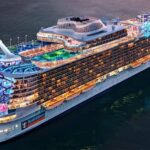
Royal Caribbean Ships from best to worst
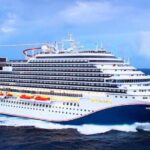
Carnival Cruise Director’s Schedule for 2024-2025
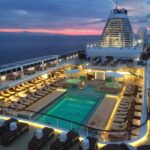
How Expensive Is Cruise Travel?

The Meaning Behind Pink Flamingos

Sign in to your account
Username or Email Address
Remember Me

Tragic List: Discover How Many Cruise Ships Have Sunk Throughout History
How Many Cruise Ships Have Sunk: Millions of people choose cruise ships for their vacations every year because they provide opulent amenities, thrilling activities, and the chance to see several places in one journey. But sometimes people doubt these enormous floating hotels’ safety, especially when you consider that they might sink.
There have been very few cruise ships that have sunk in the past century. Because of the safety procedures followed by the cruise liner industry, most or all of the passengers and crew survive when a cruise ship sinks.
How Many Cruise Ships Have Sunk
Only twenty-four cruise ships—both river and ocean liners—have sunk since 1912. It’s important to remember that some cruise ship capsizings happen while the ship was being towed or berthed.
Because cruise ships are built sturdy and have current safety mechanisms, we can explain why there aren’t many cruise ship sinkings.
Today’s cruise ships are extremely resistant to sinking because of their emphasis on safety throughout construction. Modern cruise ships are outfitted with a plethora of safety precautions to preserve as many lives as possible in the event of an unfortunate disaster.
Consequently, the death toll from these kinds of incidents is usually rather low.
Sadly, several people lost their lives in some of the first sinkings.
Since 1912, a cruise ship has sunk an average of once every 4.5 years, underscoring how uncommon these incidents are. However, as safety and technology advance and we continue to learn from past tragedies, the number of cruise ship disasters is declining.
While cruise ship sinkings are uncommon, there have been a few famous cases, like the Titanic and the Costa Concordia catastrophe. However, despite these high-profile incidents, the cruise industry does have a remarkable overall safety record.
What percentage of cruise ships sink?
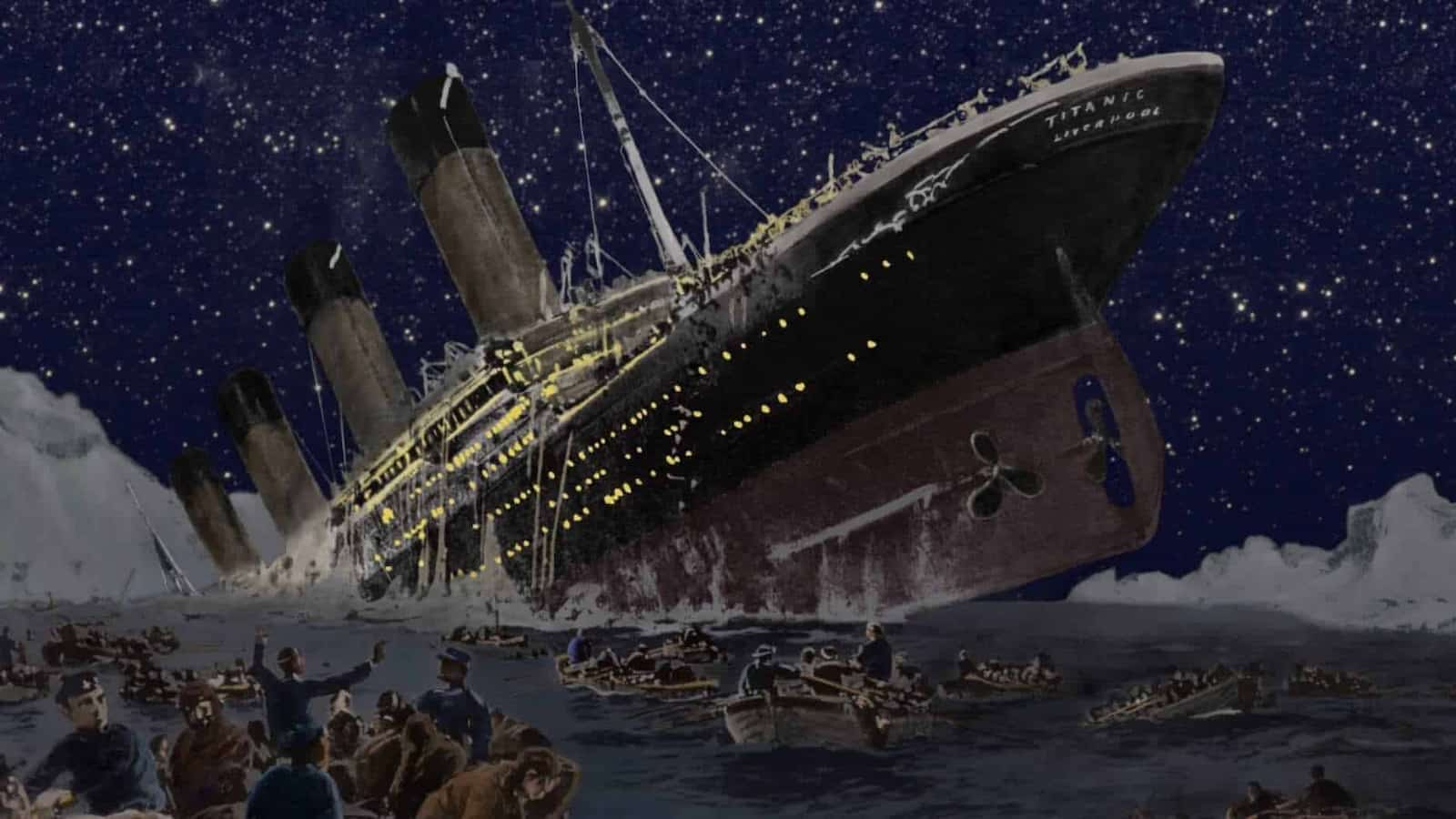
It’s critical to realize that cruise ship sinkings are quite uncommon. There have only been 22 cruise ship sinkings in the last 100 years.
Still, a number of shipwrecks happened while docked or being towed. Given the quantity of cruise ships that are in operation all year round, cruise ship sinkings are quite unusual.
Many safety precautions included into contemporary cruise ships reduce the possibility of a sinking. Strict rules and inspections also contribute to the high standard of safety that is maintained on these boats. Cruise ship sinkings are uncommon, which is partly due to these efforts and technological developments.
Cruise ship worker salary: How much do they make?
In contrast to this total, cruise ships in particular have an even lower frequency of sinking. Although it is difficult to pinpoint the exact number of cruise ship sinkings in the recent past, it is widely accepted that these incidents are uncommon and do not pose a serious threat to passengers.
In conclusion, the rarity of cruise ship sinkings can be attributed to stringent safety rules and contemporary technology. Travelers may relax knowing that their cruise ship experiences will be stable and safe.
Do Cruise Ships Sink Frequently?
Because of stringent restrictions and advanced safety systems, cruise ships seldom sink. In the last century, there have only been 20 cruise ship sinkings.
It is noteworthy that not all of these sinkings contained passengers or caused a sizable number of casualties.
The frequency of cruise ship sinkings has decreased due to advances in navigation technology.
Are Cruise Ships Capable of Sinking?
Cruise ships do occasionally sink, but this is extremely uncommon.
Contemporary cruise ships come with cutting-edge safety technologies that reduce the chance of capsizing. In addition, watertight compartments and improved hull construction keep a ship from absorbing too much water. Cruise ship crew members are also regularly trained in safety exercises and emergency procedures.
Despite these safety precautions, 24 cruise ships and ocean liners have sunk since the RMS Titanic disaster in 1912.
In spite of the disconcerting prospect of a cruise ship sinking, safety remains the cruise industry’s top priority. Compared to other means of transportation, passengers may travel with peace of mind on one of the safest modes.
When Did a Cruise Ship Most Recently Sink?
The last time a cruise ship capsized while carrying people on board was the Costa Concordia, which grounded in Italy in 2012. Thirty-four people perished when the Italian cruise liner struck rocks and subsequently capsized. The accusations made against the ship’s crew, especially Captain Francesco Schettino, who is currently serving a 16-year manslaughter term, made the incident noteworthy as well.
To provide the highest level of security for its patrons, the cruise industry has enacted a number of safety rules and procedures in recent years. These modifications have greatly decreased the quantity of mishaps and sinkings, which has helped to explain why we don’t hear about them as frequently.
Why Do Ships Stay Afloat?

Even while cruise ships, in particular, might be extraordinarily large buildings, their purpose is to float on water with ease. It is because of the buoyancy principle that cruise ships may float. Any object submerged in a fluid (such as water) experiences an upward force equal to the weight of the fluid the object has displaced. This is known as Archimedes’ principle, or the physical law of buoyancy.
The hull form of a ship is a major component that affects its buoyancy. Because of their wide, flat bottoms, ships are able to move a lot of water. This displacement produces an upward force that balances the ship’s weight.
If the density of the cruise ship is lower than that of the water, it will still float.
Steel and aluminum are two examples of strong, lightweight materials used in ships that offer structural support while maintaining a low overall density. In addition, the hull is separated into waterproof sections so that, in the event of damage, water does not flood the entire ship. This design keeps cruise ships from toppling over and aids in maintaining the ship’s buoyancy.
Preventing a ship from capsizing also depends on its stability. A low center of gravity is a feature of ship design. Heavy parts of the ship, including engines and fuel tanks, are located in the lowermost part of the structure to provide a low center of gravity. Even in choppy waters, the ship will stay upright and steady thanks to the design philosophy.
Best Cruises for Adults: 4 Perfect Cruise Lines for Adult Only experience
Overview of How Many Cruise Ships Have Sunk Throughout History
1912’s rms titanic.
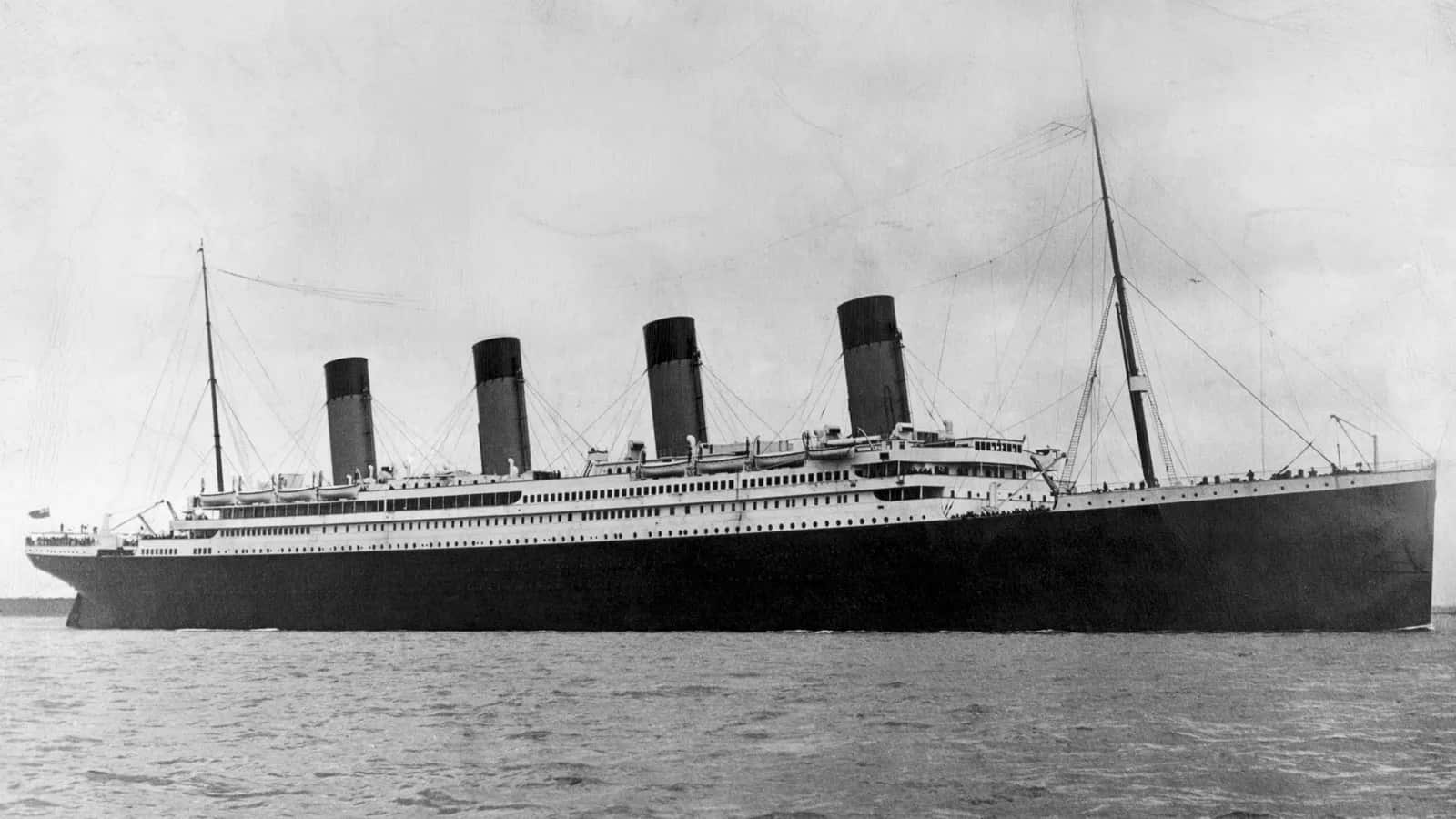
On April 15, 1912, the British passenger ship RMS Titanic sank in the North Atlantic Ocean. When the ship struck an iceberg on its first trip from Southampton, UK, to New York City, it sank. Out of the estimated 2,224 passengers and crew, 1,517 are thought to have perished in the accident.
The Titanic was regarded as an engineering wonder when it was built and was the largest ship ever to sail. With more than 2,200 passengers and crew members on board, she sailed for her maiden transatlantic voyage. Despite multiple alerts of icebergs up ahead on April 14, the Titanic proceeded to travel at a speed of 22 knots.
Lookouts noticed an iceberg on the ship’s course just before midnight. The Titanic suffered damage below the waterline when she met the iceberg on her starboard side due to her inability to turn quickly enough.
It was obvious the ship would sink when water began to fill it. There was a significant death toll from the Titanic accident because there were not enough lifeboats and the water was quite cold. Laws about maritime safety have significantly improved as a result of the disaster.
Empress of Ireland in 1914
Early on May 29, 1914, in the thick fog, the ocean liner RMS Empress of Ireland collided with another ship and sank in Canada’s St. Lawrence River.
There were 1,477 passengers and staff members on board the Empress as it traveled from Quebec City to Liverpool. The Norwegian collier Storstad struck the Empress, causing significant damage and rapid submersion. Despite hasty attempts to evacuate passengers, the ship sank in about fourteen minutes. The accident claimed 1,012 lives from those on board, making it the deadliest marine accident to occur in Canadian history during a peacetime.
1915’s RMS Lusitania
On May 7, 1915, during World War I, a German U-boat torpedo sank the British ocean liner RMS Lusitania, killing 1,198 people—passengers and crew. The Cunard Line-owned Lusitania was torpedoed off the coast of Ireland when it was making her 202 transatlantic voyage from New York to Liverpool.
A second explosion burst from the ship’s hull shortly after the torpedo hit. Due to the significant damage and degree of listing, only six lifeboats were able to descend from the starboard side of the ship.
The ship sank around eighteen minutes after the torpedo hit. Seventy-six out of the 1,962 passengers and crew on board the Lusitania made it out alive.
The RMS Lusitania was allegedly carrying 173 tons of weapons and ammunition, according to the German authorities. Apart from the small arms ammunition listed on the ship’s military cargo, the British government disputes that the ocean liner carried any war weaponry.
1916’s HMHS Britannic
HMHS Britannic was the third and largest Olympic-class ocean liner that White Star Line operated. Constructed as a transatlantic passenger liner, the ship was launched shortly before the outbreak of World War I.
Before Britannic could be used for passenger travel following the start of the war, the British Admiralty seized her and renamed her Britannic as a hospital ship. The Britannic ran into a naval mine that a German U-boat had planted while it was in the Aegean Sea in November 1916.
In approximately 55 minutes, the explosion destroyed much of the ship and caused serious damage. Despite the sinking’s rapid pace, the prompt evacuation saved 1,030 lives. 30 persons sadly lost their lives in the sinking.
1927’s Principessa Mafalda
Off the coast of Brazil in 1927, the Italian transatlantic liner SS Principessa Mafalda sank. The ship departed on her 14-day voyage after a technical delay.
The ship made multiple stops in the ocean during the voyage, indicating that it was not in good shape. The breakage of the starboard propeller shaft on October 25 resulted in numerous hull gashes.
The ship started to absorb water, and the watertight doors could not be closed all the way. It took the ship more than four hours to sink completely. However, miscommunication resulted in 314 fatalities.
1932-Georges Philippar
In 1932, the French passenger liner Georges Philippar caught fire and sank in the Gulf of Aden, killing fifty-four people. On May 16, during her inaugural journey off the coast of Italian Somaliland, Mme Valentin’s opulent cabin’s wood paneling caught fire due to a malfunctioning light switch.
The fire was allowed to spread quickly since there was a delay in reporting it. Captain Vicq tried to put out the fire and beach the ship, but things worsened.
The engine rooms were evacuated, leaving the Georges Philippar adrift. The captain issued a distress call and told the crew and passengers to get off the ship. The French ship Andre Lebon, the two British cargo ships Mahsud and Contractor, and the Soviet tanker Sovietskaïa Neft were the three neighboring vessels that came to the rescue.
Rescuers were able to save 698 people. 54 people died, nevertheless, some of them from desperate jumps overboard.
1934’s SS Morro Castle
On September 7, 1934, at around three in the morning, a fire broke out on board the opulent ocean liner SS Morro Castle, which was traveling from Havana to New York City. Strong winds contributed to the fire’s rapid out-of-control spread.
Chaos broke out as terrified passengers had to decide whether to leap into the sea or stay on the blazing ship, even as efforts were made to put out the fire and launch lifeboats. The ruined Morro Castle ran aground close to Asbury Park, New Jersey, after only six hours.
Only 312 of the 549 occupants, including the crew, made it out alive.
Following investigations, it became clear that a lack of training and preparation for fire safety contributed to the shockingly high death toll. The burned-out wreck, which served as a somber reminder of the horror everyone on board had to endure, remained on the beach until 1935.
The fatal incident made it clear that ocean liners need to strengthen their fireproofing, safety exercises, and crew training.
Empress of Britain – 1940
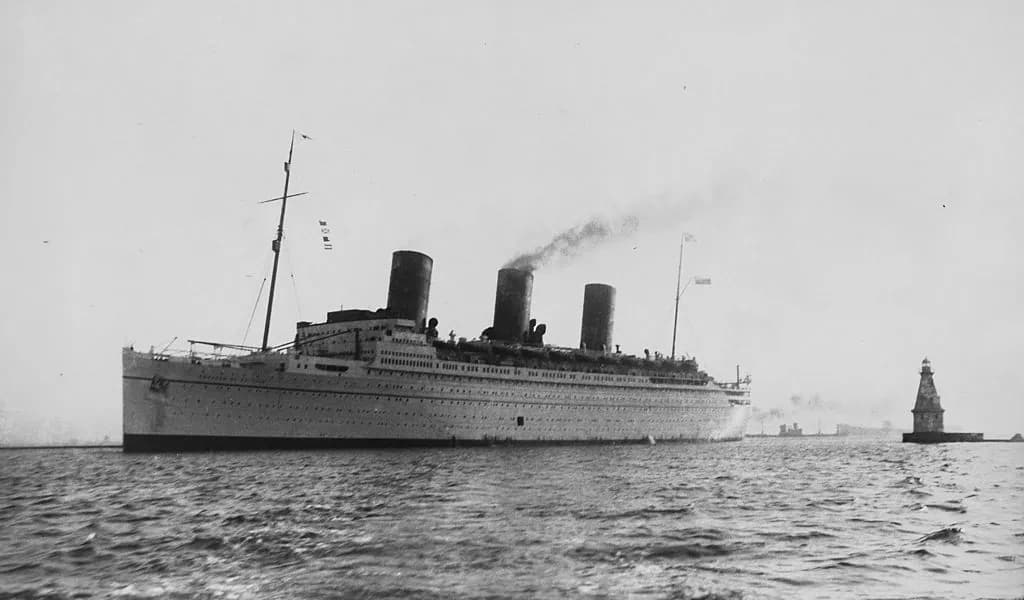
The Canadian Pacific Steamship Company, which the Canadian Pacific Railway and the RMS Empress of Britain owned, transported people and soldiers across the Atlantic during World War II.
The German submarine U-32 fired two torpedoes at the Empress of Britain early on October 26, 1940, as it was cruising roughly 450 miles west of Ireland. The damage was too great, leading the ship to list badly in spite of efforts to prevent flooding.
Lifeboats were hastily lowered into the darkness after the order to evacuate the ship, with some capsizing in the confusion as flares lit up the sky. British navy ships saved 1,259 people from the sinking liner, but 45 unfortunate people perished in the early explosions or drowned.
The graceful British Empress had disappeared under the seas by sunrise, exposing civilian ships to Germany’s merciless submarine warfare techniques.
Andrea Doria – 1956
In July 1956, the Italian ocean liner SS Andrea Doria carried more than 1,700 passengers and crew members on a normal trip from Italy to New York. In extremely foggy conditions, the Andrea Doria and the Swedish ship Stockholm collided on July 25, off the coast of Nantucket, Massachusetts.
Below the waterline, the Stockholm’s bow caused catastrophic damage by severing passenger compartments and stabbing into Andrea Doria’s side. Ten hours later, in excess of 200 feet of water, the mortally damaged Andrea Doria sank in spite of attempts to contain flooding.
Thankfully, 1,660 individuals made it out of the lifeboats. Nevertheless, 46 people died as a result of impact injuries and drowned during the intense crash.
How Cruise Ships Are Built: A 2-Year Process
1961’s Bianca C
The ship Bianca C is special since it sank twice. The first sinking occurred during World War II when a German-operated passenger ferry was sunk.
Before it sank in 1961, the ship’s hull was lifted and converted into a cruise liner.
With more than 600 passengers and crew, the Italian cruise liner Bianca C sailed from Grenada to Italy overnight on September 22, 1961. An explosion in the engine room at midnight caused a fire that swiftly spread throughout the ship.
The captain gave the order for the staff and passengers to leave the burning ship as smoke filled the halls. As other ships raced to help, liferafts and lifeboats were lowered into the murky tropical waters. While the majority of passengers safely evacuated the Bianca C, one staff member unfortunately perished in the explosion. However, the crew and all other passengers made it out safely.
1979 Angelina Lauro
In March 1979, Costa Lines acquired the aging Italian ocean liner Angelina Lauro. When the new cruise line was chartering the ship, it caught fire while berthed in Saint Thomas.
After burning for a few days, the ship was declared completely destroyed. The fire did not claim any lives.
1986’s MS Mikhail Lermentov
Around 1,000 guests and crew perished when the Soviet cruise ship Mikhail Lermentov struck rocks and sank off the coast of New Zealand on February 16, 1986. During the frantic evacuation, the chief electrical engineer sadly drowned, although no passengers were lost.
In a matter of hours, rescue ships and aircraft safely evacuated everyone else on board the sinking ship before it submerged beneath the water. A subsequent investigation found that inadequate navigation had caused the enormous ship to veer dangerously near the rocky reef in low light, rupturing a huge hole in the hull and quickly flooding the liner.
1986’s SS Admiral Nakhimov
On our list, SS Admiral Nakhimov has the most intriguing tale. The ship has sunk three times in total.
It served as a hospital ship for Germany during World War II before being lost.
The ship was turned up to the Soviet Union as payment for reparations. The Germans had hidden mines in the ship’s hull, which detonated and caused the ship to sink a second time, despite Soviet attempts to retrieve its hull.
On August 31, 1986, the SS Admiral Nakhimov sank for the third and last time. In the Black Sea, close to the Strait of Kerch, the Soviet passenger liner and the bulk freighter Pyotr Vasev collided. Admiral Nakhimov’s hull sustained a huge hole from the accident, which quickly caused the ship to flood.
When the electricity went out, the evacuation process became disorganized due to a lack of lifeboats and inadequate leadership. The Admiral Nakhimov sank after capizing in thirty minutes. Sadly, more than 423 people perished.
1988’s MV Jupiter
The British roll-on/roll-off ferry MV Jupiter and the tanker Phoenix II collided on June 21, 1975, as the two were traveling from Dover to Zeebrugge across the English Channel. The accident caused catastrophic flooding by rupturing open the car deck of the MV Jupiter.
The majority of the 585 passengers and crew were evacuated as the Jupiter began to list alarmingly. Tragically, two passengers—a teacher and a student—as well as two crew members perished.
1988 Achille Lauro
As the Italian cruise ship Achille Lauro sailed off Somalia on November 30, 1994, a destructive engine room fire broke out and swiftly got out of control. Tragically, during a nocturnal emergency evacuation, two passengers perished.
Rescue ships and aircraft were able to successfully evacuate all remaining passengers and crew from the burning liner. The ship sank following two days of fierce firefighting.
An engine room explosion was found to be the cause of the safety systems’ deactivation.
MTS Oceanos – 1991
The Greek cruise liner Oceanos sank off the coast of South Africa on August 3, 1991, as a result of severe waves that broke a ventilation pipe. It’s thought that a poor repair made the pipe susceptible to impacts.
A broken ventilation pipe was to blame for the severe flooding. The captain and a few other crew members left the ship as soon as they realized it was sinking.
Amazingly, the entertainment crew stepped up and assisted guests in getting off the sinking ship. Over the following two days, nearby vessels saved all 571 people.
Sun Vista (1999)
The Sun Vista, a cruise liner from Malaysia, capsized in the Malacca Strait on August 8, 1999, due to extreme listing caused by an engine room fire that took off power. The well-trained crew quickly boarded lifeboats with all of the passengers and crew after making a call for assistance from nearby ships.
SeaBreeze (2000)
A catastrophic mechanical failure caused the cruise ship Seabreeze I to swiftly sink on December 17, 2000, when it was sailing about 225 nautical miles off the coast of Virginia. The 21,000 GT, 9-deck passenger ship had just been purchased by Cruise Ventures III, who was traveling from Halifax to Charleston when the catastrophe occurred.
According to reports, the boiler broke away, seriously injuring the engine room of the ship and resulting in significant flooding. The captain yelled “abandon ship” as the 40-year-old Seabreeze quickly began to take on water, requesting that the 34 crew members be rescued right away.
There was a lot of suspicion surrounding the sinking since some people thought it was intentional. The old Seabreeze had a $20 million insurance policy even though its scrap value was probably about $5–6 million.
The vessel capsized in international seas. Maritime authorities questioned Panama’s thoroughness and were dismayed when the ship, which was flying the flag of another country, sank in international waters. This placed Panamanian jurisdiction over the probe.
The captain’s decision to abandon the ship rather than try to salvage it also raised suspicion.
Rescuers from the US Coast Guard thought it was extremely unusual that the ship could sink that quickly. The captain insisted on a full evacuation instead of asking for salvage tugs, which shocked the Coast Guard.
Britannis (2000)
The Britanis experienced a leak in the ship’s rear while en route to an Indian scrapyard. The boat’s owners let it sink after determining that fixing the leak would be too expensive.
The boat was being pulled by tug boats with no one on board. Additionally, no one was hurt in the incident.
2007’s MS Sea Diamond

Sea Diamond sank on April 5, 2007, after going off course and hitting coral near Santorini. When the ship lost power and listed, the crew quickly rescued nearly all 1,195 passengers.
Tragically, two passengers perished in the sinking. The damaged Sea Diamond had submerged in 500 feet of water by the afternoon.
The captain was first accused of veering dangerously near to shore during the investigation; however, it was later found that the area’s maritime charts were erroneous. The boat came aground 131 meters from shore, while the reef was shown on the map as 57 meters.
2007’s MV Explorer
The cruise ship MV Explorer struck an iceberg early on November 23, 2007, causing it to sink off the coast of Antarctica. The iceberg tore open the ship’s hull, resulting in catastrophic flooding.
The well-trained crew quickly evacuated all 154 passengers and crew members onto lifeboats as the crippled ship lost power and leaned precariously close to King George Island. A great emergency reaction saved every life in the dramatic sinking in icy Antarctic waters.
After a five-hour drift on the lift rafts, MS Nordnorge recovered all 154 survivors.
2012’s Costa Concordia
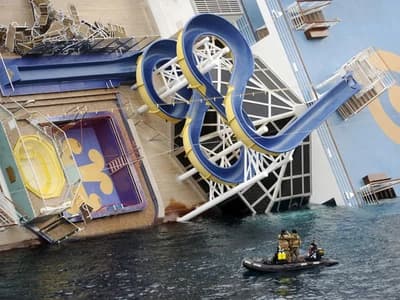
On January 13, 2012, the Costa Concordia cruise ship was wrecked off Giglio Island, Italy. Leaving Civitavecchia in Lazio, the ship, carrying 4,252 people from all over the world, struck a reef during an unofficial salute to local islanders. The Costa Concordia crashed off the Italian island of Giglio on January 13, 2012, killing around 4,252 passengers and crew. A 951-foot cruise liner veered off course and approached too closely.
The impact that ripped a 160-foot gash in the hull led to significant listing and partial sinking.
Despite the ship’s lifeboats, helicopters, and ships, 34 people died in the chaotic aftermath.
Captain Francesco Schettino caused the incident by carelessly deviating from the course. Authorities convicted him of manslaughter and he is currently serving a 16-year prison sentence.
2016’s Ocean Dream
After the owner of the cruise ship went bankrupt in 2015, the Ocean Dream was abandoned without a crew or maintenance personnel at Laem Chabang, Sri Racha, Thailand. In February 2016, the abandoned ship overturned and sank in shallow waters off the coast.
There were unsuccessful attempts to raise the sunken ship. The authorities decided to disassemble and demolish the Ocean Dream on location instead of refloating it. By the end of 2019, the disaster’s visible remnants had been disassembled and salvaged, leaving only the bottom hull of the wreck on the seafloor.
2020’s Orient Queen
The cruise ship Orient Queen suffered terrible damage 1,000 feet away from the big 2020 explosion that tore through Beirut’s dock. The strong blast wave severely damaged the Orient Queen’s hull, which also caused fires to spread, killing two crew members and injuring seven others.
The abandoned cruise ship capsized where it was parked, terminating its 40-year cruise career over the following 48 hours. It was not possible to salvage it.
Related Posts
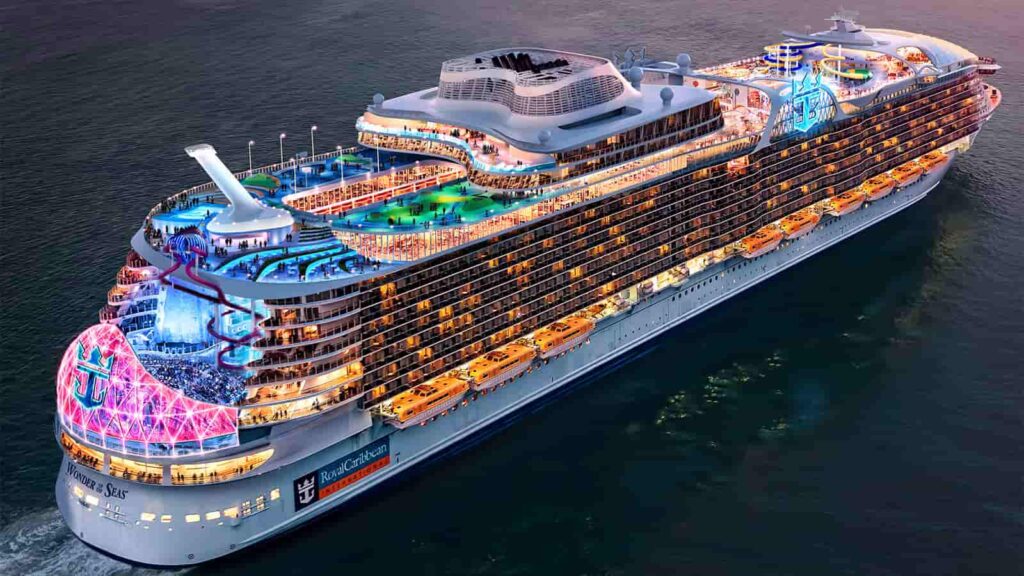
Royal Caribbean Cruises, History, Destinations and Itineraries

Ambassador Cruise Line: Ownership and History
Leave a comment cancel reply.
Your email address will not be published. Required fields are marked *
Save my name, email, and website in this browser for the next time I comment.
Take the Quiz: Find the Best State for You »
What's the best state for you ».
The 8 Worst Cruise Ship Disasters
Somali pirates, icebergs, and coral reefs have ruined many would-be vacations.

Gregorio Borgia | AP

Carnival Triumph: What was supposed to be a four-day jaunt to the Caribbean became an eight-day nightmare when an engine fire left the ship floating in the Gulf of Mexico without power, air-conditioning, or a working septic system.
[ RELATED: Cruise From Hell Set to Limp Ashore Tonight ]

Carnival Splendor: Carnival's Splendor suffered a similar fate as Carnival's Triumph in November 2011. Both were stranded by engine fires, though the Splendor was left floating in the Pacific Ocean. After three days the Splendor and its 4,500 passengers were towed back to the San Diego Bay.

Costa Concordia: This Italian cruise ship ran aground on a reef off the coast of Tuscany, Italy, in January 2012 and toppled onto its side. Of the 4,200 aboard, 32 died and 64 were injured, according to the Associated Press . The half-submerged ship is still being removed.
[ PHOTOS: Costa Concordia Disaster: One Year Later ]

Seabourn Spirits: In 2005, while 100 miles off the coast of Somalia, pirates in speedboats attacked the small cruise ship. The pirates fired on it with machine guns and rocket-propelled grenades before the captain changed course and got away. None of the ship's 300 passengers were hurt, and the ship made it to the Seychelles where the rocket damage was repaired.

Celebrity Mercury: More than 400 of the 2,600 passengers and crew onboard the Mercury were stricken ill in 2010 in what the Centers for Disease control deemed a norovirus outbreak . The virus caused widespread vomiting and other gastrointestinal ills on the ship, which left from Charleston, S.C.

Norwegian Dawn: At least 62 cabins were flooded when a 70-foot wave smashed into the Dawn, in 2005. About 300 of the ship's passengers disembarked early, in Charleston, after the storm had passed.
S.S. Eastland: In 1915, just three years after the Titanic sank, the S.S. Eastland passenger tour ship rolled over while in port in downtown Chicago. More than 840 of its 2,500 passengers died in the accident.

RMS Titanic: The original cruise ship disaster, the "unsinkable ship" struck an iceberg in the North Atlantic on its maiden voyage in 1912 and sank into the icy water, killing more than 1,500 of its 2,200 passengers and crew.
- Scientists Find Way to 'Turn Off' Feeling Cold
- Gitmo Detainee Stages Courtroom Protest
- Dorner's Criticisms Were Valid, Ex-Cops Say
Join the Conversation
Tags: Vacations , Travel
America 2024

Health News Bulletin
Stay informed on the latest news on health and COVID-19 from the editors at U.S. News & World Report.
Sign in to manage your newsletters »
Sign up to receive the latest updates from U.S News & World Report and our trusted partners and sponsors. By clicking submit, you are agreeing to our Terms and Conditions & Privacy Policy .
You May Also Like
The 10 worst presidents.
U.S. News Staff Feb. 23, 2024

Cartoons on President Donald Trump
Feb. 1, 2017, at 1:24 p.m.

Photos: Obama Behind the Scenes
April 8, 2022

Photos: Who Supports Joe Biden?
March 11, 2020

Inflation, High Rates Spook Consumers
Tim Smart May 10, 2024

Stormy Daniels' Testimony Gets Heated
Laura Mannweiler and Lauren Camera May 9, 2024

How Rare Are Brain Worms Like RFK Jr.’s?
Laura Mannweiler May 8, 2024

QUOTES: Israel's Rafah Attack
Cecelia Smith-Schoenwalder May 8, 2024

K-12 Officials Hit Back at Congress
Aneeta Mathur-Ashton May 8, 2024

The Trump Trials, Explained
Lauren Camera and Kaia Hubbard May 8, 2024

How Many Cruise Ships Have Sunk in the Past 100 Years?
Home » How Many Cruise Ships Have Sunk in the Past 100 Years?
Last updated on January 11th, 2024 at 10:24 am
Cruises are one of the safest options for vacations, but in the past 100 years there have been some incidents with cruise ships sinking . Here are some notable ones in the past 100 years.
Titanic (1912) The most famous cruise ship sinking in history, the Titanic sank after colliding with an iceberg.
Empress of Ireland (1914) This large passenger liner sank after colliding with a Norwegian cargo ship, the Storstad, during foggy weather.
Lusitania (1915) For a few months before her sinking, the Lusitania was the largest passenger ship in the world. A casualty of WWI, she was hit by a torpedo from a German U-boat off the south coast of Ireland.
Britannic (1916) Sister ship of the Titanic, during WWI she struck a German naval mine off the coast of a Greek island and sank in less than an hour.
Princess Mafalda (1927) When a propeller shaft broke and damaged the hull of the ship, the Princess Mafalda sank off the coast of Brazil.
Saint Philibert (1931) A smaller cruise ship, the Saint Philibert sailed mainly in the Loire River and the French coastline. She sank in bad weather, but was also overloaded with twice her capacity on board.
Georges Philippar (1932) Unfortuanlety, this ocean liner sank on her maiden voyage. There was an electrical fault that sparked and set wood paneling on fire causing her to sink near Italian Somaliland.
SS Morro Castle (1934) A fire on board would disable the ship as it burned through the electrical cables and hydraulic lines that steered the ship. Her captain had died the evening before of an apparent heart attack. The burning ship drifted ashore in the shallow waters off Asbury Park in New Jersy, USA.
Empress of Britian (1940) Another victim of war, The ship was bombed from above in WWII when she was off the coast of Ireland. She was hit by two 550lb bombs.
Andrea Doria (1956) Struck by another ship, the Stockholm, the Andrea Doria began to list at once. This made most of the lifeboats inaccessible. However, because the ship sank slowly there were fourty six people killed, but 1660 passengers and crew were saved by rescue ships.
Bianca C (1961) The Bianca has the dubious distinction of being sunk twice. As a passenger ferry, it was scuttled by the Germans in WWII. When she was sold to Costa Lines and refitted as a cruise ship, she sank for the second time when there was an explosion in the engine room.
Angelina Lauro (1979) This ship caught fire in port at Saint Thomas. The ship burned for several days and was a total loss. While being towed to a scrapyard later that year, the Angelina Lauro sank.
MS Mikhail Lermentov (1986) On a cruise from Sydney that was on a two-week itinerary to New Zealand, the ship hit some rocks while sailing past Cape Jackson.
SS Admiral Nakhimov (1986) While operating cruises in the Black Sea, this ship collided with a freighter. They had communicated with the freighter’s captain who had assured the SS Nakhimov that they would be able to avoid a collision.
MV Jupiter (1988) This Greek-registered ship conducted cruises around the Mediterranean. She sank just 40 minutes after leaving Piraeus with a study cruise. There were 391 British schoolchildren and 84 adults on the ship, along with 110 crew. One child, one teacher and two crew died.
Achille Lauro (1988) The Achille Lauro had several unfortunate events including a hijacking, two collisions with other ships and four onboard fires. The last fire sank the ship off the coast of Somalia.
MTS Oceanos (1991) This ship, sailing from Greece, sank from excessive flooding that was caused by freak waves. It is believed that the waves broke a ventilation pipe that had not been correctly repaired and caused the flooding to be severe. To their shame, the captain and some crew abandoned the ship. It was the entertainers on the ship who gave alarm and guided passengers to safety. The captain and crew members were later convicted.
Sun Vista (1999) The sun set on this ship due to an engine room fire. The fire cut all power to the ship’s operating mechanisms and she sank in the Strait of Malacca.
SeaBreeze (2000) The boiler in the ship broke off and damaged the ship. This happened in 30-foot seas, which caused the ship to take on water and capsize. The ship had no passengers on board as she was headed into port for engine repairs.
Britanis (2000) While being towards a scrapyard in India, this ship began to take on water and list. As there was no one on board, the list was not corrected. The tugboat towing Britianis cut the ship free and it capzied and sank off the coast of Cape Town.
MV Explorer (2007) A small cruise ship, the MV Explorer was the first cruise ship that was specifically used for cruises to the Antarctic Ocean. She struck an iceberg and sank. Her passengers and crew made it to the lifeboats and were rescued after drifting for five hours.
MS Sea Diamond (2007) Striking a reef 430 feet from shore, the Captain was blamed and jailed for this sinking. The sea charts he was using were incorrect, and had stated that the reefs were 187 feet from shore off the island of Santorini in the Aegean Sea.
Costa Concordia (2012) In modern history, the Costa Concordia is the most famous cruise ship that has sunk. It struck an underwater rock off the coast of Tuscany. The Captain was also blamed for taking the ship off course and too close to the shore line. He was found guilty of manslaughter and sentenced to 16 years in prison.
Eastern Star (2015) This Chinese river cruise ship was caught in a storm as she was sailing to Chongqing. The ship sank in just 50 feet of water, but only 12 people of the 456 onboard survived.
Ocean Dream (2016) This ship has many owners and about half a dozen names. After having been abandoned in Thailand for over a year, she sank when she capsized.
Orient Queen (2020) The Orient Queen would sail from Beirut to the eastern Mediterranean. While in port, with no passengers on board, the ship sank after there was a huge ammonium nitrate explosion at the port. Other ships also in port were damaged, but the Orient Queen was the only one to sink.
RECENT POSTS
Cruise news this week, what does it take to keep cruise passengers fed, royal caribbean cruise line loyalty programs: sailing to rewarding adventures, retirement home vs life at sea on a cruise ship, do i need travel insurance for a cruise, the pros and cons of cruising on a smaller cruise ship.
© 2023 cruiseportadvisor All Rights Reserved.
- Book Excursions
- Anchorage, AK
- Baltimore, MD
- Cape Liberty, NJ
- Charleston, SC
- Ft Lauderdale, FL
- Galveston, TX
- Honolulu, HI
- Jacksonville, FL
- L.A. (San Pedro), CA
- Long Beach, CA
- Montreal, QC
- New Orleans, LA
- Norfolk, VA
- NYC – Brooklyn
- NYC – Manhattan
- Port Canaveral, FL
- Quebec City, QC
- San Diego, CA
- San Francisco, CA
- San Juan, PR
- Seattle, WA
- Vancouver, BC
- Whittier, AK
- Alaska & Pacific Northwest
- Central & South America
- Cruise Ports in Bermuda
- Dominican Republic
- Mexico & Mexican Riviera
- Eastern Canada & Quebec
- New England
- Los Angeles (San Pedro), CA
- Fort Lauderdale, FL
- Cruise Blog
- Cruise FAQ’s
National Geographic content straight to your inbox—sign up for our popular newsletters here

Pictures: 5 Cruise Ship Disasters That Changed Travel
Some good may yet come of Italy's Costa Concordia wreck. At least since Titanic, cruise accidents have sparked new safety standards.
For Hungry Minds
Related topics.
- CRUISE SHIPS
You May Also Like

What to pack for a cruise

How to spend 10 days exploring the Croatian islands

Is the cruise industry ready for the rise in solo travel?

Fish, fire and flavours in the southern Japanese city of Kochi

In search of wildlife on a one-day cruise off the coast of Cornwall, UK
- Environment
History & Culture
- History & Culture
- History Magazine
- Gory Details
- Mind, Body, Wonder
- Paid Content
- Terms of Use
- Privacy Policy
- Your US State Privacy Rights
- Children's Online Privacy Policy
- Interest-Based Ads
- About Nielsen Measurement
- Do Not Sell or Share My Personal Information
- Nat Geo Home
- Attend a Live Event
- Book a Trip
- Inspire Your Kids
- Shop Nat Geo
- Visit the D.C. Museum
- Learn About Our Impact
- Support Our Mission
- Advertise With Us
- Customer Service
- Renew Subscription
- Manage Your Subscription
- Work at Nat Geo
- Sign Up for Our Newsletters
- Contribute to Protect the Planet
Copyright © 1996-2015 National Geographic Society Copyright © 2015-2024 National Geographic Partners, LLC. All rights reserved

How Often do Cruise Ships Sink?
Whether you’ve seen the Titanic, heard about Costa Concordia, or are thinking of booking a cruise, one of the most common questions new cruisers ask to assess their safety is how often cruise ships sink.
To give you a quick insight into how often cruise ships sink, we list below the vessels that have sunk and then go over each in more detail so you get a full understanding of the situation and the likelihood of a cruise ship ever sinking again.

How Many Cruise Ships Have Sunk?
16 cruise ships have sunk since 1912, which was the year the Titanic sank.
The first 6 sinkings up to 1956 were technically all ocean liners rather than cruise ships, but many people think of them as the same because they both can carry thousands of passengers.
See the post was the Titanic a cruise ship for a look at the key differences, some of which made ocean liners more likely to sink than a modern-day cruise ship.
Of the 16 cruise ship sinkings, one was a Chinese River cruise ship, and another was an Estonian cruiseferry, so not technically a cruise ship, but still similar in many ways with the capacity for carrying hundreds of passengers.
Of the ocean-going cruise ships, not all sunk while out at sea. In some instances, they didn’t even have passengers onboard.
Depending on what angle you are asking the question, the below table of cruise ship sinkings should help you find your answer.
Cruise Ship Sinkings Since the Titianic (1912 )
The table below details 16 cruise ships of various cruise vessel types that have sunk since the Titanic in 1912.
We have included vessel type, as arguably it said some of the vessels weren’t technically cruise ships, but we think most people think of the Titanic as a cruise ship, so we have included it and other similar ocean liners.
Considering there are more cruise ships than ever on the seas today, it’s clear that not many cruise ships have sunk in recent times.
How Many Cruise Ships Sink a Year?
With 16 cruise ship sinkings from 1912 to 2022, we can determine that a cruise ship sinks every 6 years 10 months.
On average, that works out as a lot less than 1 cruise ship a year. Just 0.15% of a cruise ship, to be precise.
The answer to this question will vary depending on your chosen timeframe, vessel type, and the reason for sinking.
For example, do you want to include ocean liners and a cruiseferry and do you want to include cruise ships that were empty and on the way to being scrapped?
When Was the Last Time a Cruise Ship Sunk?
The last time an ocean-going cruise ship sank was in 2012, when the Costa Concordia hit a reef off the coast of Italy. Thirty-two people died in the incident. 4200 were rescued.
The sinking of the Costa Concordia is probably the most familiar cruise ship people think of when they ask this question. Although the cruise ship only partially sank, it did not become completely submerged beneath the surface of the water.
Since 2012 there have been no other recorded sinkings of ocean-going cruise ships.
Although the almost empty moored Orient Queen cruise ship sank in 2020 when it was damaged in a huge explosion in Beirut, Lebanon, it capsized that same night. Two crew members died.
How Often Do Cruise Ships Sink?
Thankfully the answer is very rarely, but there have been a few notable instances where cruise ships have met with accidents leading to sinking.
From the table, we can see that in 110 years, 16 cruise ships have sunk. This means, on average, 1 cruise ship sinks every 6.8 years.
However, in more modern times, since 2000, only 4 cruise ships have sunk while out at sea, an average of once every 5.5 years.
It does depend on what type of cruise ship you are considering and the situation in which it sank, at sea or empty at the port, destroyed in an explosion (Orient Queen) or awaiting to be scrapped anyway (Belofin-1 ).
Thankfully, when you think of the number of cruise ships launched into the water and currently sailing oceans, rivers, and great lakes all over the world cases like these are rare. Cruise ships have become much safer over the years and much less likely to ever sink.
As you can see, it’s very rare for a cruise ship to sink, but it does happen on occasion. In most cases, the cause is weather-related or due to hitting an obstacle like a reef or iceberg. However, there’s always the chance of a rogue wave event, which has been suspected of sinking other ship types, but thankfully not a cruise ship.
So now that we’ve answered the question of how often cruise ships sink, let’s take a more in-depth look at each of the four major instances where this unfortunate event has happened.
Well-Known Cruise Ships That Sunk
Here’s a look at some of the most famous (or infamous) cases of cruise ships sinking.
The Titanic is, without a doubt, the most famous cruise ship to ever sink. The vessel hit an iceberg on its maiden voyage in 1912 and went down, taking over 1,500 passengers and crew with it, partly because it did not have enough lifeboats for all passengers.
At the time, the Titanic was the largest and most luxurious ship ever built. It was meant to be an unsinkable vessel, but of course, we all know now that no ship is truly unsinkable.
The sinking of the Titanic is a tragic story that has been told time and time again. It’s one of the most famous maritime disasters in history and has been the subject of numerous books, movies, and TV shows.
4 years later in 1916, the Titanic sister ship, the HMHS Britannic , which had been turned into a hospital ship, was famously sunk by a German mine.
Some people might question, was the Titanic a Cruise Ship ? Technically it was an ocean liner, but because it carried thousands of passengers and is thought to be a cruise ship by many, we have included it.
Costa Concordia
In the past, many ships that sank 100 or so years ago were ocean liners and nothing like the mega-cruise ships carrying thousands of passengers at a time.
The Costa Concordia was a much more recent example of a cruise ship sinking of the large modern-day design many of us know and love.
The vessel hit a reef off the coast of Italy in 2012 and capsized, killing 32 people.
The Costa Concordia was carrying 4,229 passengers and crew at the time of the incident. Thankfully, most people were able to evacuate the ship before it sank.
The captain of the Costa Concordia was later convicted of manslaughter and sentenced to 16 years in prison. One year of that sentence was for leaving the ship early instead of being the last to leave as per one of the duties of a highly-paid cruise captain salary .

In 1994, the MS Estonia sank in the Baltic Sea after hitting a storm, killing 852 people.
The MS Estonia was a cruise ferry carrying 989 passengers and crew at the time of the incident. It was traveling from Tallinn, Estonia to Stockholm, Sweden, when it hit a storm and started taking on water.
The MS Estonia quickly sank, and only 137 people were able to be rescued from the frigid waters. It is considered one of the deadliest maritime disasters of the 20th century.
Dongfang zhi Xing ( Oriental Star or Eastern Star )
The Dongfang Zhi Xing (translated as Oriental Star or Eastern Star ) was a Chinese river cruise ship that capsized in 2015 during a heavy storm. 442 people were killed in the incident.
The Dongfang zhi Xing was carrying 454 passengers and crew at the time of the accident. Only 12 people were able to be rescued from the ship.
The cause of the capsizing was determined to be a severe storm that caused the ship to lose stability and tip over .
Other Cruise Ships That Sank
Prior to 1991, only ocean liners, like the Titanic and cruiseferries had sunk.
Since the year 1991, there have been 8 cruise ship sinkings, or partial sinkings (not including the cruiseferry MS Estonia)
Excluding Costa Concordia and Dongfang zhi xing, which we covered above, there have been 6 other cruise ship sinkings.
MTS Oceanos (1991)
The Oceanos was a French-built Greek-owned cruise ship that sank off the coast of South Africa in 1991. The vessel started taking on water after a series of leaks in the hull.
The ship had a capacity of 550 passengers and 250 crew.
All passengers and crew were successfully evacuated from the ship before it completely sunk. No one was killed or injured in the incident.
However, the captain and some crew members were later arrested and convicted of negligence for fleeing the ship while passengers were still on board.
Sun Vista (SS Galileo Galilei) (1999)
The SS Sun Vista was a cruise ship that caught fire and sank in 1999. The fire started in the vessel’s engine room while it was sailing from Malaysia to Singapore.
All 1,090 passengers and crew were evacuated from the ship before it sank. No one was killed but some people were injured in the incident and needed hospitalization.
Sun Vista was the name at the time of the sinking. The ship was originally built as the ocean liner SS Galileo Galilei and later converted to a cruise ship.
Passengers reportedly sang music from the Titanic movie to keep their spirits up. ( Source ).
MS Sea Diamond (2007)
The MS Sea Diamond was a Finnish cruise ship that sank off the coast of Santorini, Greece, in 2007. The vessel hit a volcanic reef and started taking on water.
The cruise ship had a capacity of 1537 passengers, with 1,195, mostly American and Canadian onboard at the time of the incident.
All passengers and crew were evacuated from the ship before it completely sunk. 2 people were killed in the incident.
This short video captures the cruise ship sinking in its final moments.
SS SeaBreeze (2000)
The SeaBreeze cruise ship sank off the coast of North Carolina in December 2000. This was allegedly due to a boiler breaking off and damaging the ship and the engine room flooding.
Coast guard rescuers at the time did not expect the ship to sink and thought it could be towed to shore by tug boats, but the captain demanded everyone be extracted from the ship as soon as possible.
Subsequently, the ship sank in Panamanian waters, which was potentially convenient as any investigation would have expected to have been much less stringent than those carried out by American investigators had it sunk in very nearby American waters.
There was much suspicion around the sinking because the scrap value of the ship was estimated to be around $5 to $6 million, which was much less than its insurance payout value of $20 million.
The cruise ship had a capacity of 840 passengers and 400 crew.
At the time of the incident, there were 34 people all onboard who were all extracted to safety.
Belofin-1 (SS Monterey ) (2000)
The Belofin-1 had recently been sold for scrap and was meant to be being towed to India, but went via Mexico from Ukraine in 2000 when it sank near just over 90km from Cape Town, South Africa.
The vessel started taking on water and listing, so the tug boats cut here free and allowed how to sink.
The ship was previously known as the SS Monterey and had a capacity for 701 passengers and 360 crew.
MV Explorer (2007)
The MV Explorer was a small Liberian cruise ship and the first of its kind to sail the Antarctic waters.
The ship had departed from Argentina, attempting to follow the route of 19th-century explorer Ernest Shackleton through the Drake Passage,a route well known for its rough seas.
The vessel sank in early November 2007 after hitting an iceberg which made a gash in the hull, allowing water to enter.
The ship had a capacity for a total of 104 passengers and 54 crew.
On the day of the incident 154 passengers, guides and crew were successfully evacuated from the ship before it sunk.
There were no fatalities or injuries as a result of the incident.
The video news report below shows photos of the listing ship and passengers being rescued.
Orient Queen (2020)
The Orient Queen was a Spanish cruise ship that was berthed in Beirut, Lebanon, at the time of a huge explosion of a large amount of ammonium nitrate stored at the port.
The ship suffered severe damage and capsized that night before partially sinking.
It was quite small by modern standards, with a capacity of 370 guests.
Two crew members were killed.
How Many Carnival Cruise Ships Have Sunk?
Carnival is one world’s largest cruise lines, but since it has existed, only one of its vessels has ever sunk, the Costa Concordia in 2012.
Although Costa is an Italian cruise ship company, it is owned by Carnival Corporation.
From its fleet of Carnival brand cruise ships, none have ever sunk or capsized.
There have been less serious incidents, such as in 2010, the Carnival Splendor had to be towed to port after an engine room fire disabled the vessel.
A more recent and well-known incident was that of a fire on Carnival Triumph, since renamed Carnival Sunshine. The ship was left stranded and without power after the generator caught fire.
Infamously the incident led to the ship being referred to as “the poop cruise” because raw sewage backed up onto the passenger decks and passengers had to use plastic bags as a makeshift solution. It’s no wonder they renamed it.
Why Don’t Cruise Ships Tip Over or Sink?
There are many reasons why a cruise ship sinking is such a rare event, and that’s because of how they are designed.
Although many modern-day cruise ships look top-heavy, with relatively small proportions of the ship underwater , it’s no surprise people wonder if a cruise ship can tip over .
They are designed to have a low center of gravity, with most of the weight at the bottom of the ship . A wide, stable hull and other stabilizing factors, such as ballast tanks, stabilizing fins, and bilge keels, keeps a ship upright in even the roughest of sea conditions.
Frequently Asked Questions
How many cruise ships have sunk in the last 5 years.
In the last 5 years since 2017, only one cruise ship has sunk, the Orient Queen, which was damaged in a port explosion in Lebanon.
How Many Royal Caribbean Ships Have Sunk?
There have been no recorded instances of a Royal Caribbean cruise ship sinking.
Has a Disney Cruise Ship Ever Sunk?
No Disney cruise ships have ever sunk or capsized.
Conclusion: What Can We Learn From These Incidents?
While it’s certainly tragic when a cruise ship sinks, it’s important to remember that these incidents are rare.
The Titanic is the most famous example of a cruise ship sinking, but it happened over 100 years ago.
The Costa Concordia, MS Estonia, and Dongfang zhi Xing are more recent examples, but they are still relatively rare.
When you compare the number of cruise ship passengers to the number of incidents, it’s clear that cruising is a safe way to travel.
Of course, no one wants to be on a ship that sinks, so it’s important to do your research before booking a cruise. If you are concerned, check the ship’s safety record and ensure it meets all required safety standards.
Cruising is a great way to see the world and is generally very safe.
Related Posts

What is the Draft of a Cruise Ship? (and Why Does it Matter?)

How Many Doors on a Cruise Ship? (Yes, I Counted)
Leave a comment cancel reply.
Your email address will not be published. Required fields are marked *
Save my name, email, and website in this browser for the next time I comment.
Suri Cruise Allegedly Changed Her Name As She Wants To Cut All Ties With Tom Cruise
The teen appears to be going by her mother's middle name, despite reports saying Tom wants contact with Suri now that she's 18.
- Suri distancing herself from Tom Cruise's name could be a way to set herself apart in the show business world.
- Despite long-standing estrangement, Tom reportedly agreed to financially support Suri's future endeavors post-18th birthday.
- Suri may pursue fashion studies in New York, according to sources, showing independence from parental influence.
There have been reports that Tom Cruise hopes to make contact with his youngest child , daughter Suri , as she turns 18 this year. But a new revelation makes it clear the teen wants nothing to do with her famous dad, even in name.
The casting sheet for her performance in Head Over Heels in New York has gone viral, as it shows that Suri doesn’t seem to be using her father’s last name . The document refers to her as Suri Noelle, which is her mom’s maiden name.

'Mission Impossible': The Cast Ranked From Richest To Poorest
Why suri likely isn’t using tom’s last name.

While this could be a sign Suri wants to distance herself from her father, it could also be her way of setting herself apart from her famous parents, given that she apparently wants to get into show business.
Last year, she seemed to be following in her parent’s footsteps when she made her acting debut in her high school play, an adaption of “The Addams Family: A New Musical” as Morticia Addams. Suri’s bio for the play mentioned many teachers and students, but she didn’t acknowledge either of her parents.
Suri's decision not to mention Tom doesn't come as a surprise. Allegedly, the pair have been estranged for almost a decade, shortly following Tom’s divorce from Katie in 2012. Despite not contesting Katie's plea for full custody during their split, Tom agreed to provide child support.
Tom Will Reportedly Financially Support Suri In Adulthood

According to reports, he was paying $33,000 monthly to support Suri , though this would’ve legally come to an end last month when she turned 18. However, one report says Tom previously agreed to cover Suri’s college and medical expenses beyond her 18th birthday.
“[He’ll cover] medical, dental, insurance, education, college and other extracurricular costs,” a source said. “[He’ll cover] medical, dental, insurance, education, college and other extracurricular costs.”
While there’s speculation Suri may pursue acting, considering her recent roles and her parents' success in the industry, sources cited by Daily Mail in March say she has an interest in studying fashion in New York. Since Holmes and Cruise divorced, Suri has been residing with her mother in the city. Top of Form
Other sources say Suri isn’t interested in Tom’s help establishing herself in adulthood, financially or career-wise from the sounds of it.

Tom Cruise Has A Strict Rule Regarding His Look During Public Events
“Katie’s very clear that Suri doesn’t need Tom’s money to be happy or afford the life they’re accustomed to,” an insider said last month. “Katie’s made plenty of her own money and she can take care of her daughter and send her to whatever college she wants.”
In addition to Suri, Tom has two older children, Connor and Isabella, from his marriage to Nicole Kidman (he even gave a rare update about them as a new photo made its way online of the actor and his oldest kids).
- WEATHER ALERT Coastal Flood Advisory Full Story
- WEATHER ALERT Coastal Flood Warning Full Story
WATCH VIDEOS
Exclusive: Mom speaks out after Air Force rescued her son at sea from a cruise ship
The ship was more than 350 nautical miles off the coast of North Carolina.

A mother from Massachusetts spoke exclusively to ABC News after her 12-year-old son was part of a high-stakes cruise ship rescue by the Air Force, hundreds of miles off shore.
Angela Bridges was aboard the Carnival Venezia cruise ship with her family, including son Aiden, en route to New York City from the Caribbean when he fell seriously ill, concerning the medical team on board.
In an exclusive interview with ABC News, Bridges recalled the moment health professionals said, "'We're going to do an x-ray,'" and told her, "'it looks as though he has a perforation in his bowel -- the next thing that we need to do immediately is get him off the ship."
At the time of the critical medical incident, the ship was outside of North Carolina and more than 350 nautical miles off the coast.
The 920th Rescue Wing of the Air Force, consisting of two HH-60G Pave Hawk helicopters, two HC-130J Combat King II aircraft and two teams of combat rescue officers and pararescuemen, flew to the ship's position to safely extract the patient for transport to the nearest capable medical center.
"We were standing there watching the whole time, and I, just, you know, screaming and crying over the helicopter blades," Bridges recalled. "It was very scary."
"The amazing thing about this rescue is is actually how smooth it went. We went from zero notification to having aircraft ready to having aircraft in the air. And the young man in the hospital in in just a manner of hours," Lt. Col. Dave Underwood told ABC News.
Other cruise-goers watched on as the rescue workers lowered down, and grabbed the boy in critical condition, followed by his mom.
"After that the whole ship like cheered and was screaming and yelling 'yay'," passenger Katie Reed who took video of the moment, told ABC News. "It was really cool to witness and see like you know that this kid got a better chance at life because of like that team was phenomenal."
Aiden is currently recovering at a North Carolina hospital.
"I feel so much gratitude, gratefulness toward all the people who have been integral to my son's recovery," Bridges said. "It's not just the Coast Guard or the Air Force, or the doctors or the nurses. It's all of those people."
"Carnival Venezia's team worked with United States Coast Guard and Air Force officials to adjust its course Saturday so a medical helicopter could rendezvous with the ship when a guest on board needed treatment ashore. The ship then resumed its route to New York, arriving as scheduled Monday morning," Carnival said in a statement to ABC News.
Related Topics
- HEALTH & FITNESS
- MEDICAL EMERGENCY
- CRUISE SHIP

Video captures NJ Transit police saving life of 3-year-old boy

Video: Good Samaritans rush to rescue driver from fiery crash

Pacific castaways' 'HELP' sign sparks US rescue mission

Georgia sorority sisters rescue mother, kids from sinking car
Top stories.

Dozens of protesters arrested as police clear encampment at Penn

Vandals cause $100,000 worth of damage to apartment building
- 35 minutes ago

Fla. sheriff releases bodycam video of airman fatally shot by police

Delaware County Council votes to fire emergency services director
- 31 minutes ago

SW Philly triple shooting leaves man dead; girl grazed by bullet
Man survives being bitten by sharks in 'feeding frenzy' in Bahamas
- 3 hours ago
Fake rideshare driver wanted for sex assault could be anywhere: police
Experts warn about dangers of 'gas station heroin' | Investigation

US and Allies Sink China-Made Naval Vessel in War Drill
T he U.S., the Philippines, and Australia have sunk a made-in-China warship in a simulated attack on an enemy vessel as China doubles down on its sweeping territorial claims in the region.
Land, air, and sea assets pummeled the 325-foot BRP Lake Caliraya, a replenishment oiler the Philippine Navy previously acquired from China, off the west coast of the Taiwan-facing province of Ilocos Norte on Wednesday morning.
The drill, dubbed SINKEX, was part of the weeks-long Balikatan exercise held annually between the U.S. and the Philippines. This year's edition, the largest yet, saw some 17,000 armed service members participate, including from Australia and France.
The exercise is taking place against the backdrop of heightened friction between Beijing and U.S. defense treaty ally Manila. China claims sovereignty over most of the South China Sea, including areas within the Philippines' internationally recognized exclusive economic zone. This has led to increasingly tense standoffs over the past year in disputed waters, including two in March that left several Philippine sailors injured .
"Incorporating as many combined sensing and shooting platforms as possible, the objective of the maritime strike exercise was to test and validate the combined fires networks," read the U.S. Indo-Pacific Command statement on Wednesday's maritime strike exercise.
After two hours, the BRP Lake Caliraya sank beneath the waves at 10:49 a.m. According to the U.S. statement, the ship was kept afloat as long as possible to "maximize the training value."
"We know the lethality and capability of our munitions to sink maritime targets," U.S. Marine Col. Douglas Krugman was quoted as saying. "This exercise was about the collective capability of our combined fires networks and increasing interoperability to sense and shoot targets from a variety of Philippine, U.S. and Australian land, sea and air platforms."
A variety of munitions were fired by warships, fighter planes, and land-based platforms during the exercise, including Spike anti-tank guided missiles, artillery shells, and the South Korea-developed surface-to-surface C-Star cruise missile.
"Balikatan 2024 made history today through the first-ever launch of an anti-ship cruise missile by the Philippine Navy during a Maritime Strike activity in the South China Sea. [Philippine guided-missile frigate] BRP Jose Rizal fired one SSM-700K C-Star and successfully struck the target, " freelance defense journalist Aaron-Matthew Lariosa wrote in a social media post.
Last month, the Chinese state-run media outlet Global Times condemned the choice of the Lake Caliraya , which was constructed at the Taizhou Zhongxing Shipyard in eastern China's Zhejiang province. "The Philippine side is preparing to use it as a target in a simulated 'enemy ship' scenario, showing clear provocative intent," the article said.
Roy Vincent Trinidad, a Philippine Navy spokesperson, told the media several days later that the selection was "just coincidental. Don't put any meaning to that."
However, the model ship used to represent the Lake Caliraya bears a striking resemblance to China's first two aircraft carriers, the Liaoning and Shandong , Max Montero, an X account focused on Philippine maritime security pointed out, sharing a photo attributed to Col. Michael Logico, director of the Philippine military's Joint and Combined Training Center.
"No military drill should target or harm the interests of any third party, nor should it undermine the trust between countries and affect peace and stability in the region," Chinese Foreign Ministry spokesperson Lin Jian said ahead of the drill, during a regular press conference on Tuesday.
"Relevant countries need to stop infringement and provocations at sea, stop stoking confrontation, and contribute to peace and stability in this region," he said.
The Chinese Foreign Ministry didn't immediately respond to a written request for comment.
Start your unlimited Newsweek trial

Kelley Blue Book
Change Your ZIP Code
Kelley Blue Book® Values and pricing are based in part on transactions in your area. Your ZIP code also helps us find local deals and highlight other available offers.
Adaptive Cruise Control: How Does It Work?
When carmakers pitched cruise control to the American public more than half a century ago, they framed it as a way to maintain a safe, consistent speed on the highway and a path to conserving fuel. Although the fuel savings were minimal, both claims were accurate.
Simple to use, all you need to do is turn on the system in your vehicle , reach your desired cruising speed, and set it. The system then assumes control of the accelerator, maintaining the set speed until the driver engages the brake. Easy peasy.
Automotive engineers tweaked around the edges of cruise control for the next 35 years. However, cruise control didn’t evolve much beyond the first system that found its way into the 1958 Chrysler Imperial.
By the early 1990s, Japanese carmakers were adding a form of forward collision warning to their cruise control, but it was still up to the driver to react and apply the brakes. Not until Mercedes-Benz developed its Distronic cruise control did cruise control with self-braking make its first public appearance. Mercedes first featured it on its 1999 S-Class.
In essence, not only did the 1999 S-Class introduce the driver-aid technology adaptive cruise control (ACC), but it also set the cornerstone of the foundation for self-driving vehicles.
Cruise control is still the more prolific of speed controls offered on today’s new cars, but adaptive cruise control has started gaining ground. More car models provide it as standard or as an available option. But, what exactly is adaptive cruise control, and how does it work? Let’s see.
What Is Adaptive Cruise Control?
Adaptive cruise control systems vary in sophistication from carmaker to carmaker and sometimes even model to model. They also vary in name. For example, Genesis calls it Smart Cruise Control, while BMW identifies it as Distance Control. However, in a nutshell, the feature holds a safe preset speed while maintaining a safe following distance from the traffic before it. ACC essentially makes commuting and road trips so much easier.
Depending on the system, here’s what else the feature can do:
- Set the distance . Most systems allow you to set the following distance within parameters like one, two, or three cars.
- Stop the vehicle in traffic . Some ACC systems will bring the car to a complete stop if the traffic before it stops. However, they won’t self-accelerate when traffic begins moving again.
- Stop and start in traffic . Some systems will bring the vehicle to a complete stop and then automatically accelerate as the flow of traffic resumes.
- Work at low speeds in city traffic . Other systems use an add-on called traffic-jam assist designed to fully function in low-speed stop-and-go traffic found on city streets or logjammed highways.
- Slow down at curves . Moreover, there are ACC systems capable of working with your vehicle’s GPS mapping to anticipate approaching curves, slowing the car going into the curve if it determines the preset speed is too high.
- Adjust to speed-limit variations . Some systems working in conjunction with traffic-sign recognition or GPS will adjust the speed according to speed-limit variations.
- Appear in head-up display . The ACC will show up in your view for vehicles equipped with head-up display.
How Does Adaptive Cruise Control Work?
Think of ACC as cruise control with a Ph.D. It can use radar, laser, binocular computer vision systems, a forward-aimed camera, or some combination of these technologies to track the traffic ahead of your vehicle. It senses when that traffic flow slows or stops, reacting to maintain the preset following distance.
As stated earlier, some systems will bring your vehicle to a complete stop to match traffic flow. Even more intelligent systems can then accelerate as the traffic flow resumes. These are called assisting, predictive, and multi-sensor systems.
Benefits and Limitations of Adaptive Cruise Control
Warming up to ACC required a long time for us. Early systems didn’t allow for presetting the maintained following distance. Consequently, a vehicle six or seven car lengths ahead of you moving into your lane became almost an airbag-deploying event. However, as ACC systems evolved and improved, we became more accustomed to them. We now look at regular cruise control as barbaric.
Reducing driver stress : No question, the number one benefit of ACC is allowing the driver to relax a bit. The system assumes the responsibility of slowing and accelerating to adjust to traffic flow. It doesn’t mean the driver gives up control, but the system assumes the workload of keeping pace with the traffic flow.
Stop and go : With more intelligent systems, ACC assumes complete control of braking and accelerating. In other words, it can bring the vehicle to a full stop and then accelerate as the flow of traffic resumes. Some systems will disengage after stopping and leaves it to the driver to push the “Resume” button or tap the accelerator to get moving again. However, more sophisticated systems will accelerate themselves from a complete stop.
Easy to use : For drivers not able (or willing) to read a car manual before setting out on the highway, you can fiddle with the ACC system and pick it up with little practice.
Not autonomous : Regardless of an ACC system’s sophistication, the driver must stay engaged. ACC can’t read the minds of vehicles around it. It only reacts to what other cars do. Anticipating the actions of other drivers remains your responsibility.
No stop and go : ACC systems that don’t offer a full stop will slow the vehicle but require the driver to bring it to a full stop when the flow of traffic stops. Even if an ACC system does bring the vehicle to a full stop, it may still require the driver to re-engage the system to get back under way.
No lane change : An ACC system itself can’t change lanes automatically to maintain the preset speed. Therefore, if you’re not paying attention as the driver, you may find your vehicle is going several miles an hour below the set speed. This is because your vehicle has gradually pulled up behind a slow-moving car, and you have steadily slowed to its pace. This is another reason you should stay engaged.
What Is the Difference Between Adaptive Cruise Control and Self-Driving?
There continues to be plenty of confusion about self-driving or autonomous systems, what they are, and how they operate. We’ll get to that next. However, the major difference between adaptive cruise control and a self-driving system is, ACC is simply a component of a driverless system. That is to say, ACC provides automatic braking and acceleration in a self-driving system that also includes steering, and sometimes automatic lane changing.
What Is the Difference Between Level 2 and Level 3 Autonomous Driving?

We won’t take you through all levels of driving automation . They begin with no automation and wrap up with full automation, including vehicles without pedals or steering wheels. See the chart above from SAE International.
What we will contrast is Level 2 and Level 3. Spoiler alert: The difference is significant.
Level 2 – To qualify as Level 2, a vehicle must have at least two driver-assistance technologies. This typically includes ACC and another technology like lane-centering assist or lane-keeping assist . With these technologies, the vehicle can steer, accelerate, and brake on its own in certain conditions. Level 2 still requires the driver’s hands on the wheel and eyes on the road. It is the current state of automation.
Level 3 – If Level 2 is partial self-driving, Level 3 is conditional full automation. A Level 3 self-driving system uses a wide spectrum of driver-assistance features and artificial intelligence (AI). These technologies collude to react to and make decisions about the vehicles’ ever-changing situations. In a Level 3 vehicle, the driver can completely surrender control of the vehicle’s operation on specific roads. The driver must be prepared to resume control in case of an emergency but otherwise doesn’t have command of the car. That is, the driver’s hands can be off the steering wheel and their attention elsewhere.
Although the state of autonomous driving today is Level 2, a few carmakers are on the precipice of Level 3. For example, Tesla’s Enhanced Autopilot , Ford’s BlueCruise , the Mercedes Drive Pilot, and General Motors’ Super Cruise bring the potential for Level 3. A few over-the-air software tweaks will turn the potential into reality. However, like a stood-up date who is all dressed up with nowhere to go, you will not find Level 3-designated highways as of yet.
What Carmakers Call Their Adaptive Cruise Control Systems
Is anyone surprised that carmakers can’t seem to agree on a single term for adaptive cruise control? How about “adaptive cruise control?” We can sort of forgive Mercedes for its Distronic cruise control. It was first, after all. However, can someone define “distronic?” Anyone, anyone? Nope because it’s a made-up word. So, why not now use adaptive cruise control? Mercedes isn’t alone. Many carmakers use unique terms for ACC. Some call it adaptive cruise control as the root and then tack something onto it.
Here’s a rundown of the terms the various carmakers use for ACC, even those that simply call it adaptive cruise control.
- Acura – Adaptive Cruise Control with Low-Speed Follow
- Alfa Romeo – Adaptive Cruise Control Plus with full stop
- Aston Martin – Adaptive Cruise Control
- Audi – Adaptive Cruise Control with Stop and Go
- Bentley – Adaptive Cruise Control
- BMW – Distance Control
- Buick – Adaptive Cruise Control
- Cadillac – Adaptive Cruise Control
- Chevrolet – Adaptive Cruise Control
- Chrysler – Adaptive Cruise Control with Stop and Go
- Dodge – Adaptive Cruise Control
- Ford – Adaptive Cruise Control with Stop-and-Go
- GMC – Adaptive Cruise Control
- Genesis – Smart Cruise Control
- Honda – Adaptive Cruise Control
- Hyundai – Smart Cruise Control with Stop and Go
- Infiniti – Intelligent Cruise Control
- Jaguar – Adaptive Cruise Control
- Jeep – Adaptive Cruise Control with Stop and Go
- Kia – Smart Cruise Control with Stop and Go
- Land Rover – Adaptive Cruise Control with Stop and Go
- Lexus – Dynamic Radar Cruise Control
- Lincoln – Adaptive Cruise Control with Stop-and-Go
- Lucid – Adaptive Cruise Control with Speed Limit Assist
- Maserati – Adaptive Cruise Control with Stop and Go
- Mazda – Mazda Radar Cruise Control with Stop and Go
- Mercedes-Benz – Distronic Plus
- Mini – Adaptive Cruise Control
- Mitsubishi – Adaptive Cruise Control
- Nissan – Intelligent Cruise Control
- Polestar – Adaptive Cruise Control
- Porsche – Adaptive Cruise Control
- Ram – Adaptive Cruise Control with Stop, Go and Hold
- Rivian – Adaptive Cruise Control
- Rolls Royce – Active Cruise Control
- Subaru – Advanced Adaptive Cruise Control
- Tesla – Traffic-Aware Cruise Control
- Toyota – Dynamic Radar Cruise Control
- Volkswagen – Adaptive Cruise Control
- Volvo – Adaptive Cruise Control
Is Adaptive Cruise Control Worth It?
We say yes. This is particularly true if you do a lot of highway driving. Moreover, the more sophisticated systems with full stop and start or a low-speed traffic-jam feature work great for city driving. Typically, ACC gets included in a trim level or some sort of optional driver-assistance package on new cars. You will rarely find it listed as a stand-alone option.
For example, the Hyundai Elantra SEL ($22,795 with destination fee) offers its Smart Cruise Control with Stop and Go in its optional Convenience Package ($1,900). It also includes forward collision warning with automatic emergency braking, Junction-Turning Detection, navigation, wireless phone charging, heated front seats, and more. We’d say that’s a bargain. On the other hand, the same ACC system is standard for the $27,395 Elantra Limited.
Can I Add Adaptive Cruise Control to My Car?
Yes, you will find aftermarket adaptive cruise control kits available. Depending on the features, they range in cost from $250 to nearly $4,000. That’s just the cost of the kits. The installation will add even more. For most involved electric-system installations, it’s best to get them done by a dealership or certified mechanic . We believe that’s the case with an ACC system. Installation cost depends on the sophistication of the system and the vehicle model.
Check out the below video from our sister site Autotrader that explains what you need to know about adaptive cruise control.
Read More Stories on Car Buying Features:
- Tesla Adds Driver Attention Monitoring to Model 3, Model Y with Remote Update
- BlueCruise: Ford’s New Hands-Free Driving System
- Hands-Free Towing Comes to 2022 GMC Sierra
- Traction Control: How It Works and When to Use It
For Sale Near You
What does adaptive cruise control do?
Using radar, laser, a forward-pointed camera, or some combination of the three, adaptive cruise control systems in vehicles hold a preset safe speed, while maintaining a safe following distance.
Which cars have adaptive cruise control?
ACC is either standard or available on most new cars. Some carmakers call it by a different name. For example, BMW calls its system Distance Control. When offered as an option, adaptive cruise control is usually bundled with other driver-assistance technologies.
How do you turn off adaptive cruise control?
Turning off adaptive cruise control works differently on every car. Typically, you apply the brakes to stop using the function. You can also hit the “cancel” button or turn off the function entirely. Check your car manual for specific instructions.
Sign up for Kelley Blue Book newsletters
The best cars and best deals delivered to your inbox
Take the Next Step.
Price cars, trucks and SUVs on KBB.com
Latest News

Nissan Tells Dealers: You Can Advertise Prices Below Invoice

Tesla’s Charger Layoffs Might Not Slow Charging Growth

Recall Alert: 2024 Cadillac XT5

Recall Alert: Hyundai Elantra, Venue, Kona

What’s Making Car Repair So Expensive? Sensors

How to Launch a Boat and Protect Your Truck

Freeway vs. Highway: Differences to Understand

E85 Guide: Everything You Need To Know About Flex Fuel
The '70s Thriller That Did Sinking Ships Better Than 'Titanic'
This disaster movie turned the genre upside down.
The Big Picture
- The Poseidon Adventure is a gripping disaster film with realistic and intense visual effects that bring the sinking ship to life.
- The film features a diverse and relatable cast of characters, each with their strengths and contributions to the group's survival.
- Compared to Titanic , The Poseidon Adventure offers a more engaging and unpredictable storyline, making it a must-watch for fans of disaster films.
Titanic is an epic movie, one that chronicles the final hours of the fateful ship in excruciating detail, deftly switching between fact and fiction to weave its narrative. Every moment is a testament to director James Cameron 's insistence upon complete accuracy, right up to how the stars looked in the sky that night. But what if you were told that, as good as Titanic is, there's another film about a sinking ship that is arguably more engaging? That film is The Poseidon Adventure , the 1972 film that turned the disaster genre upside down. Literally.
The Poseidon Adventure
A group of passengers must embark on a harrowing struggle for survival after a rogue wave capsizes their cruise ship at sea.
What Is 'The Poseidon Adventure' About?
The Poseidon Adventure , one of a spate of films with a who's who of 1970s celebrities , begins aboard the SS Poseidon, with company representative Linarcos ( Fred Sadoff ) ordering Captain Harrison ( Leslie Nielsen ) to empty ballast and proceed to Athens at full speed, which Harrison does reluctantly. The focus then switches to the ship's dining room that evening, which so happens to be New Year's Eve. Among the passengers are Detective Lieutenant Mike Rogo ( Ernest Borgnine ); his wife Linda ( Stella Stevens ); Reverend Frank Scott ( Gene Hackman ), who is struggling with his faith; Susan ( Pamela Sue Martin ) and her brother Robin ( Eric Shea ), en route to meet up with their parents. Also on the ship are retired store owner Manny ( Jack Albertson ) and his wife, Belle ( Shelley Winters ); James Martin ( Red Buttons ), bachelor; and Nonnie ( Carol Lynley ), the ship's singer (who so happens to be singing the Oscar-winning "The Morning After"). The captain is called back to the bridge when an emergency report is received about an undersea quake that has sent a huge wave toward them. It's too late for any evasive maneuvers, though, and the tsunami flips the ship over , killing and injuring almost everyone on board.
Once the ship becomes relatively stable, the survivors assess their situation. Scott strongly urges them to make their way upwards towards what is now the exposed outer hull. Unable to convince everyone, Scott leads a small group, the aforementioned passengers, to the galley door up above, and with the help of Acres ( Roddy McDowall ), an injured waiter up top, positions the Christmas tree for use as a ladder. Just as Scott reaches the top, a series of explosions rocks the ship, causing seawater to flood the ballroom. Those who stayed behind try desperately to climb up the tree, but the weight of everyone knocks the tree into the water, resulting in their deaths.
How Do the Survivors Escape the Ship in 'The Poseidon Adventure'?
The ragtag group of survivors finds the galley, only to discover the fire door, hot to the touch, is shut, forcing them to take another route. They climb the underside of a nearby staircase, with the water nipping at their heels. Denied access to the main passageway due to an obstacle, the group heads towards an access tunnel into the funnel and climbs, only for more explosions to rock the boat and send Acres to his death. His loss instigates an argument between Scott and Rogo, which pauses when another group of survivors happens by. Led by the ship's medic, they are heading towards the bow of the ship. Scott is still adamant that the engine room offers their best chance, so Rogo gives him five minutes to find it before they turn tail and walk with the other group. Scott does find it, only the engine room is on the other side of a flooded corridor, so he takes a rope, secures it, and tries to swim to the other side with the other end for the others to follow. He gets trapped, however, prompting Belle, a former trained swimmer, to dive in and free him .
Sadly, the act leads to Belle suffering a fatal heart attack, forcing a shattered Manny to move on without her. They make their way to the engine room door across a catwalk, but another explosion sends Linda to her death and ruptures a nearby pipe, which begins spewing scalding-hot steam. Scott, feeling that God has abandoned them outright, leaps for a burning-hot valve wheel to shut off the steam, and slowly does so. But Scott can't get back to the group, so he tells Rogo to lead them from there and lets go of the wheel, falling into the flaming oil below. The remaining survivors, at long last, enter the propeller shaft room, where they bang on the hull to catch the attention of any rescuers. They are successful, and the rescuers cut a hole through the hull and pull the six out, the only six to survive the disaster .
'The Poseidon Adventure's Visual Effects Won an Oscar
Titanic is a stunning achievement in visual effects , aided by CGI to bring the demise of the mighty ship to life. The Poseidon Adventure couldn't lean on those same tools and, as a result, the catastrophe that befalls the SS Poseidon seems that much more real. The oncoming wave that swallowed the ship, followed by the chaos in the ballroom as the ship is turned upside-down, is one of the greatest disaster movie sequences of all time. So effective, so visceral, that The Poseidon Adventure landed a special Academy Award for technical achievement . One example of the magic behind the movie is the hydraulically controlled dining room set, built to tilt as much as 45 degrees, with an "after" set, with the room's table on the ceiling and the skylight on the floor, that completed the effect.
The set itself had the cast and crew navigate around the fire, through ductwork and shafts, navigating through reversed ladders, stairwells, and twisted steel. The Poseidon Adventure doesn't cheat the audience. The film looks consistently like what a ship would look like had something similar happened in real life. The passengers aboard Titanic didn't face obstacles to reach the top (well, the steerage class did, briefly), but instead faced obstacles once they were already on the top deck, trying to find a way off the boat safely. The SS Poseidon seems almost determined to keep the group away from freedom at every turn. The film is also aided by the fact that these effects and set designs are the result of a situation that isn't implausible, or at the very least not all that far removed from an "unsinkable" sinking ship .
'The Poseidon Adventure' Boasts Superior Characters
The Poseidon Adventure boasts no less than five Academy Award winners, and it shows. Each character has a depth to them that makes them more relatable. Not that Titanic does not, but if you don't relate to Jack ( Leonardo DiCaprio ) or Rose ( Kate Winslet ) , it's unlikely you're going to find yourself relating to the two extreme groups of people aboard: the powerful first class, and the poor (but far more fun) steerage class. The wide variety of personalities found in the survivor group in The Poseidon Adventure gives the viewer more options to find someone they can relate to, someone they can look at as an example of how they would react in a similar situation. The characters draw you in, engaging the viewer in caring about how their story ends .
More importantly, the characters all have something to contribute . Robin, fascinated by the ship, knows enough about it to confirm that Scott's assertion to head to the engine room is the right call, as that is where the hull is at its thinnest. Acres and Rogo aid the others in ascending the funnel. Belle jumps into the water to save Scott and the group, utilizing skills that haven't been used in years, ultimately sacrificing herself for the survival of the others. Scott is able to encourage Manny to keep moving, that he still has something to live for after the death of Belle. Rogo leads the group on the last leg of their journey. The most fascinating story is Scott's, the minister at odds with God. He takes the leadership role when no one else would step forward after the disaster . He rails against God, berating Him for having abandoned them, cursing at Him as he closes the valve, becoming a Christ figure whose "Why hast though forsaken me" moments lead into his selfless act that clears the way to freedom, at the loss of his own life.
Before Kate Winslet, This Oscar-Winning Actress Was in the Running for 'Titanic's Rose
Overall, in comparing the two films it becomes a battle between the sheer spectacle and love story of Titanic versus the determined pursuit oof surivival in The Poseidon Adventure . Each has its merits, of course, but if you truly want to be engaged in a sinking ship film where the ending is unknown as opposed to a countdown to a well-known maritime casualty , do yourself a favor and check out The Poseidon Adventure . You'll fall head over heels for it.
The Poseidon Adventure is available to rent on Apple TV+ in the U.S.
WATCH ON APPLE TV+

IMAGES
VIDEO
COMMENTS
The Sinking of MV Jupiter (October 1988) The MV Jupiter, a Greek cruise ship, started sailing in 1961 as the Moledet. On October 21, 1988, it sank after leaving Piraeus, Greece. An Italian freight ship hit it. The ship had nearly 400 British students, 84 adults, and 110 crew members on a study cruise.
Associated Press. 0:00. 1:35. GIGLIO, Italy — Ten years have passed since the Costa Concordia cruise ship slammed into a reef and capsized off the Tuscan island of Giglio. But for the passengers ...
The Italian captain went back onboard the wreck for the first time since the sinking of the cruise ship on January 13, 2012, as part of his trial for manslaughter and abandoning ship.
MS Costa Concordia in Palma, Majorca, in 2011. Costa Concordia (call sign: IBHD, IMO number: 9320544, MMSI number: 247158500), with 3,206 passengers and 1,023 crew members on board, was sailing off Isola del Giglio on the night of 13 January 2012, having begun a planned seven-day cruise from Civitavecchia, Lazio, Italy, to Savona and five other ports. The port side of the ship struck a reef at ...
The sinking of the Costa Concordia: 10 years later. Ten years after the deadly Costa Concordia cruise line disaster in Italy, survivors still vividly remember scenes of chaos they say were like ...
GIGLIO PORTO, Italy — The curvy granite rocks of the Tuscan island of Giglio lay bare in the winter sun, no longer hidden by the ominous, stricken cruise liner that ran aground in the turquoise ...
Costa Concordia disaster, the capsizing of an Italian cruise ship on January 13, 2012, after it struck rocks off the coast of Giglio Island in the Tyrrhenian Sea.More than 4,200 people were rescued, though 32 people died in the disaster.Several of the ship's crew, notably Capt. Francesco Schettino, were charged with various crimes.. Construction and maiden voyage
She is one of the survivors of the shipwreck of the Costa Concordia, the luxury cruise liner that capsized after hitting rocks just off the coast of the small Italian island of Giglio on Jan. 13 ...
Associated Press. Jan. 12, 2022 2 PM PT. GIGLIO, Italy —. Ten years have passed since the Costa Concordia cruise ship slammed into a reef and capsized off the Tuscan island of Giglio. But for ...
FILE— Oil removal ships near the cruise ship Costa Concordia leaning on its side Monday, Jan. 16, 2012, after running aground near the tiny Tuscan island of Giglio, Italy, last Friday night. Italy on Thursday, Jan. 13, 2022, is marking the 10th anniversary of the Concordia disaster with a daylong commemoration, honoring the 32 people who died ...
9. SS Morro Castle. Cruise vessel SS Morro Castle was burned and sank in September 1934, claiming the lives of over 135 passengers and crew members. A total of 318 passengers and 239 crew were aboard the ship on its journey from Havanna to New York.
On May 27, 2023, the Carnival Sunshine cruise ship encountered a violent storm off the coast of North Carolina, sending shockwaves through the cruise industry and raising concerns about passenger safety. While the ship eventually made it back to port safely, the incident served as a stark reminder of the unpredictable nature of the open sea and ...
Here, in chronological order, are the 24 cruise ships that have sunk in history: 1. April 1912: Titanic. Titanic Ocean Liner. Perhaps the most infamous cruise ship sinking took place on April 14 ...
In 2023, a cruise ship sank resulting in loss of lives and property. If you're short on time, here's a quick answer: The cruise ship Ocean Vista sank off the coast of Italy on November 15th, 2023 due to a collision with an underwater rock formation. Over 200 passengers went missing and are presumed dead in one of the worst cruise ship ...
Cruise ships have sunk in the past, but the instances are very rare. In the last 100 years, only 22 cruise ships have sunk, and some of those sinkings were either while berthed or while being towed. Generally, the modern safety features on cruise ships mean that very few lives are lost if ships ever sink.
Furthermore, cruise lines actively monitor the weather in order to avoid storms wherever feasible. Having said that, you've probably wondered how many cruise ships have sunk at some point. If river cruise ships and ocean liners are included, around 20 or more cruise ships have sunk over our recent 100 years of history.
Only twenty-four cruise ships—both river and ocean liners—have sunk since 1912. It's important to remember that some cruise ship capsizings happen while the ship was being towed or berthed. Because cruise ships are built sturdy and have current safety mechanisms, we can explain why there aren't many cruise ship sinkings.
Feb. 14, 2013, at 3:54 p.m. The 8 Worst Cruise Ship Disasters. Gregorio Borgia | AP. Carnival Triumph: What was supposed to be a four-day jaunt to the Caribbean became an eight-day nightmare when ...
Cruises are one of the safest options for vacations, but in the past 100 years there have been some incidents with cruise ships sinking. Here are some notable ones in the past 100 years. Titanic (1912) The most famous cruise ship sinking in history, the Titanic sank after colliding with an iceberg. Empress of Ireland (1914) This large passenger ...
Pictures: 5 Cruise Ship Disasters That Changed Travel. Costa Concordia The cruise ship Costa Concordia lies partially sunk just a few hundred yards from the rocky coast of the Italian island of ...
Thankfully, very few cruise ships have actually sunk in modern history. Even so, the Titanic's sinking impacted maritime law so much that there are more than enough lifeboats for all passengers and crew onboard any given sailing. Within the last 111 years, over 20 cruise ships and ocean liners have sunk.
MTS Oceanos was a French-built and Greek-owned cruise ship that sank in 1991 when she suffered uncontrolled flooding. Her captain, Yiannis Avranas, and some of the crew were convicted of negligence for fleeing the ship without helping the passengers, who were subsequently rescued thanks to the efforts of the ship's entertainers, who made a mayday transmission, launched lifeboats, and helped ...
From the table, we can see that in 110 years, 16 cruise ships have sunk. This means, on average, 1 cruise ship sinks every 6.8 years. However, in more modern times, since 2000, only 4 cruise ships have sunk while out at sea, an average of once every 5.5 years.
Suri distancing herself from Tom Cruise's name could be a way to set herself apart in the show business world. Despite long-standing estrangement, Tom reportedly agreed to financially support Suri's future endeavors post-18th birthday. Suri may pursue fashion studies in New York, according to sources, showing independence from parental influence.
A mother from Massachusetts spoke exclusively to ABC News after her 12-year-old son was part of a high-stakes cruise ship rescue by the Air Force, hundreds of miles off shore. Angela Bridges was ...
The U.S., the Philippines, and Australia have sunk a made-in-China warship in a simulated attack on an enemy vessel as China doubles down on its sweeping territorial claims in the region. Land ...
Find out about adaptive cruise control, what it is, how it works and more. Also learn the history because a form of it has been in existence since the 1950s.
The Poseidon Adventure is a gripping disaster film with realistic and intense visual effects that bring the sinking ship to life.; The film features a diverse and relatable cast of characters ...
After a dazzling first season, "Interview With the Vampire" moves in a lower-key mode through its second, a perhaps inevitable byproduct of Lestat's diminished role.